When considering unique ways to design a kitchen space, many opt for extremely dark tones. A black kitchen looks striking and unusual, but, like any beautiful solution, this design has nuances and pitfalls to consider.
All About Decorating a Black Kitchen
What to Combine With
— white
— gray
— red
— beige
— bright colors
— wood
What to Consider
— Room size
— Lighting features
— Material selection
Features of a Black Interior
The design of black kitchens largely depends on how this color is presented.
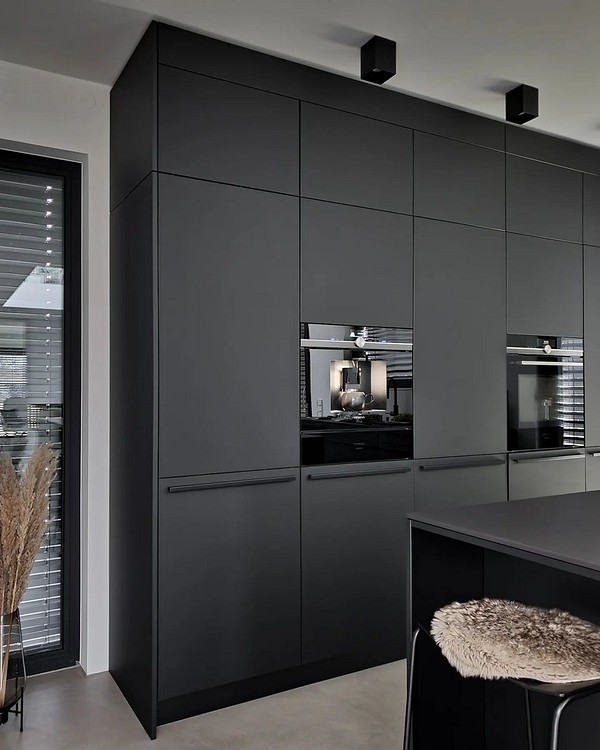
It’s multifaceted and meaningful, so on one hand, you can implement the boldest fantasies with it, but on the other, it can easily ruin everything and make staying in the room unbearable.
This color is inseparably linked to the concept of style and respectability. Elegant evening dresses, luxury cars, expensive leather furniture — luxury items often come in rich shades of raven’s wing. And a kitchen in such a palette also looks dignified and wealthy.
It’s about strictness and asceticism: the appearance of the space will be much more restrained and even harsh compared to rooms in life-affirming orange, yellow, and beige tones.
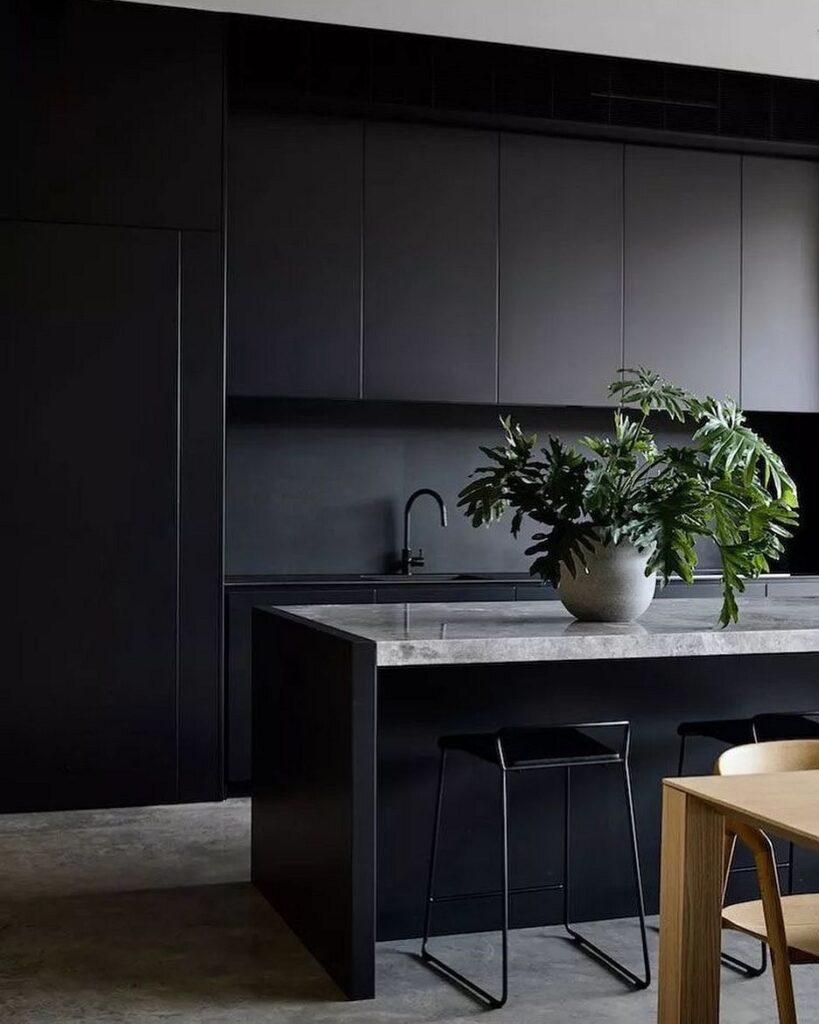
At the same time, it’s more than just a regular achromatic: it’s essentially the absence of color. It can be frightening and oppressive if used in large quantities. In an anthracite color scheme, people become more nervous and irritable, and they may feel an inexplicable sense of melancholy. But if you don’t overdo the black and control its quantity, it shifts from aggressive and anxious to mystical and mysterious, creating a special atmosphere in the room.
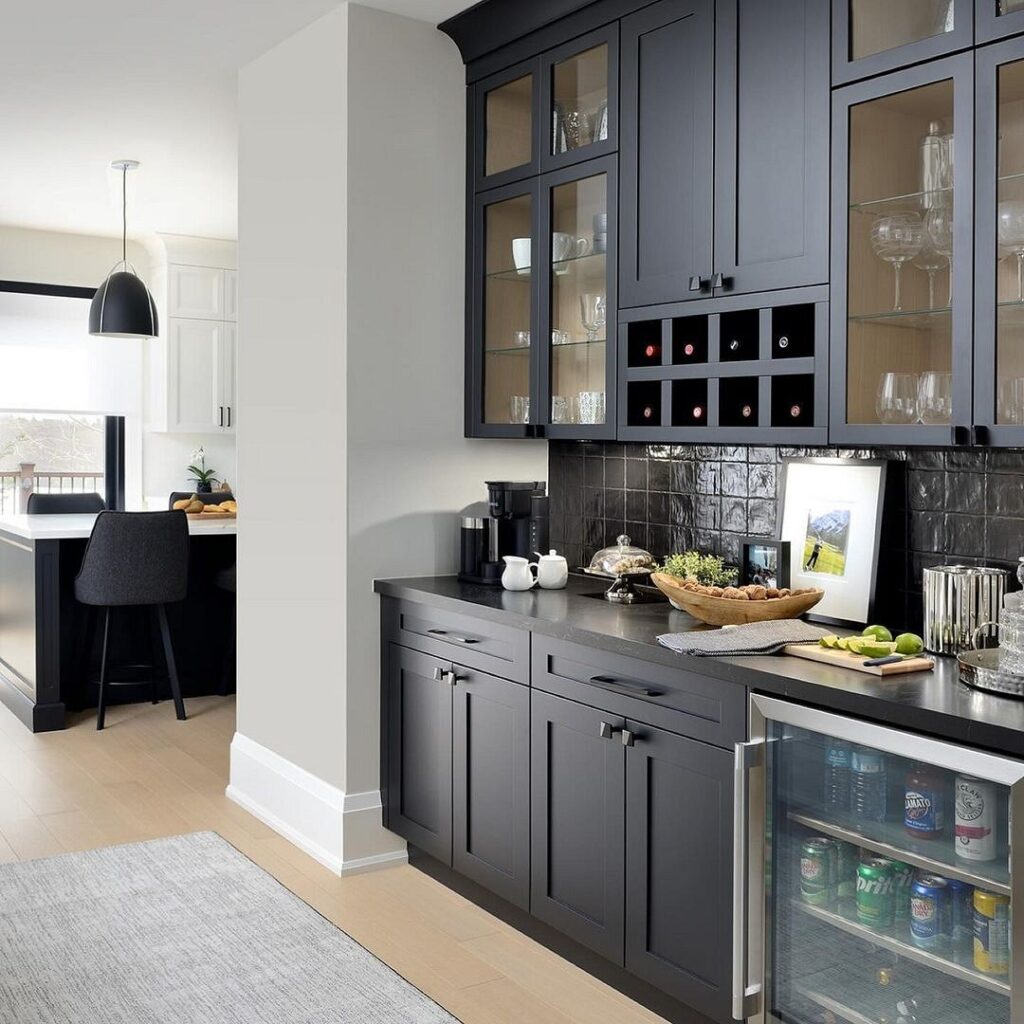
Kitchens in black colors negatively impact appetite. In dark walls, it’s easier not to overeat, meaning you can lose weight faster. Additionally, food can even seem tastier: the absence of bright tones around allows you to fully concentrate on the taste sensations.
As a compromise, this color can be used selectively, so that it occupies no more than half of the room. In this case, it will provide the right level of elegance, but won’t start to oppress and cause anxiety.
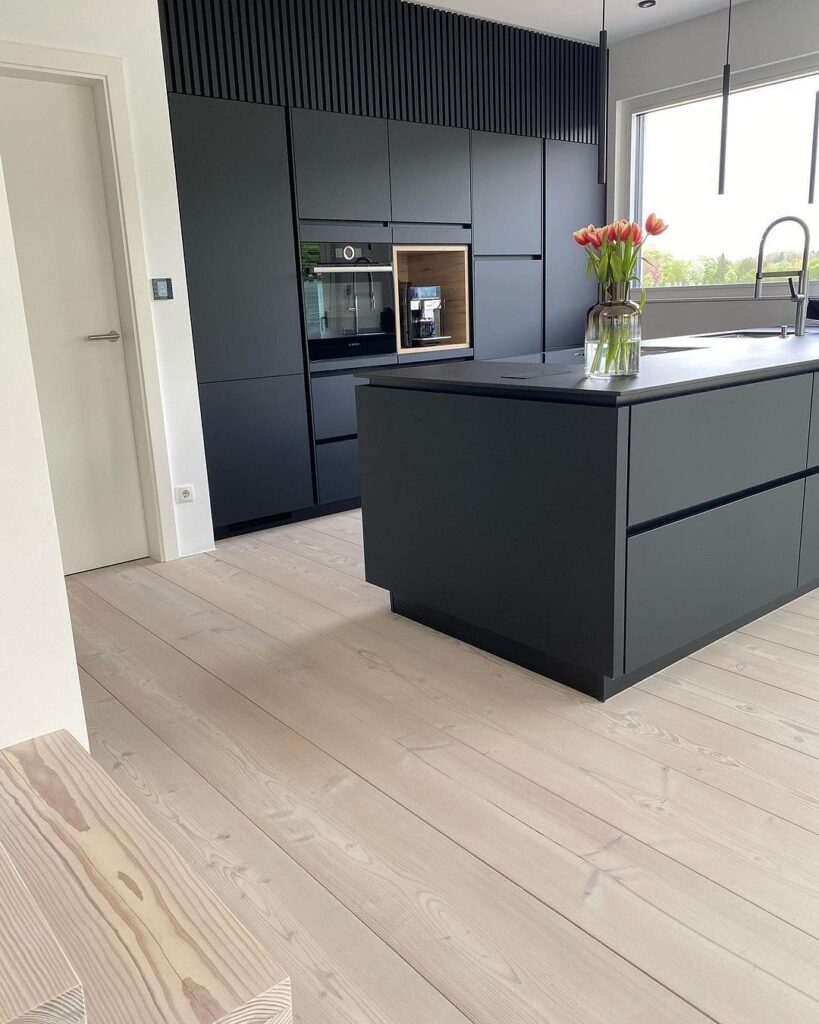
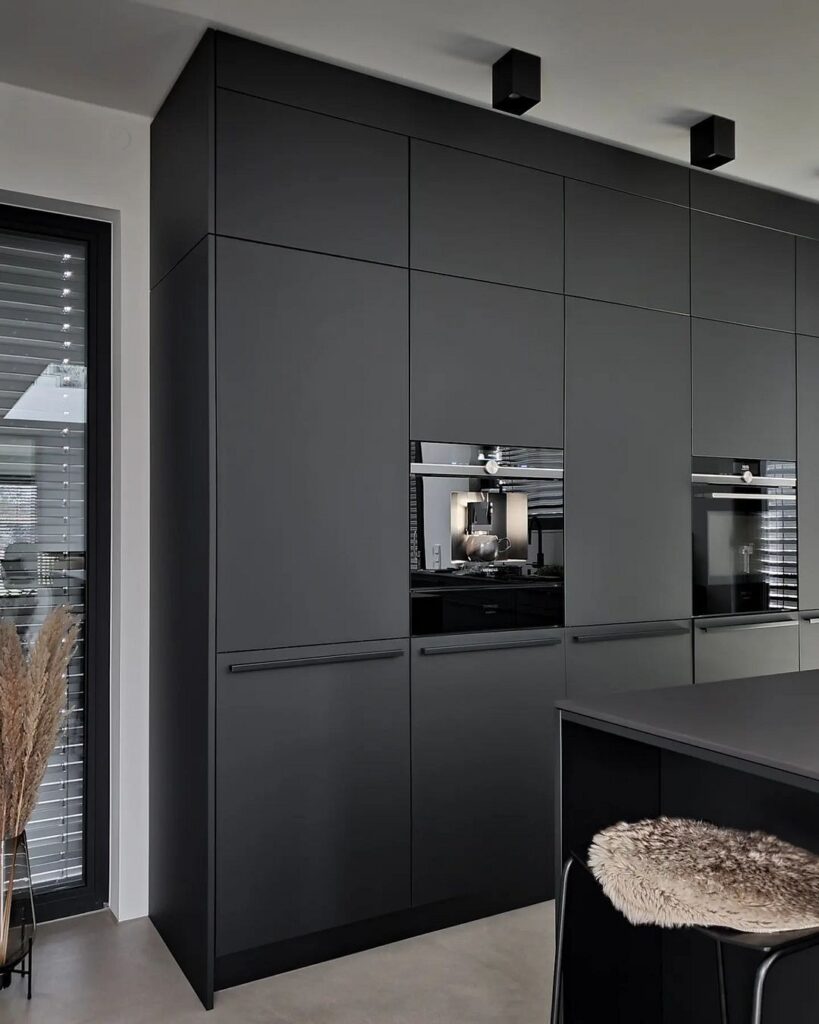
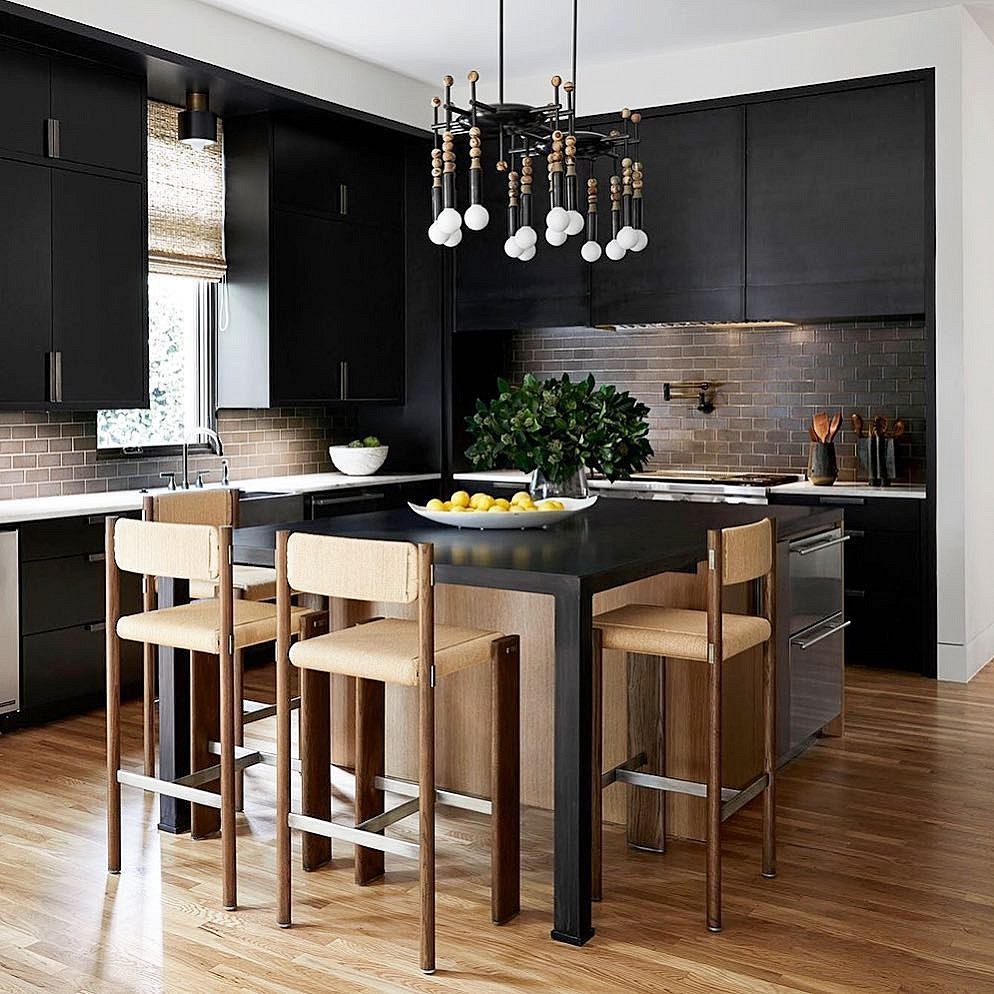
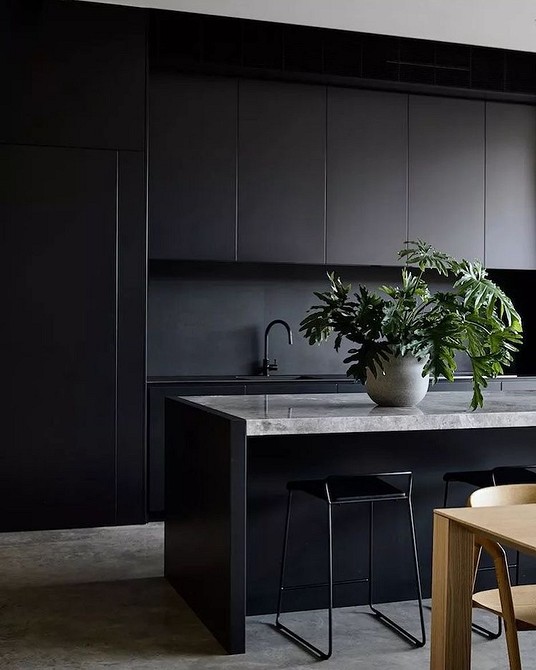
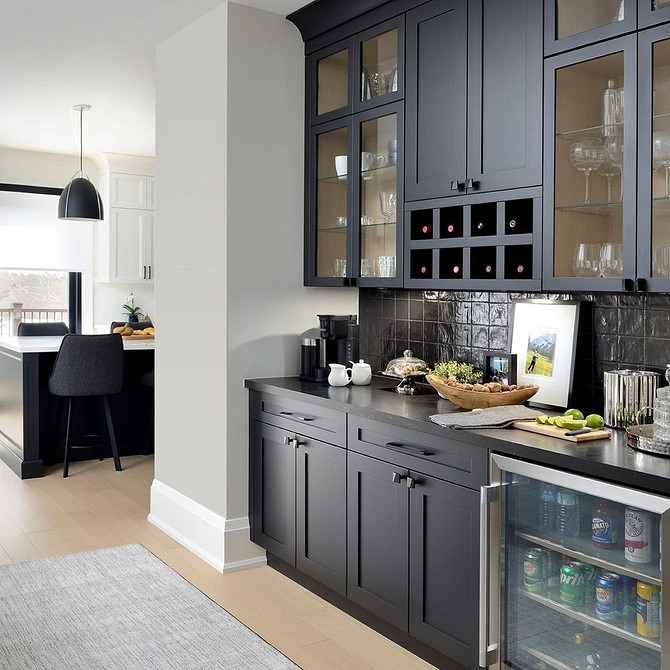
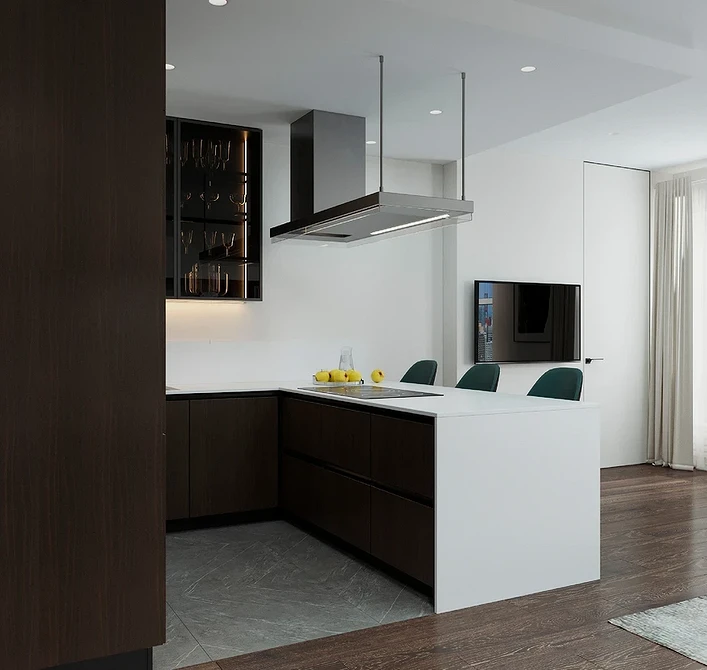
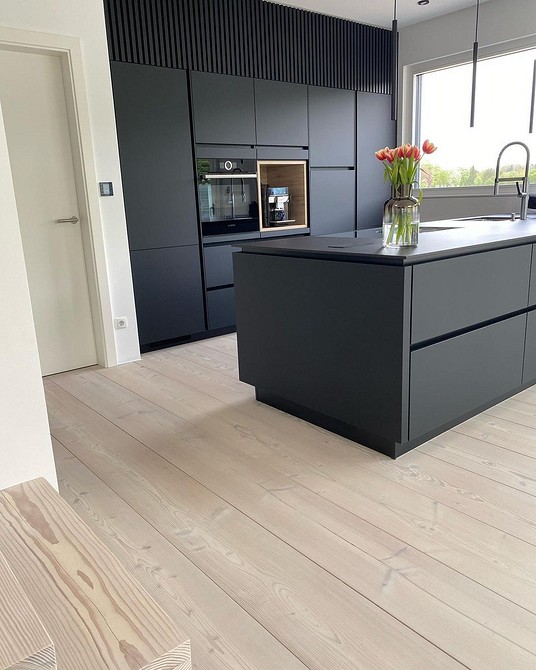
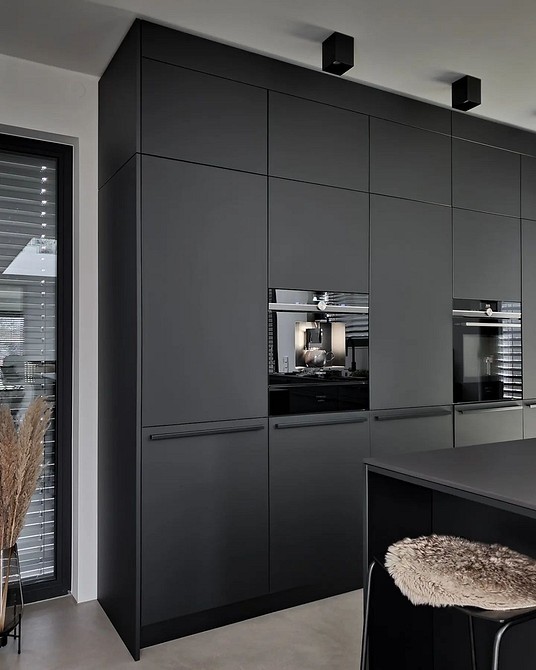
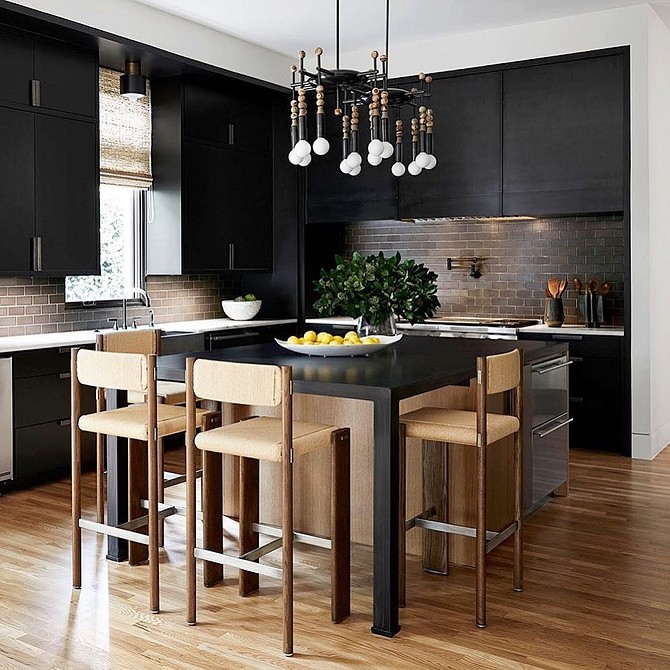
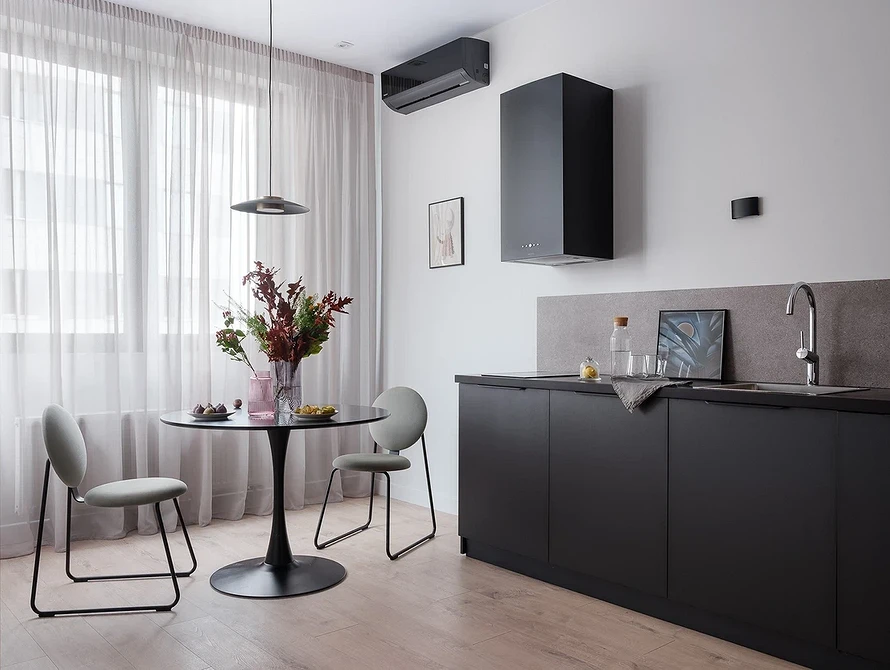
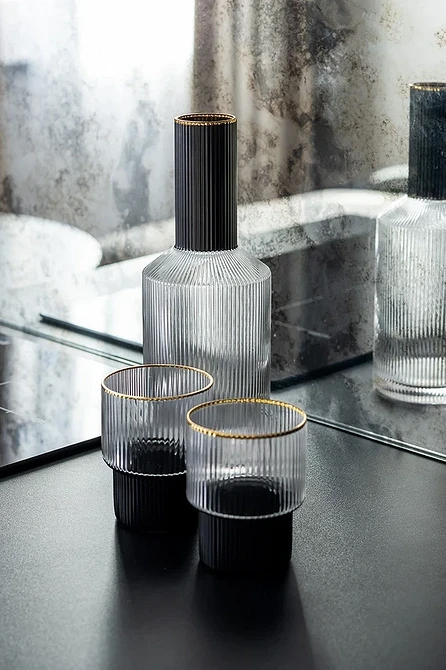
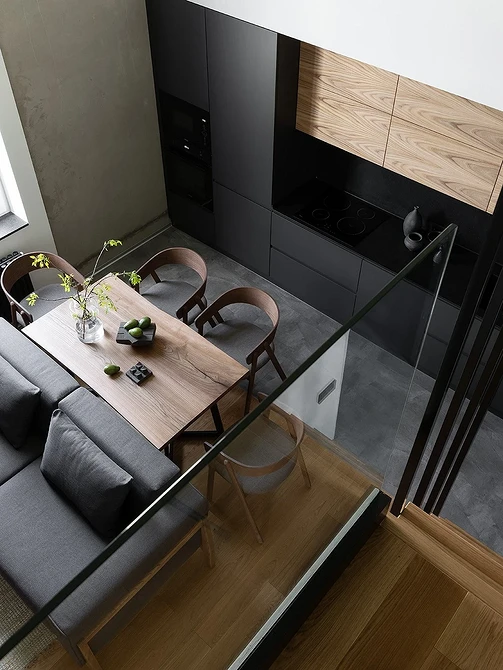
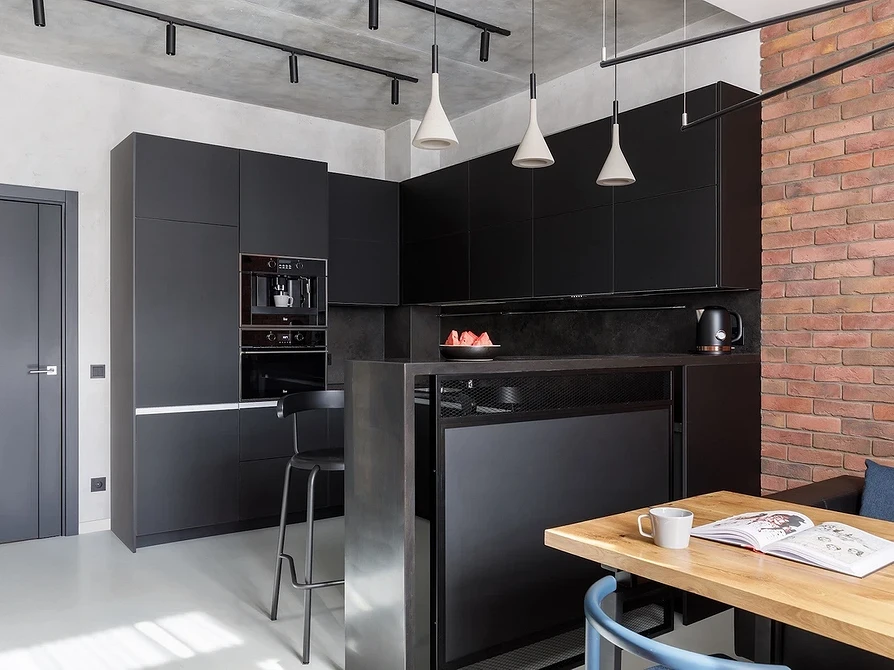
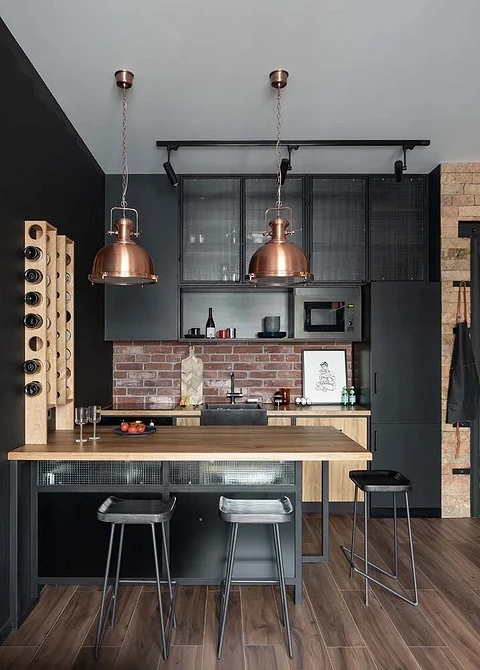
Pros and Cons
The common belief that a dark palette visually reduces a room is only partially true.

When applied skillfully, a room, slightly shrinking visually, simultaneously becomes deeper — like a midnight sky with twinkling stars in the distance. Looking at photos of black kitchens in interiors, you can discover other advantages.
Pros
- Black color gives the room a sense of strictness and neatness, making it look imposing and prestigious.
- Any shades become more noble in its presence. Everything that usually looks unserious and kitschy (lemon-orange, carrot, powder pink, lettuce green) gains dignity and sheen in its company.
- Inky tones provide contrast to the interior when combined with any colors except the darkest ones.
- It’s hard to imagine some design trends without this color. Brutal loft, concise minimalism, provocative pop-art, high-tech — these styles use the anthracite palette in one way or another.
Cons
- In large volumes, dark color negatively affects the psyche, causing sadness and even depression. To avoid this, limit its use or mix it with lighter and more cheerful tones.
- A very small room can turn into a real black hole with licorice and soot colors, where all other shades and light will dissolve. Therefore, in such spaces, graphite-asphalt colors are used sparingly.
- Furniture and walls in the color of raven’s wing require continuous care: any crumb, dried water drop, and even finger touch leave noticeable traces. Be prepared that cleaning a black kitchen backsplash, cabinet doors, and countertops will need to be done much more frequently and thoroughly than before.
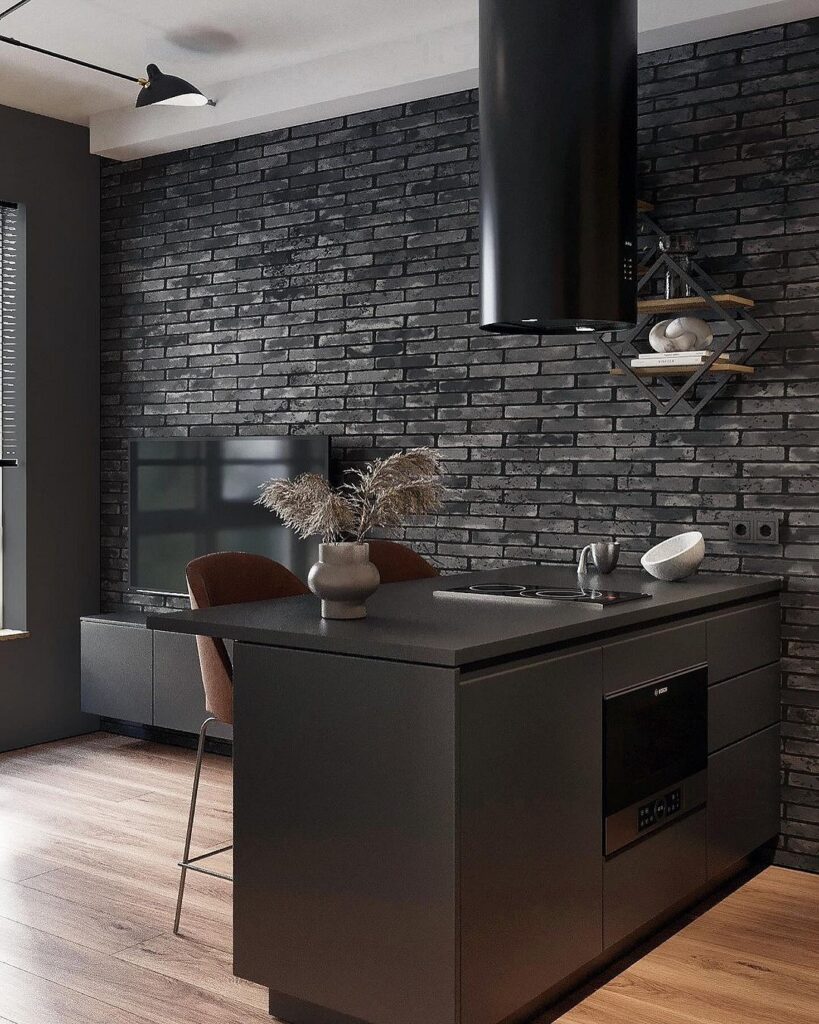
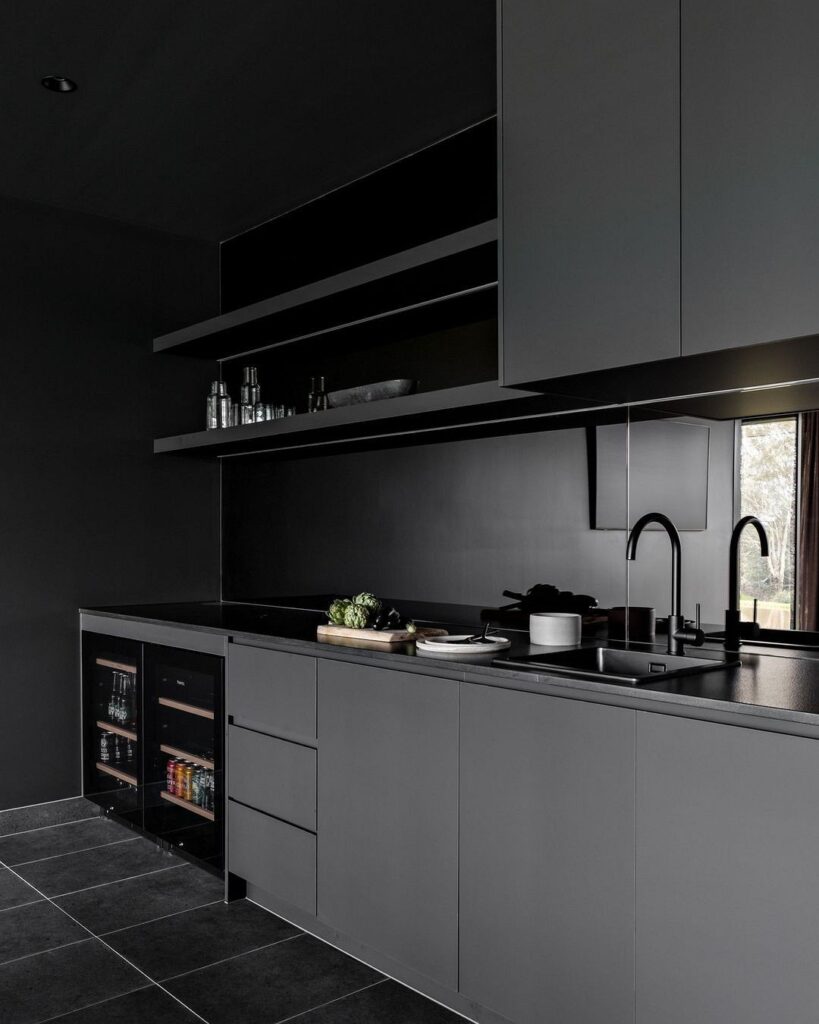
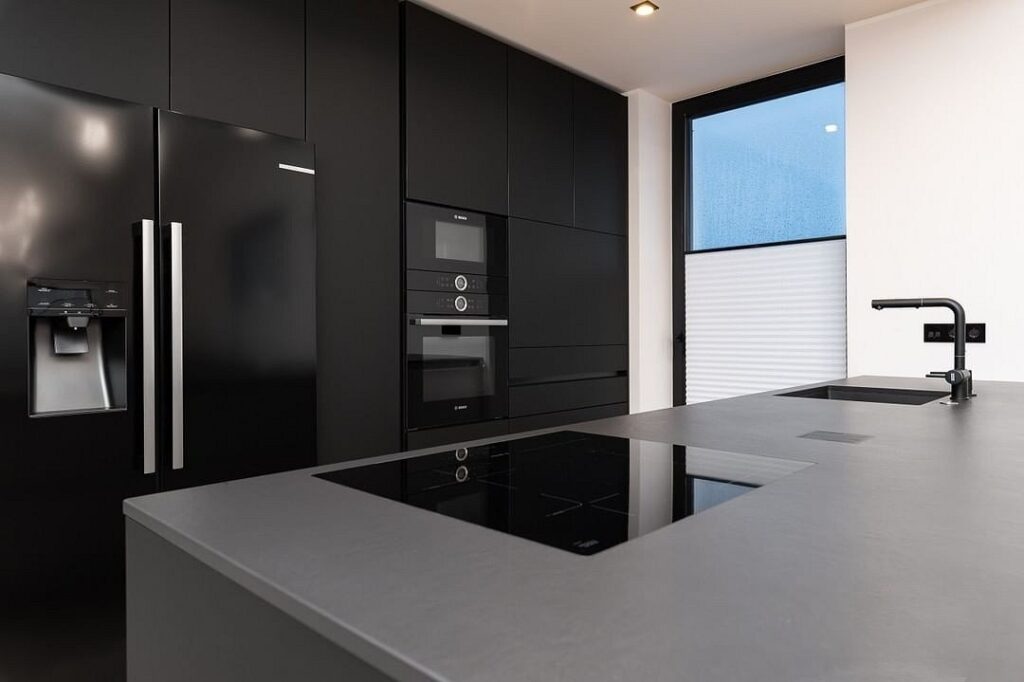

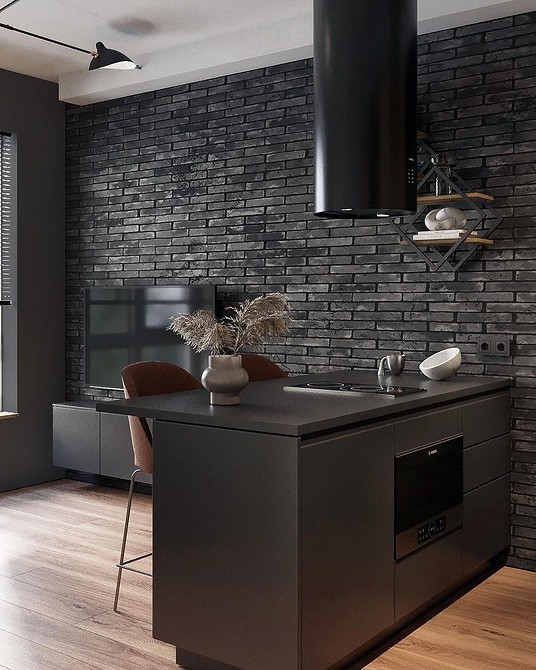
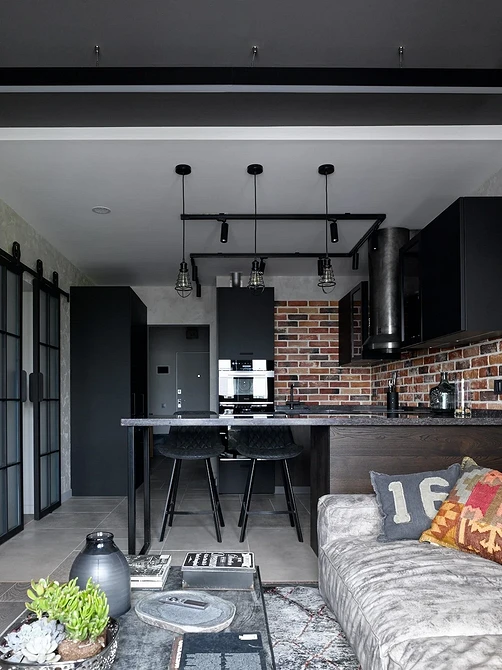
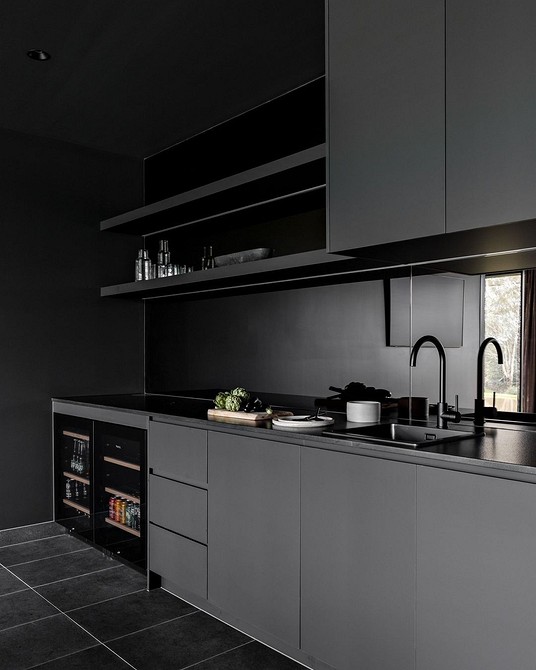
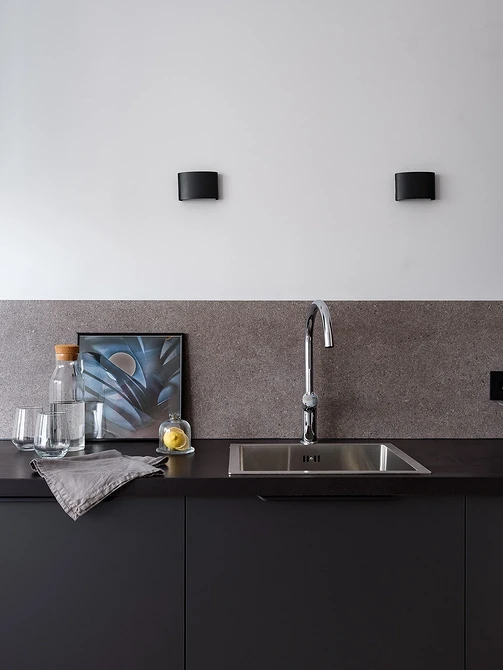

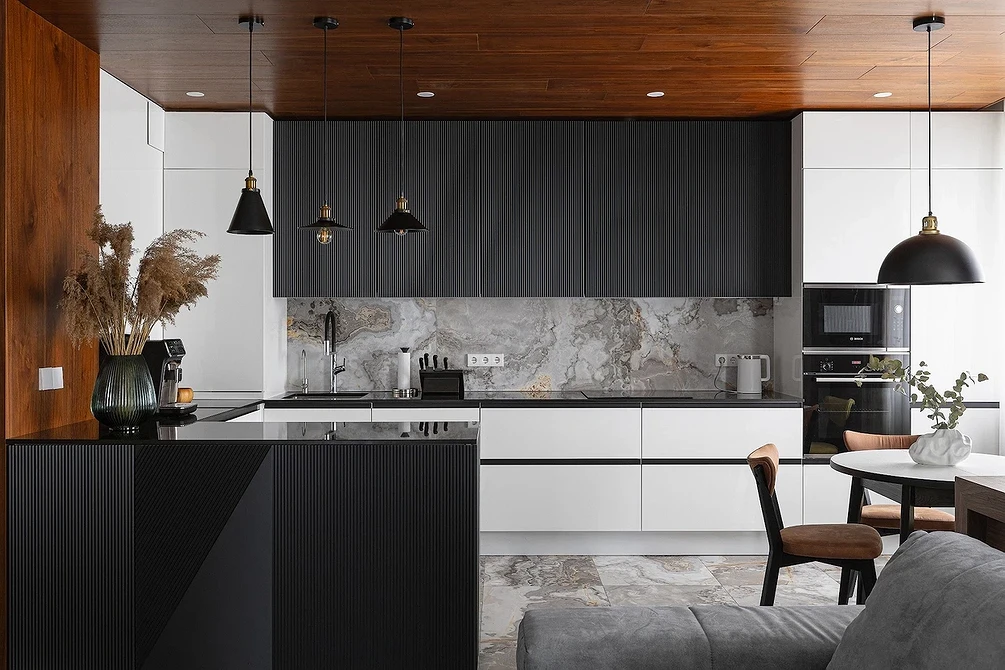
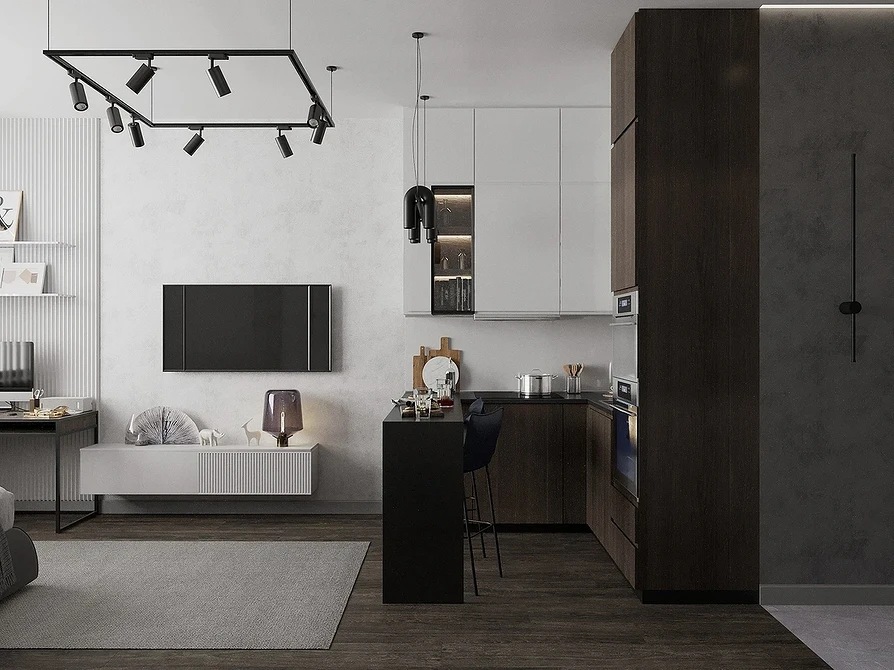
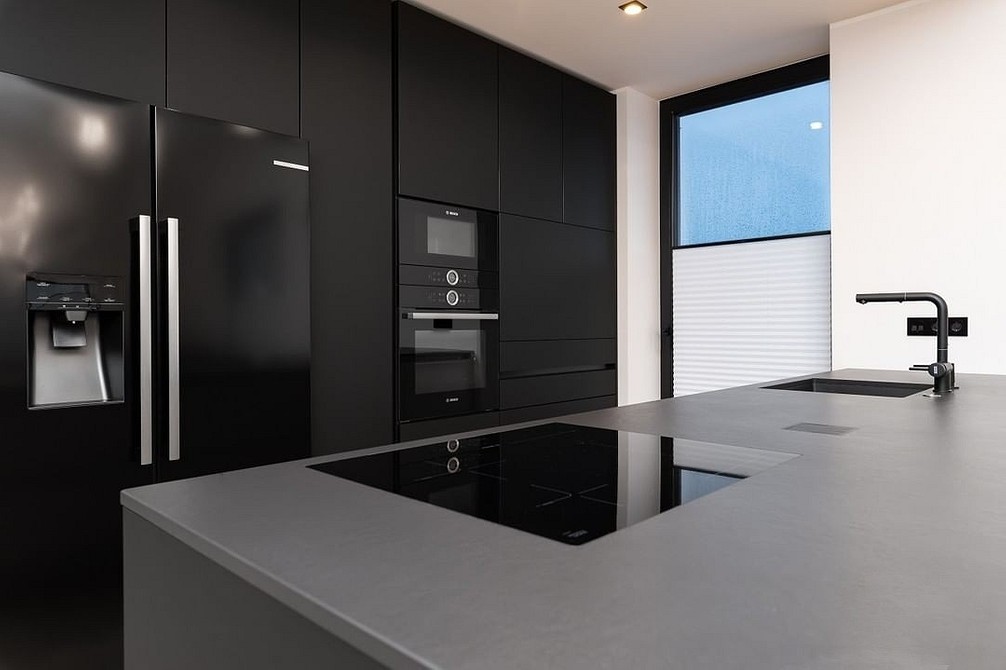
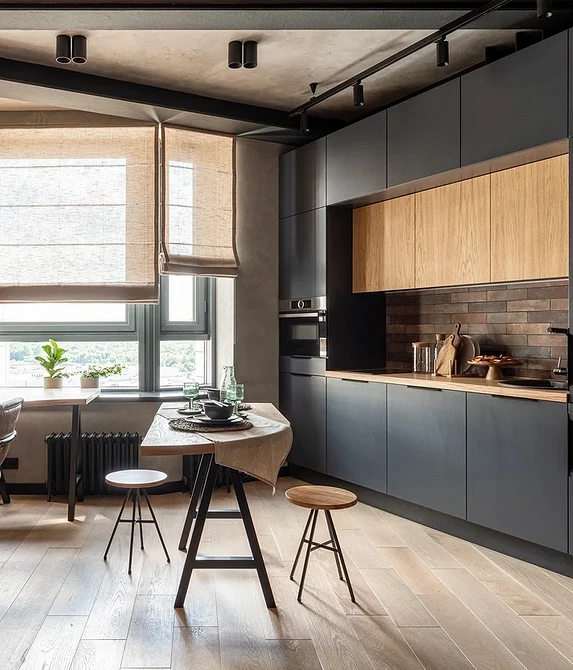
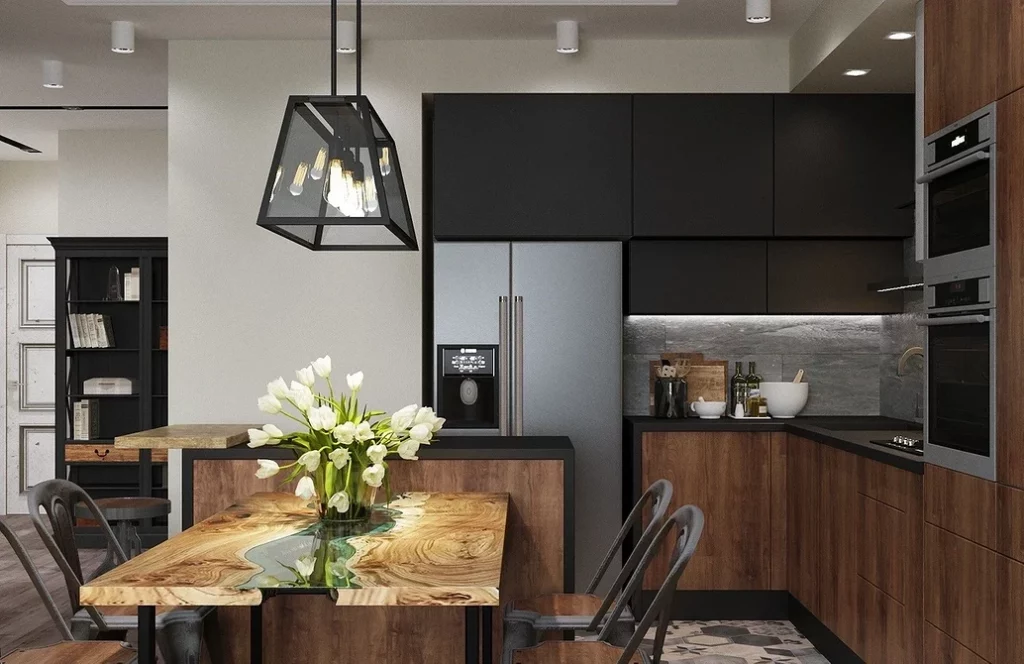
What to Make Black
In graphite-resin tones, you can make something singular (floor, walls, furniture) or the entire room. But only really large rooms are completely darkened, where such a color looks advantageous and unobtrusive.
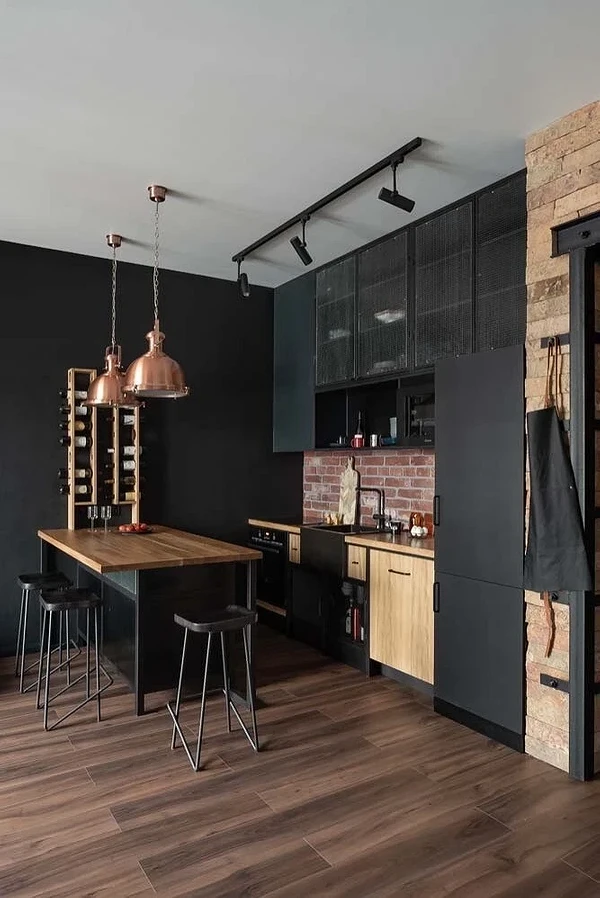
A fully black matte kitchen in the interior looks as stylish as a glossy one, but it’s easier to maintain, as it shows fewer marks and hides other kinds of dirt. Moreover, matte is more cozy and conducive to communication: non-shiny surfaces are less strict and pretentious.
If the room is very small, moderation with dark colors is important. Reviews of small black kitchens are typically not flattering: even if they face south and are sunlit all day, they still feel cramped and uncomfortable. It’s better to execute just part of the finish or furniture in shades of coal and graphite, preferably choosing gloss — it will additionally reflect light and expand the space.
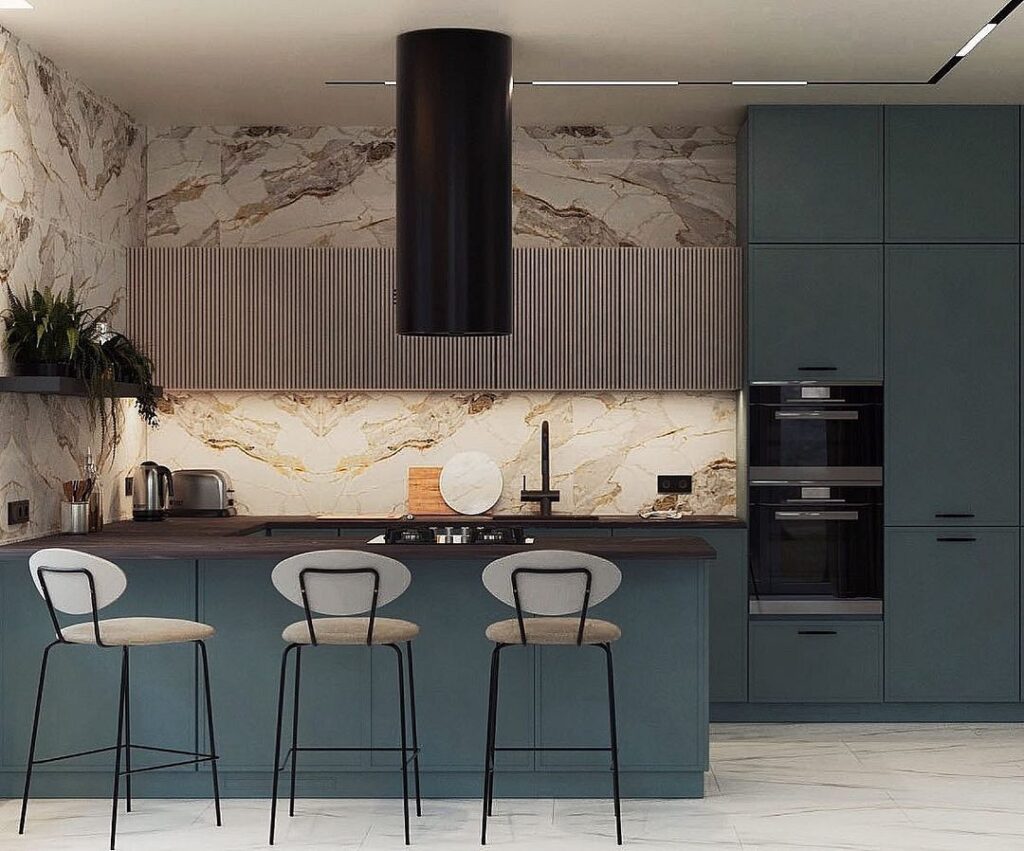
In general, for average apartments, designers recommend using a charcoal-anthracite palette sparingly and combining it with a chromatic range.
How to distribute it in the space?
- The “50/50” option: approximately half of the interior is made dark, and everything else is light or bright. For example, this could be a kitchen with a black countertop and matching upper facades with lower light ones. Or, only the floor is painted in an anthracite shade and a dining table to match it is selected. A good idea would be furniture made of natural wood, covered with dark varnish.
- An interesting approach — a composition of several elements of the same shade. Black sink, kitchen mixer, and a refrigerator of the same color can easily unite the entire interior into a cohesive whole. Similarly, you can make the work area in onyx color, adding similar curtains and a small rug. Two or three such large accents will be quite enough.
- The third option — just one thing, but really noticeable and stylish. For example, it could be a large, unusual black kitchen hood. With it, the room looks elegant, but there’s no feeling of a lack of light. Instead of a hood, large appliances (oven, refrigerator, stove), a dining table, etc., can be used.
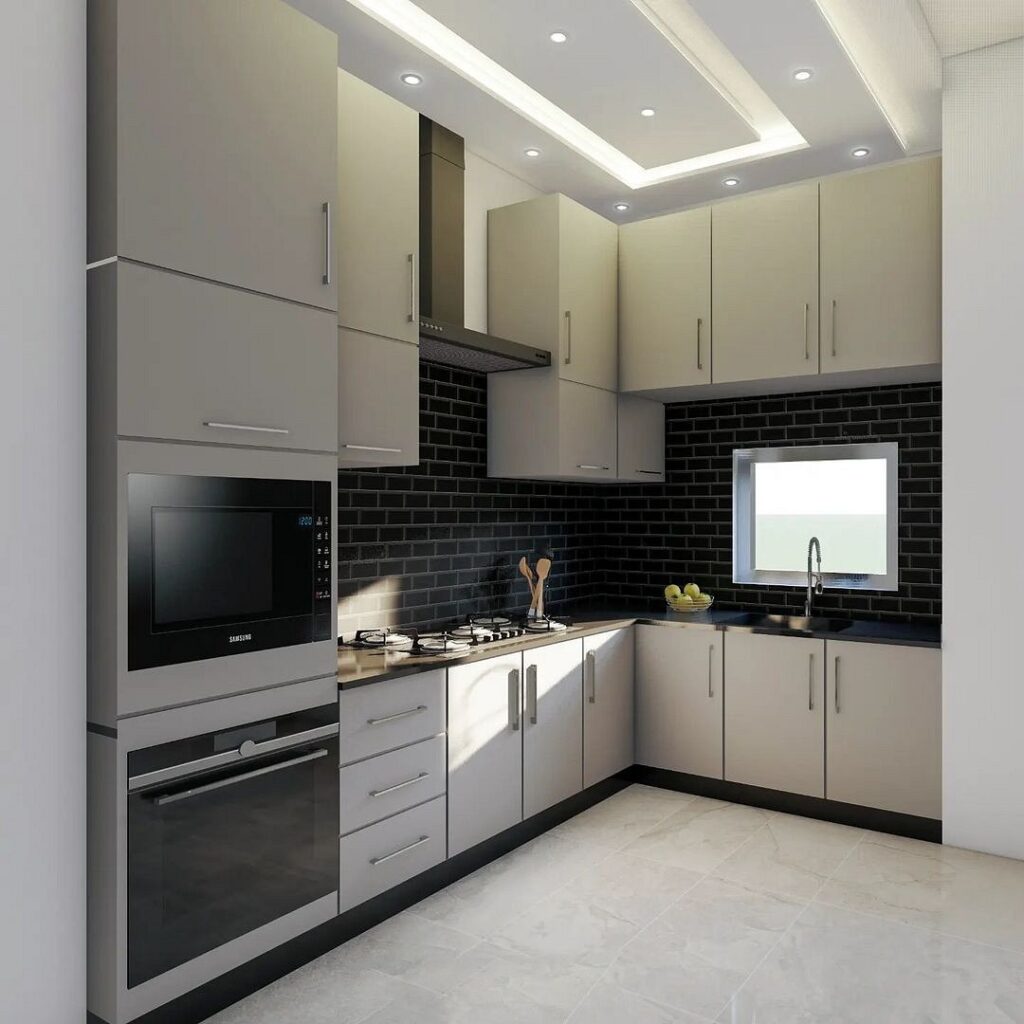

Color Combinations in Black Kitchen Interiors
White
A black-and-white kitchen is one of the most common combinations.

This is a timeless choice: as design trends change, you can update curtains, tablecloths, and other textiles according to the current trends to keep the interior always looking fashionable and stylish. Moreover, white tempers the aggressiveness of black, but without taking away its solemnity.
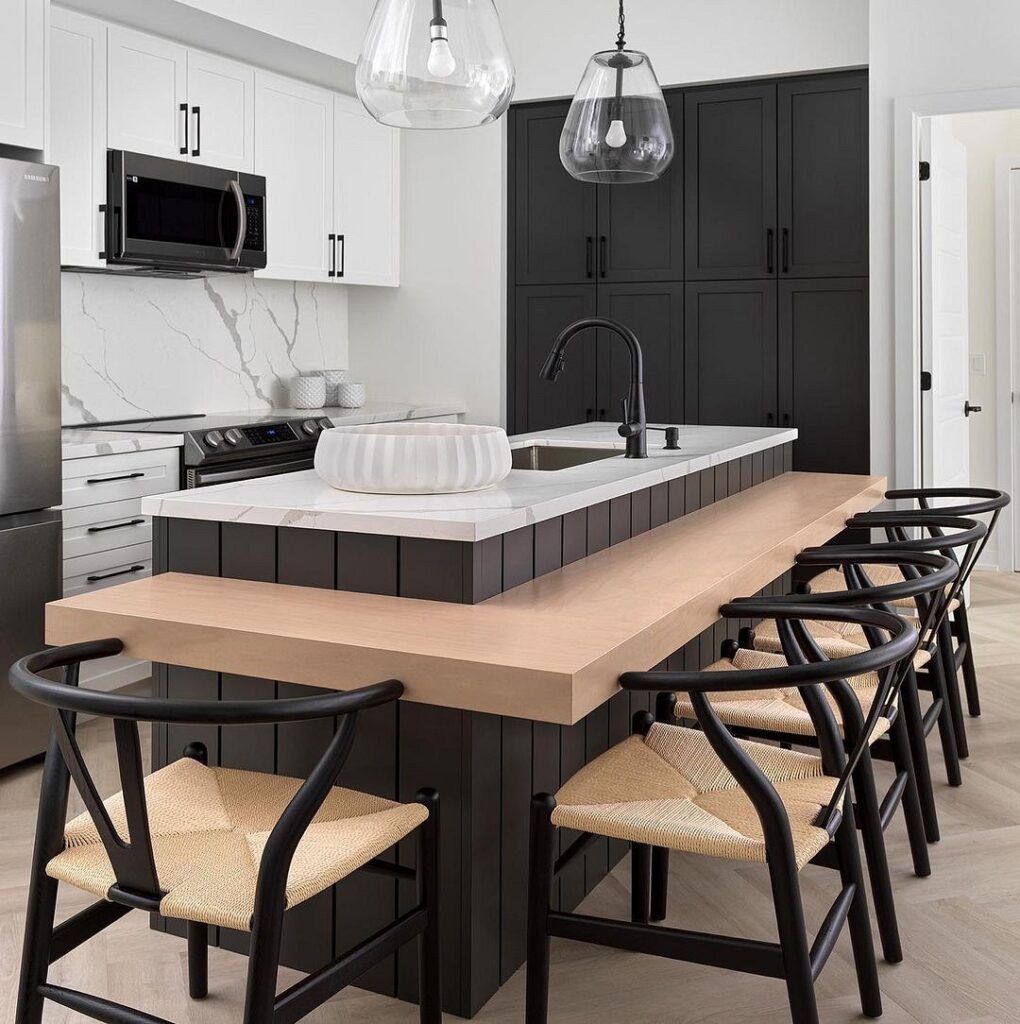
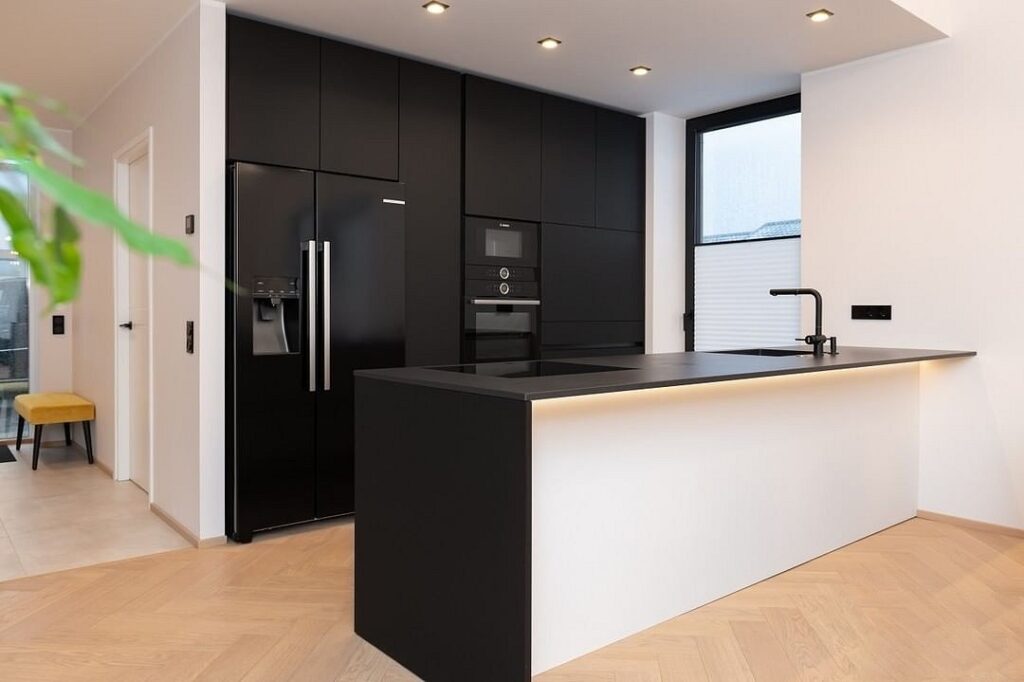
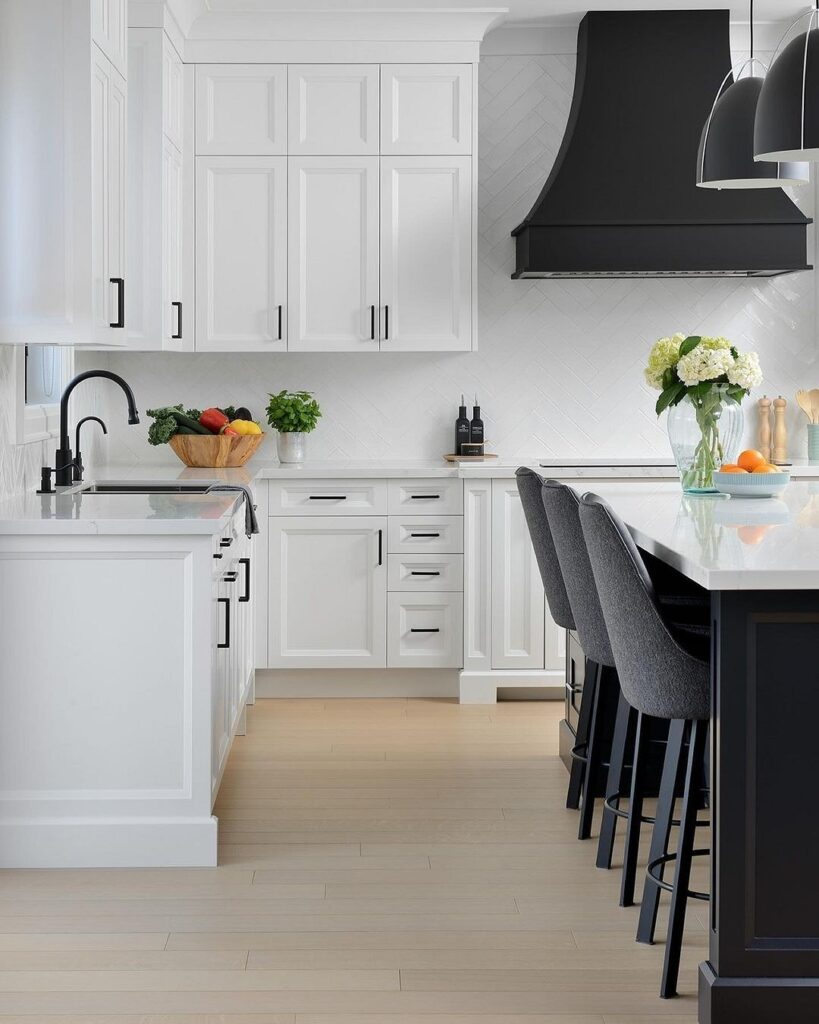
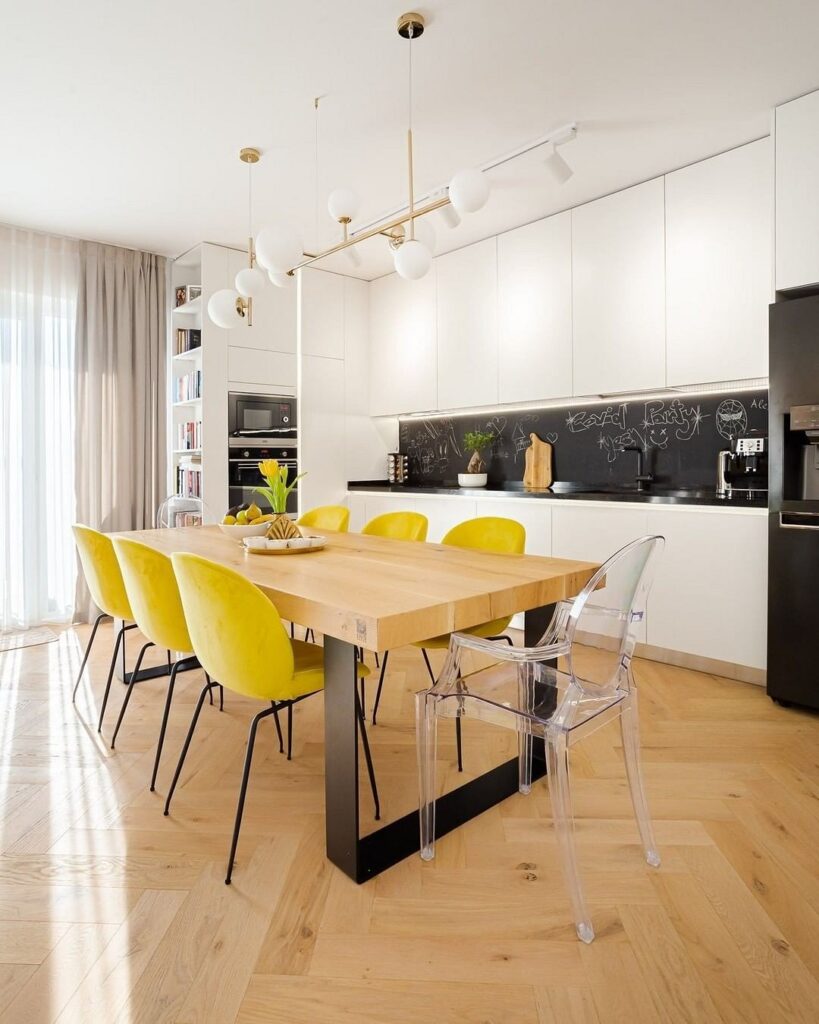
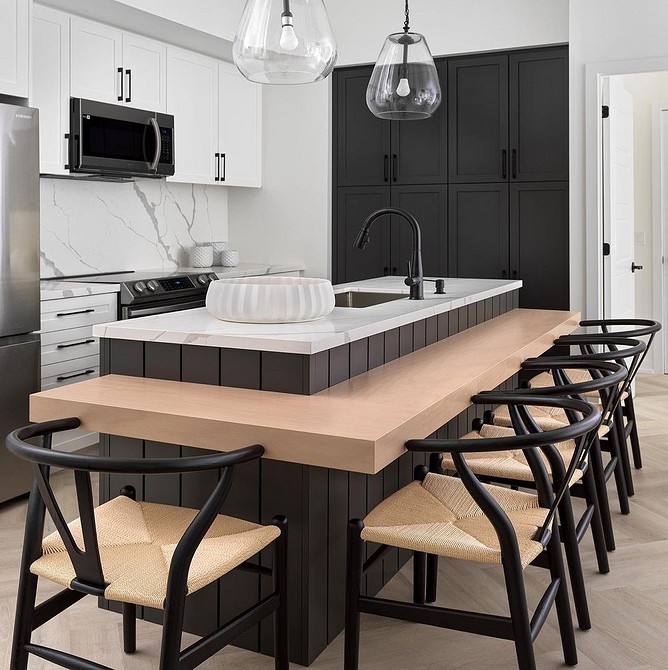
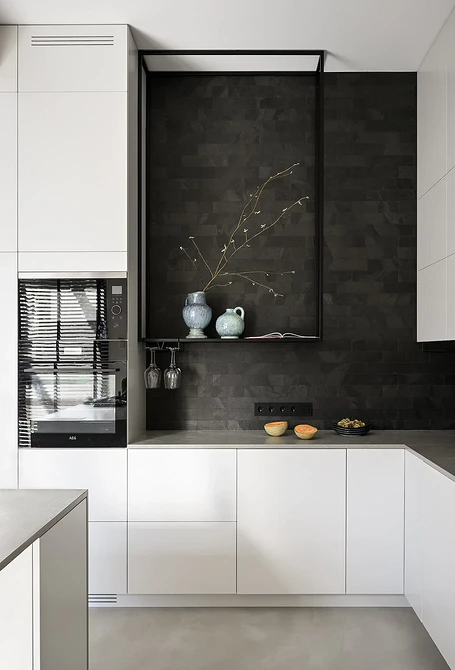
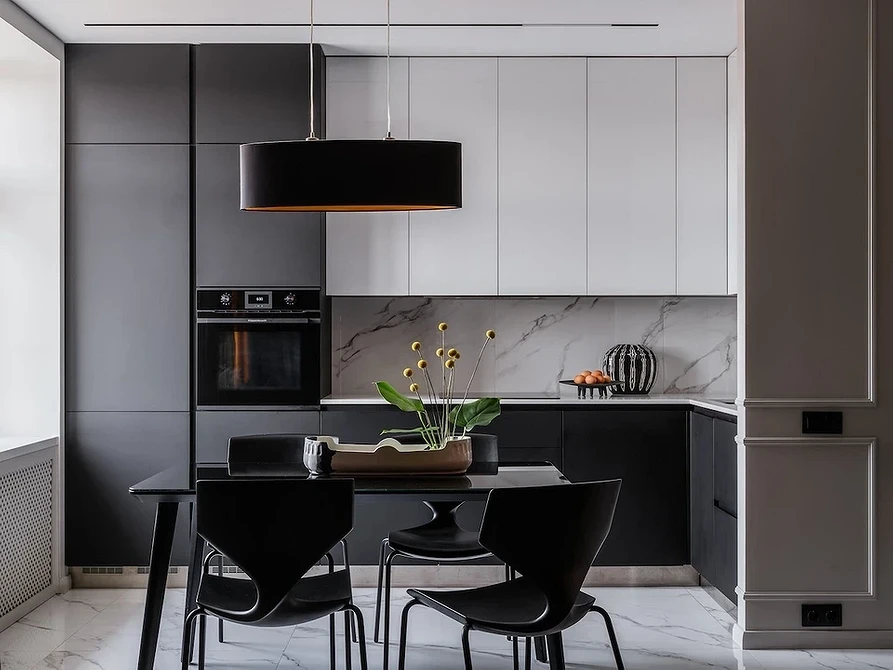
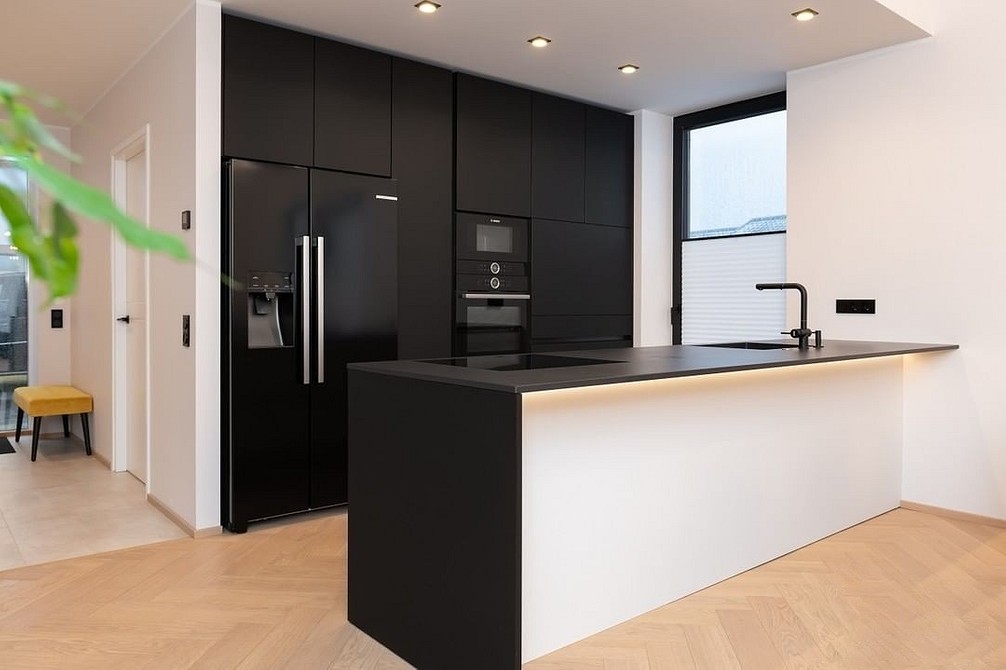
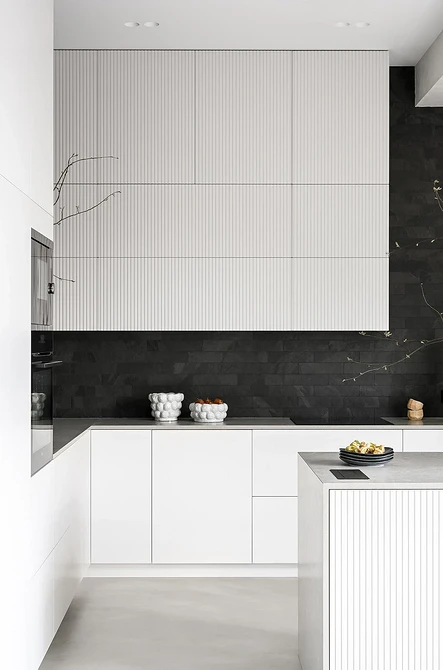
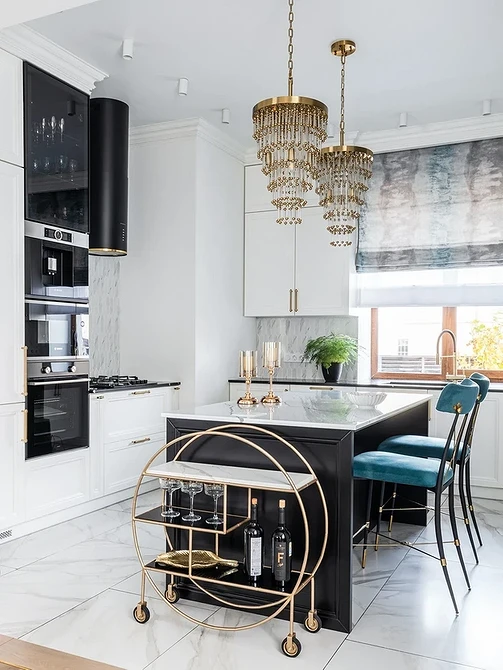
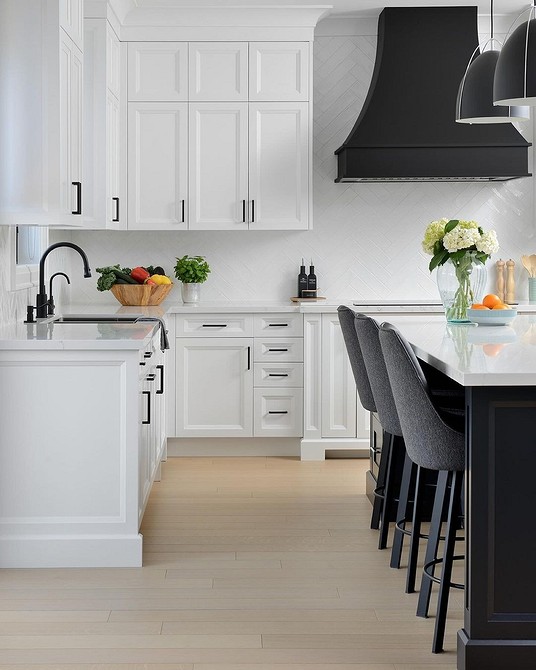
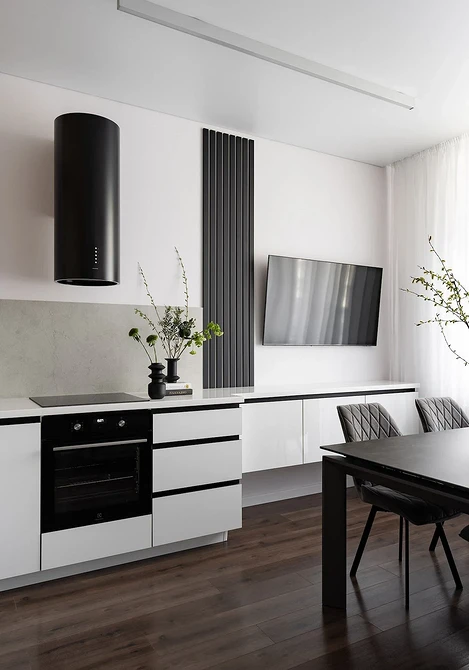
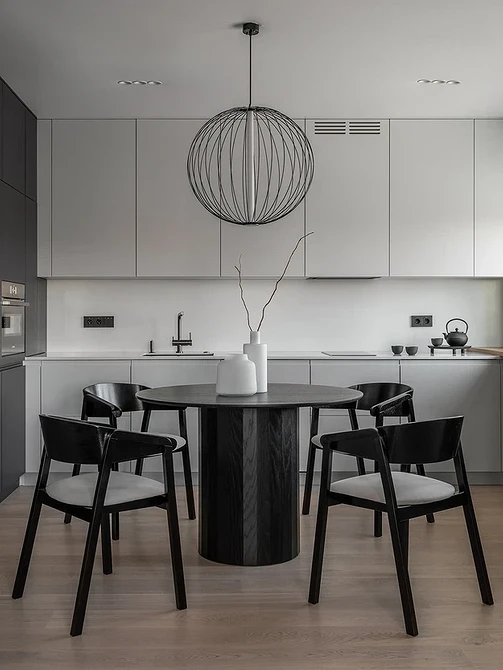
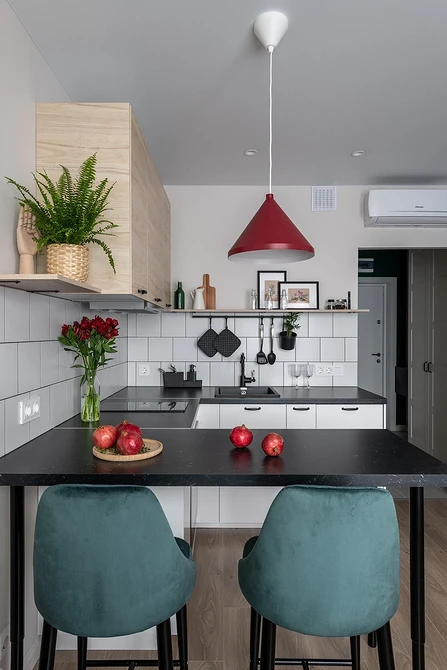
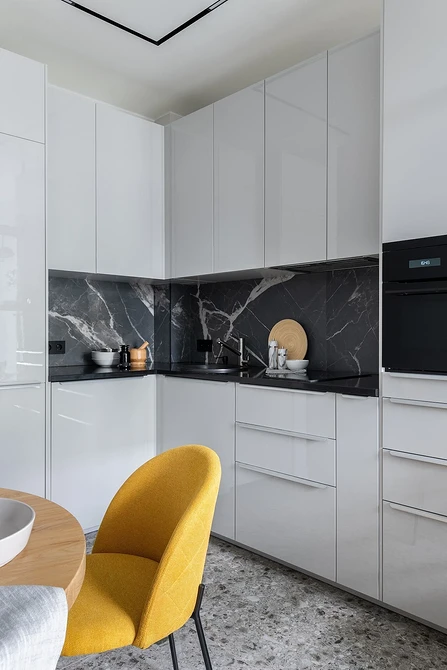
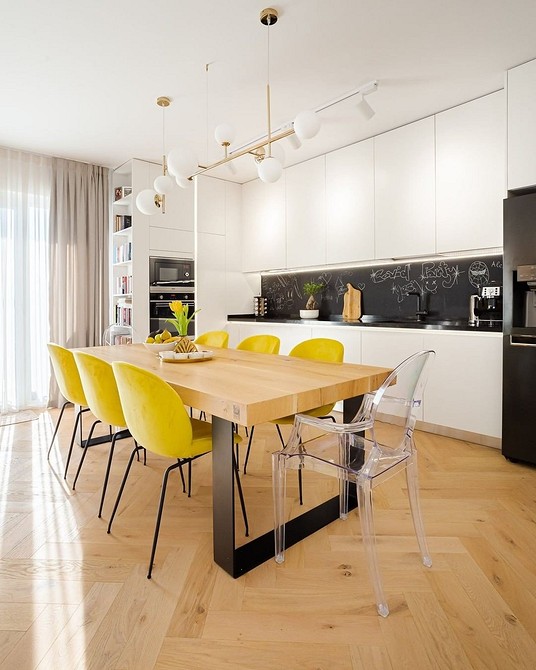
Gray
A black-and-gray kitchen is a choice for those who shy away from sharp contrasts.
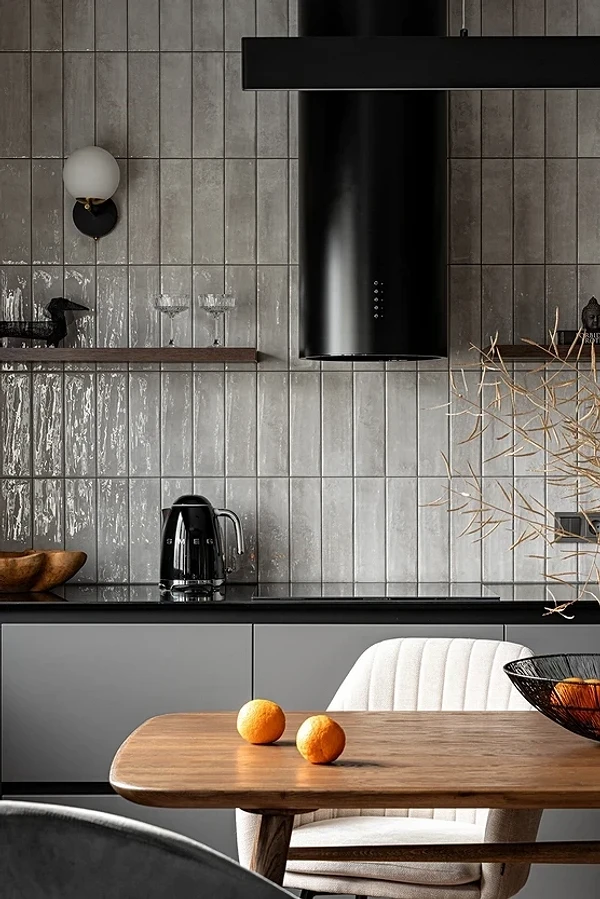
A lighter counterpart to coal, gray softens it and makes it less provocative. In such an environment, there’s no excessive pompousness; instead, the space looks calm and cozy.
This combination allows and even welcomes the use of bright accents, which will add joyfulness and energy, as without them, the setting may seem dull and melancholy. The interior can also be enlivened with fresh flowers and plants.
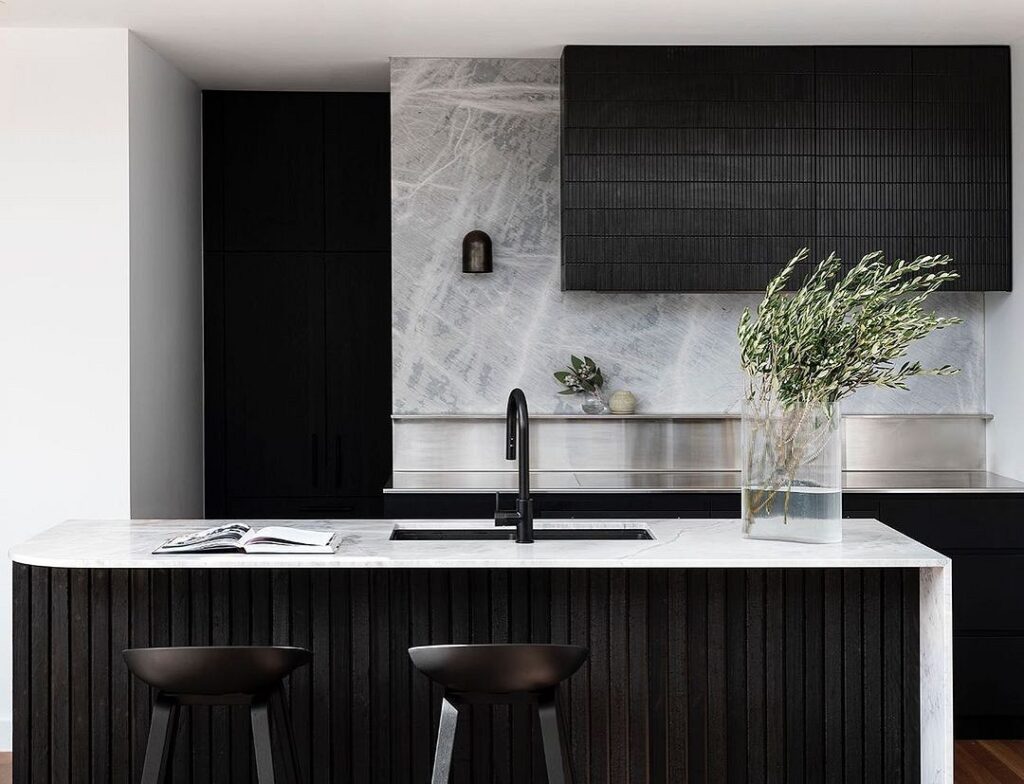
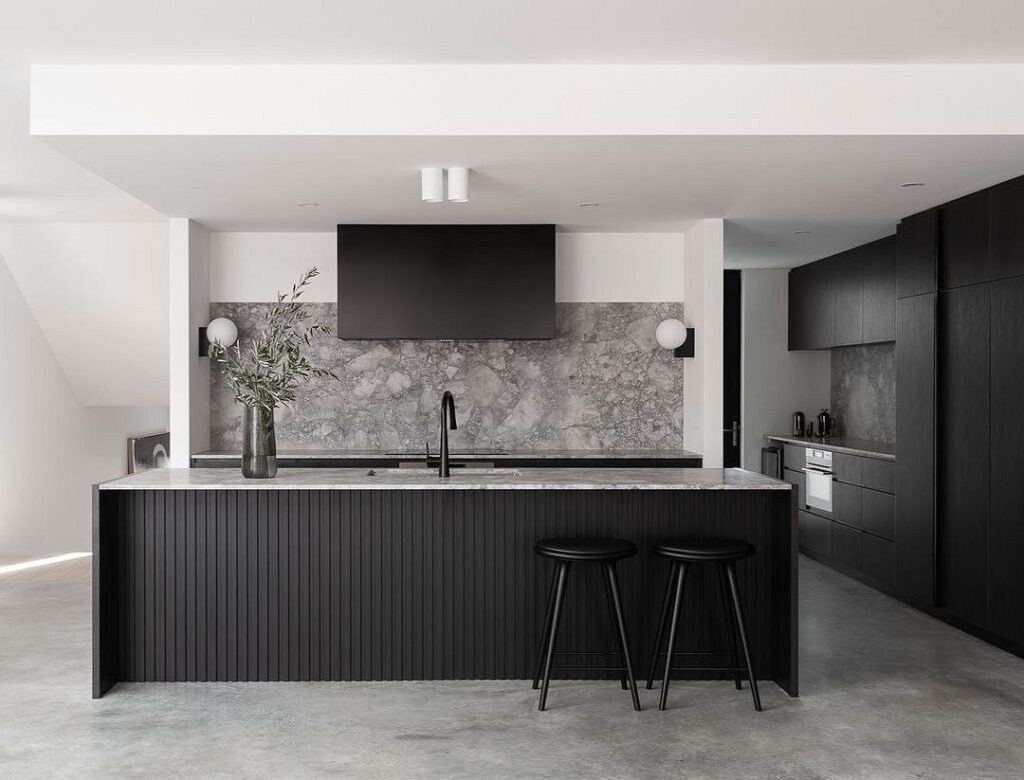
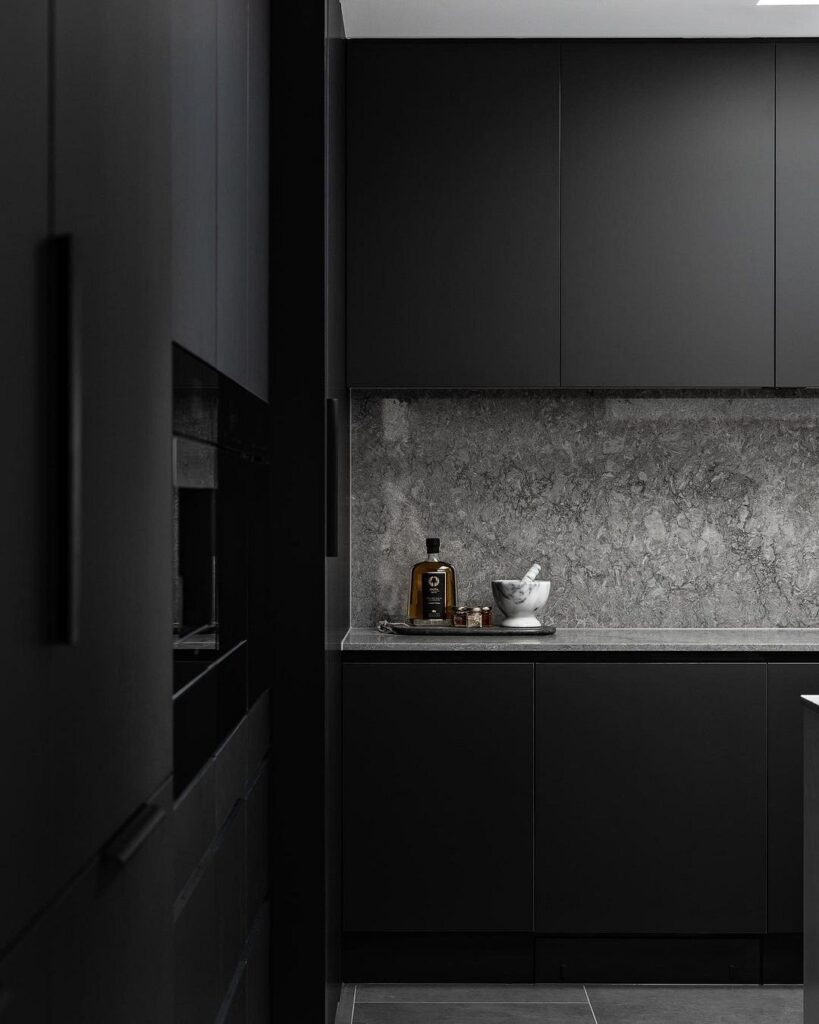
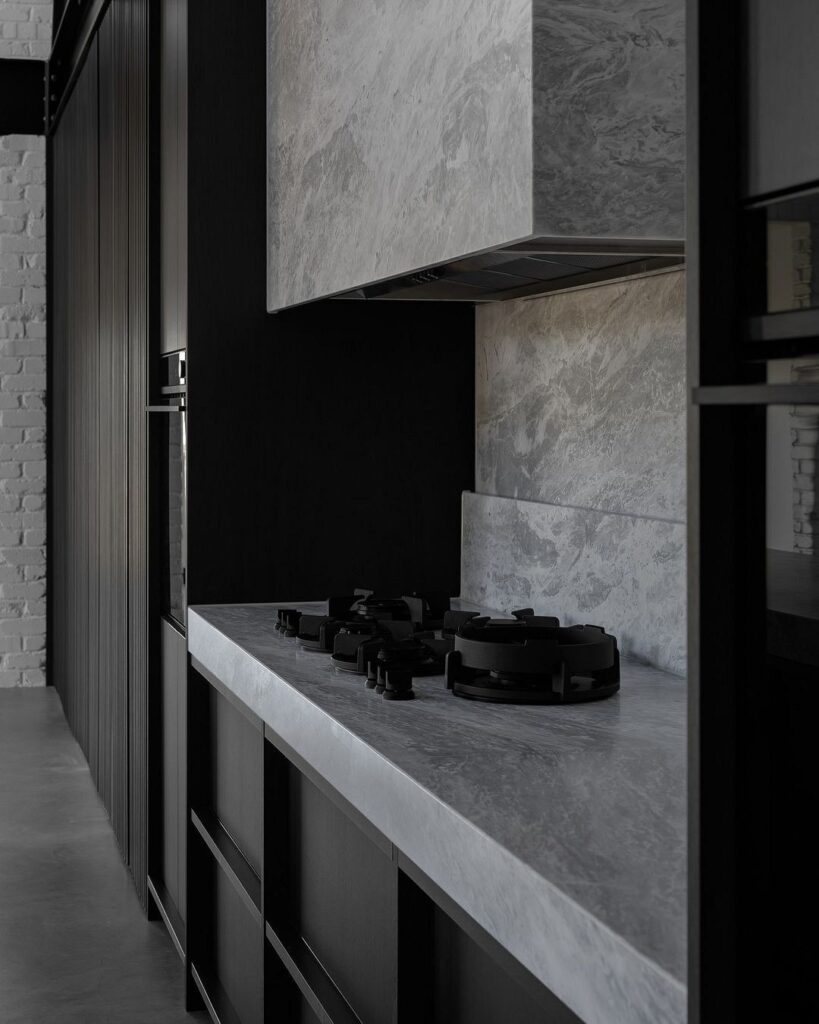

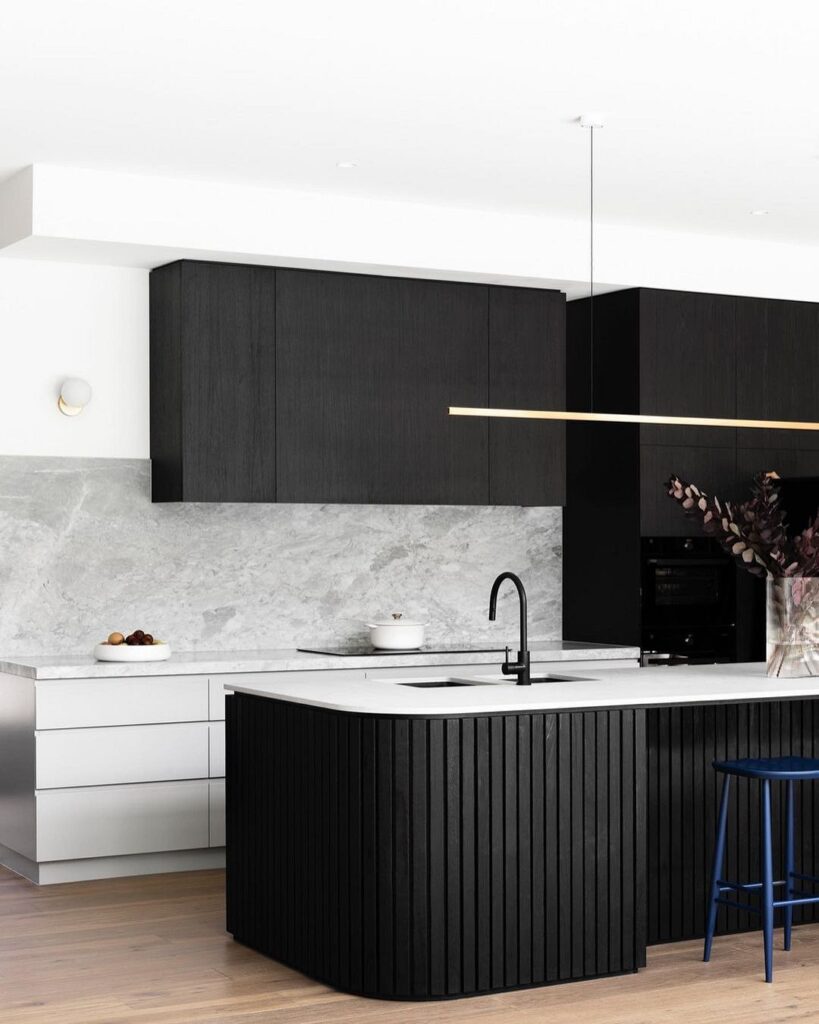
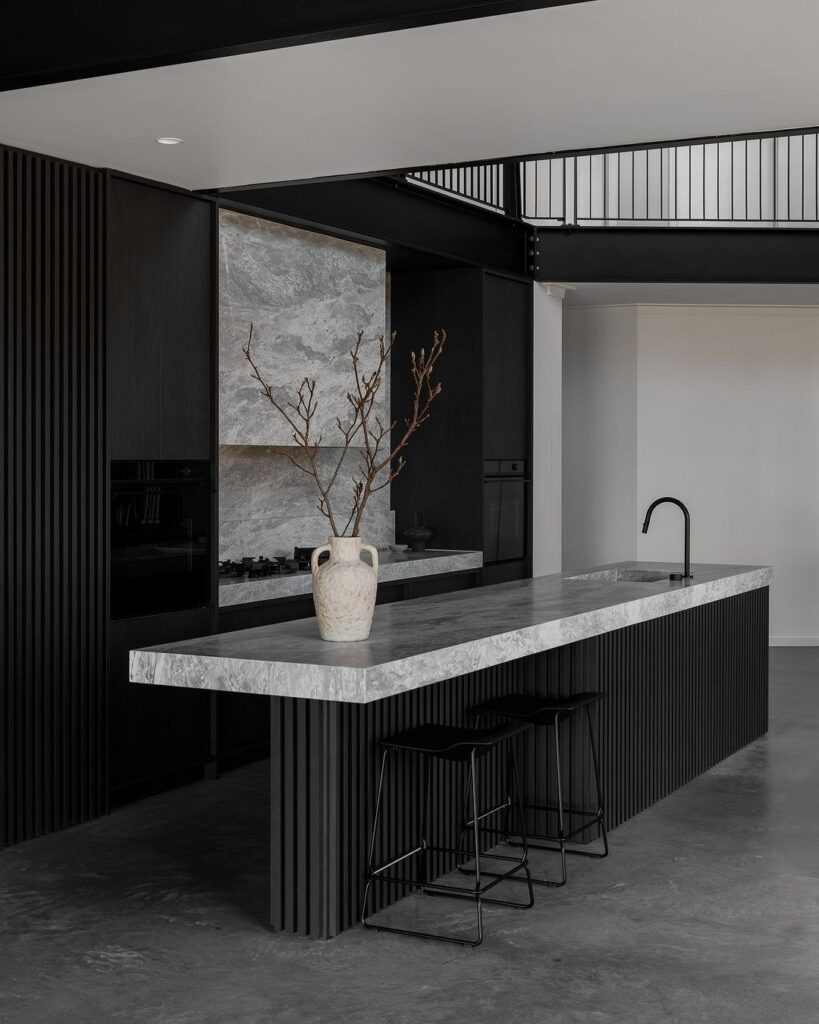
Red
If you desire to dine in a truly luxurious setting, choose the most striking and memorable design: a black-and-red kitchen.

These two colors transform a modest space into a haven of fashion and glamour. Another advantage of this duo is that the scarlet tones have the opposite effect of dark colors — they energize, stimulate the psyche, and increase appetite, minimizing the oppressive effect of black.


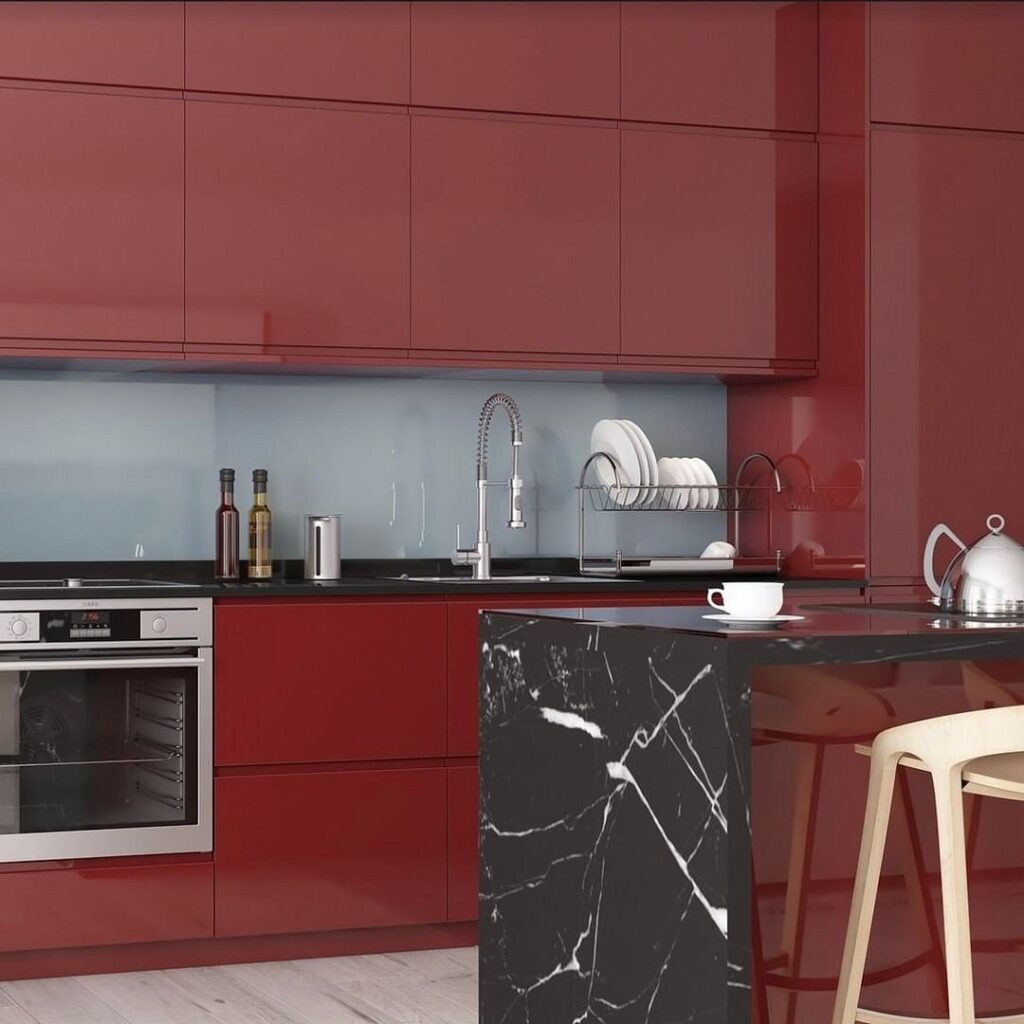
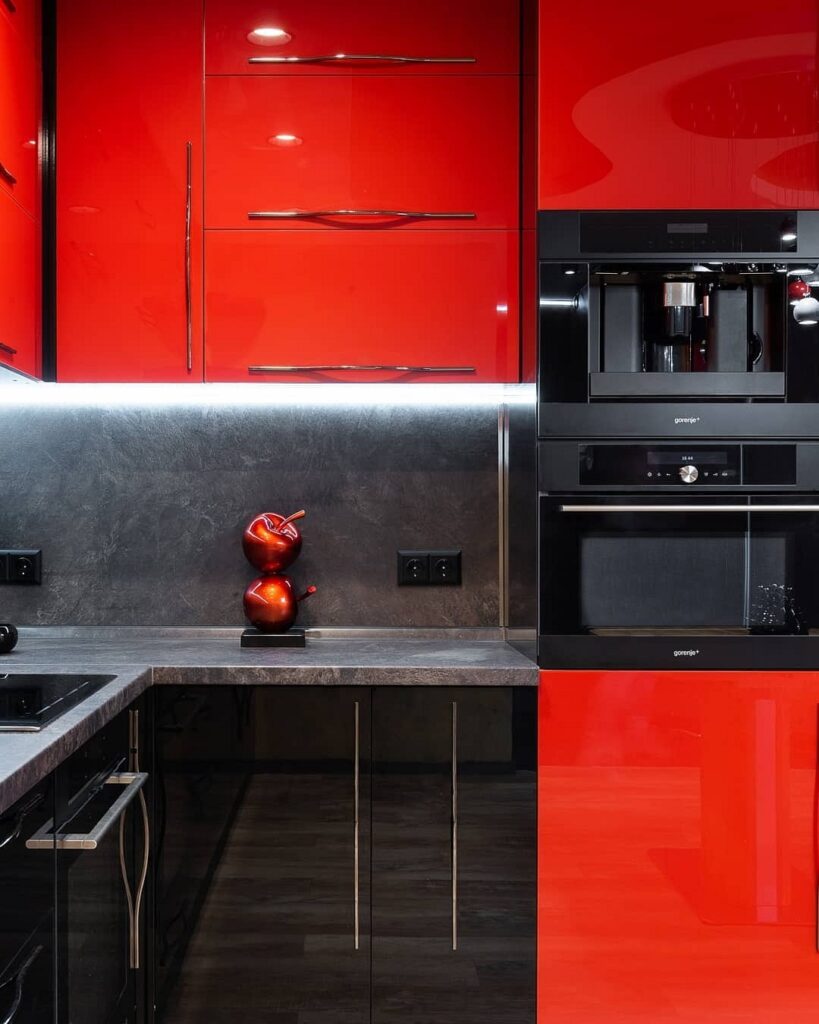
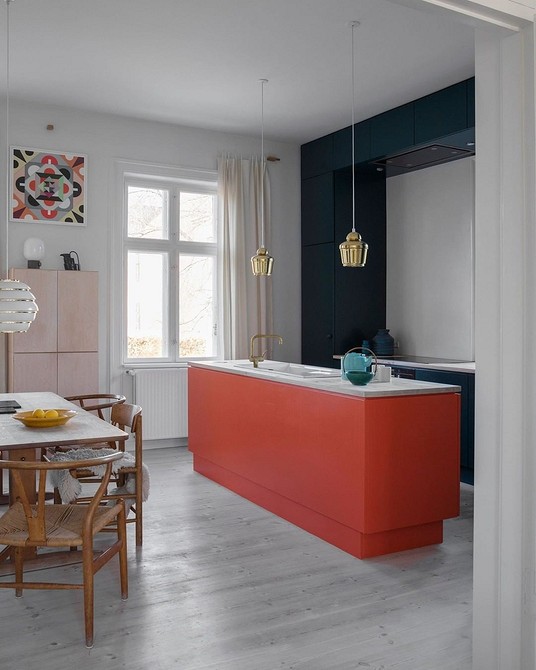


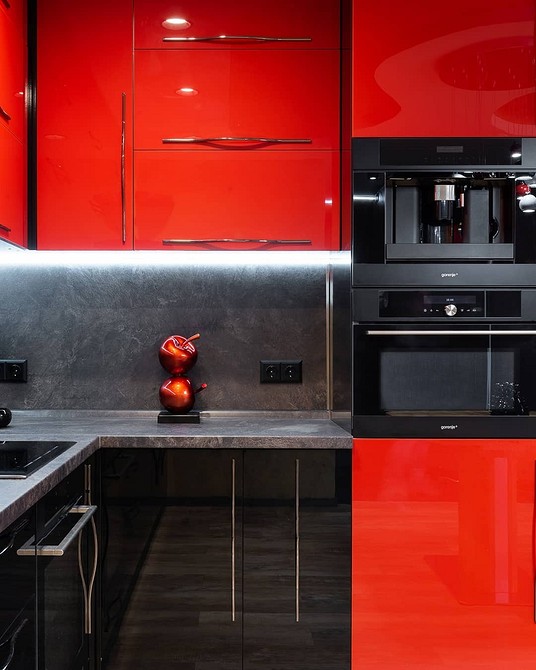
Beige
Light brown shades perfectly balance the dark palette.
With them, the dark tones don’t feel oppressive. A black-and-beige kitchen with a predominance of cream and ivory tones relaxes and calms. If anthracite colors are more prevalent, the space becomes more formal and strict.
Pastel beige variants will introduce a note of contrast to the interior and make it bolder. The honey-nut part of the spectrum, in contrast, will add softness and coziness to the space. Adding white to any of these combinations will make the design lighter and more ethereal.
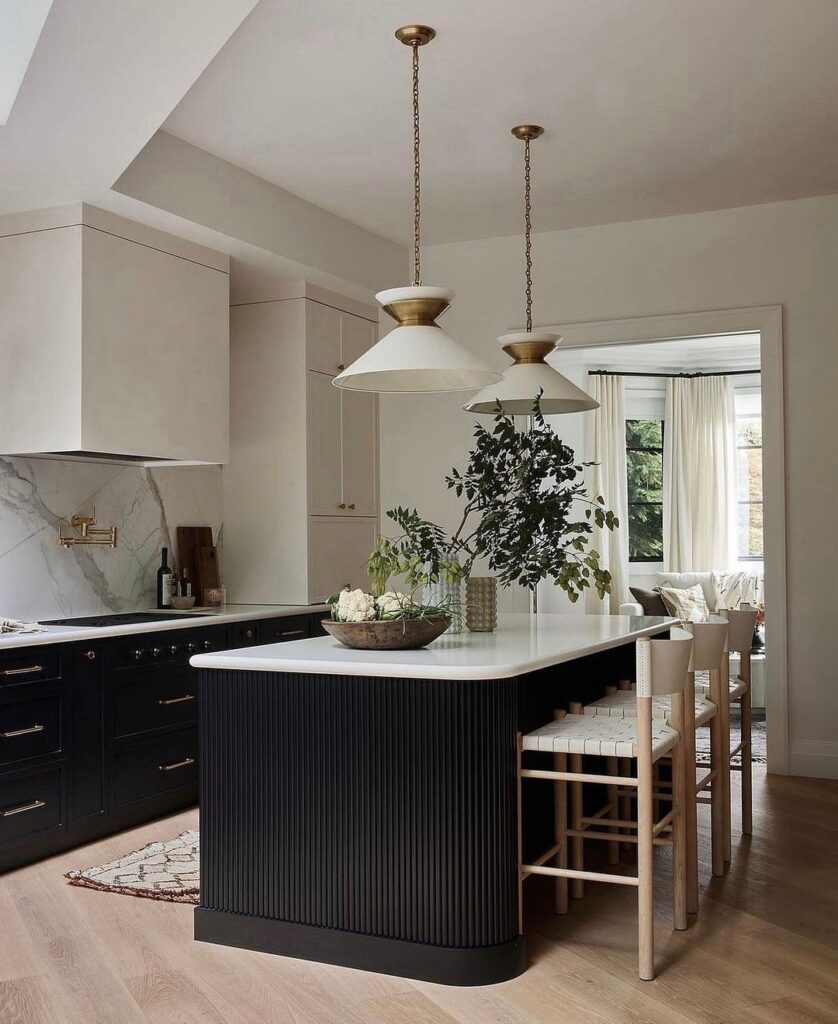
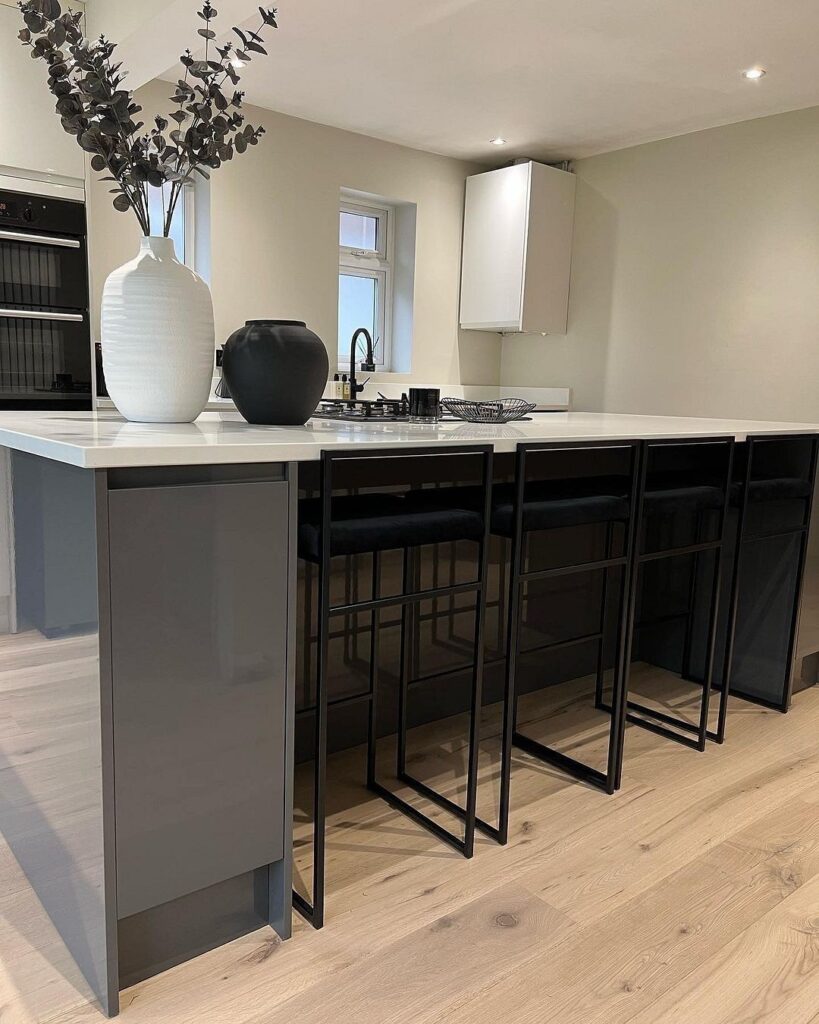
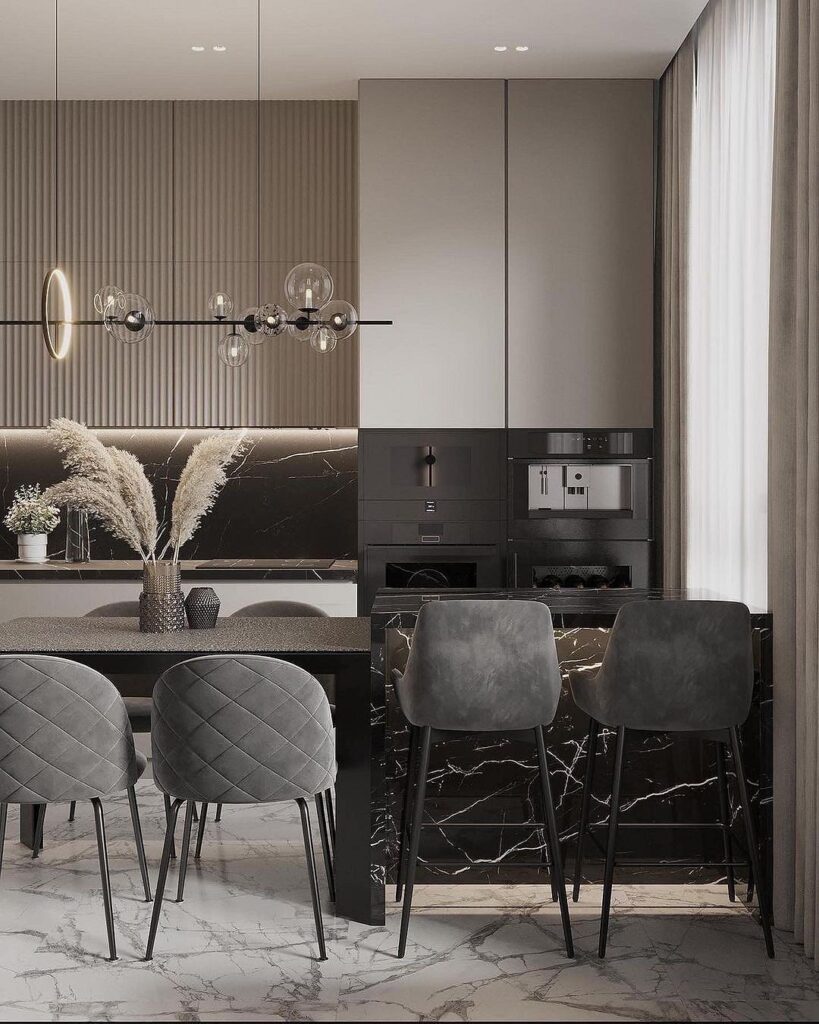
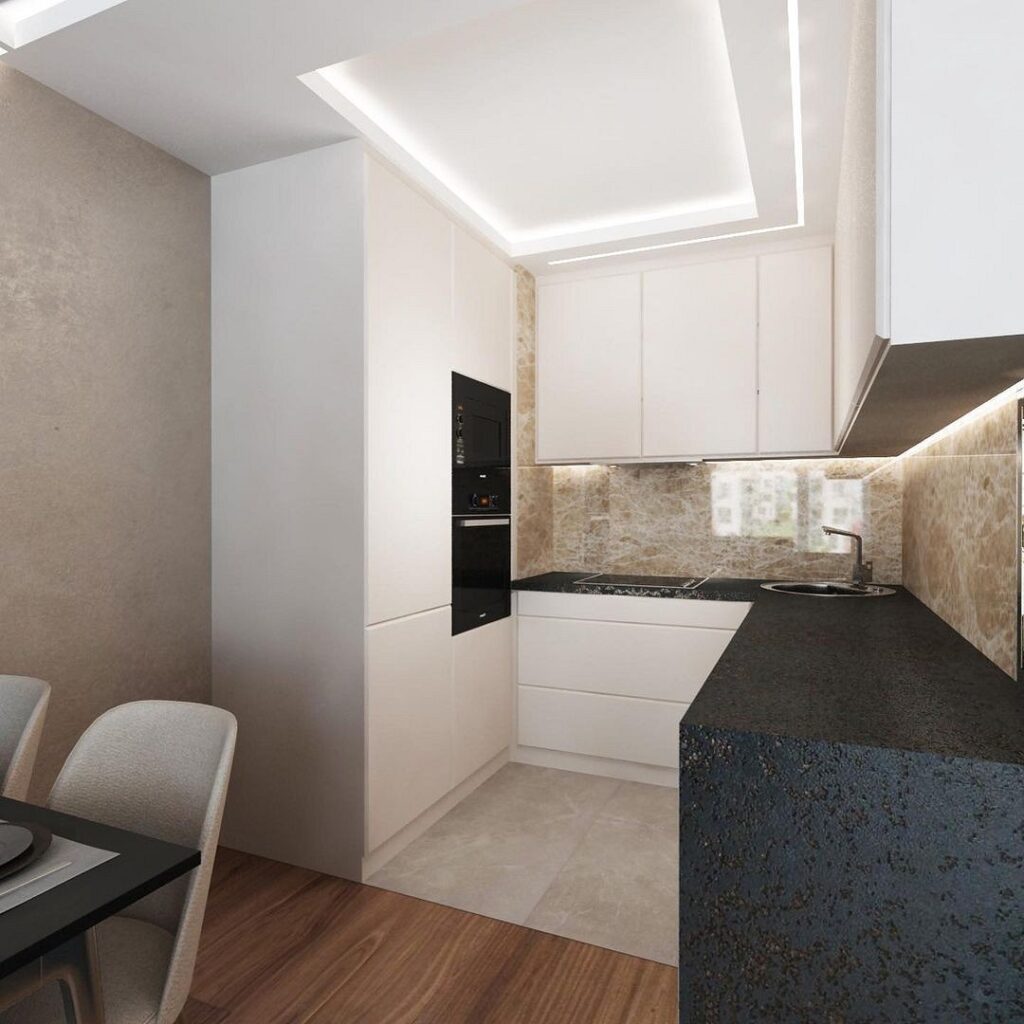
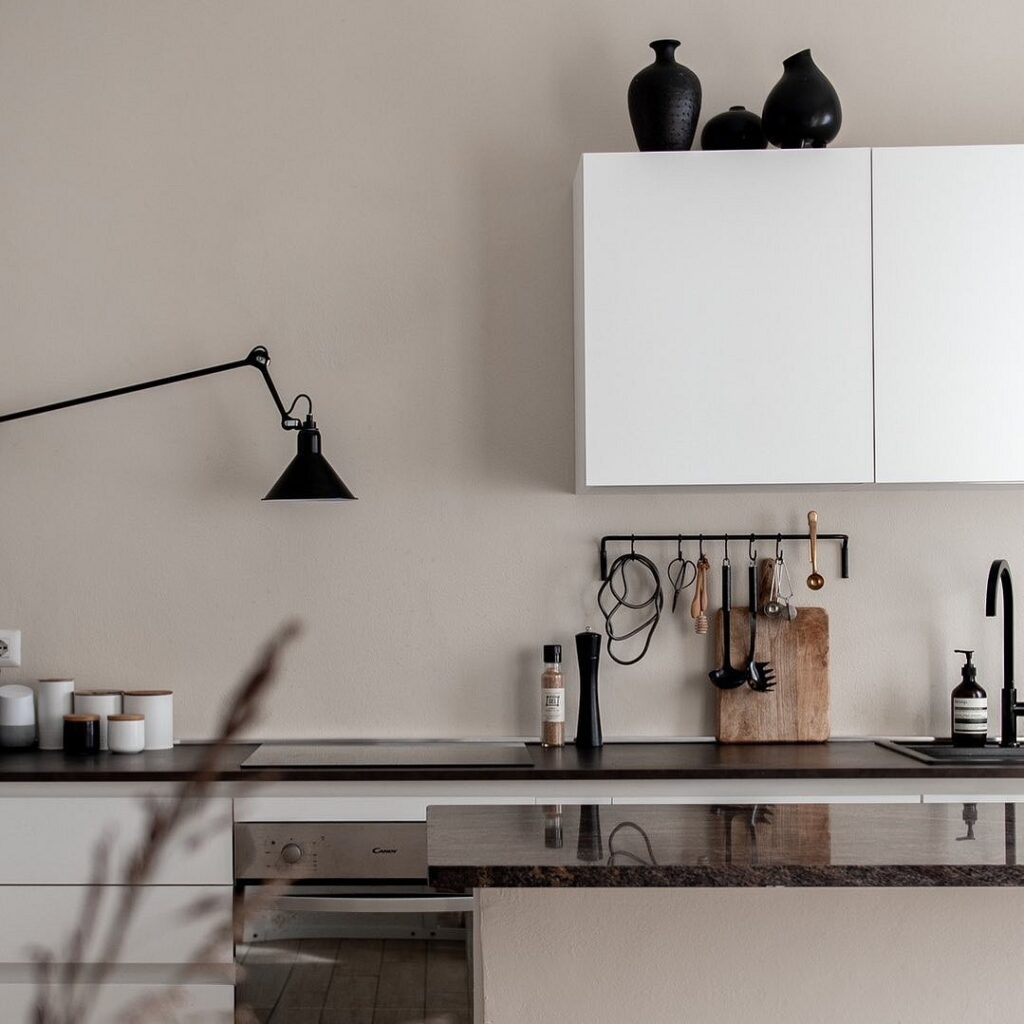
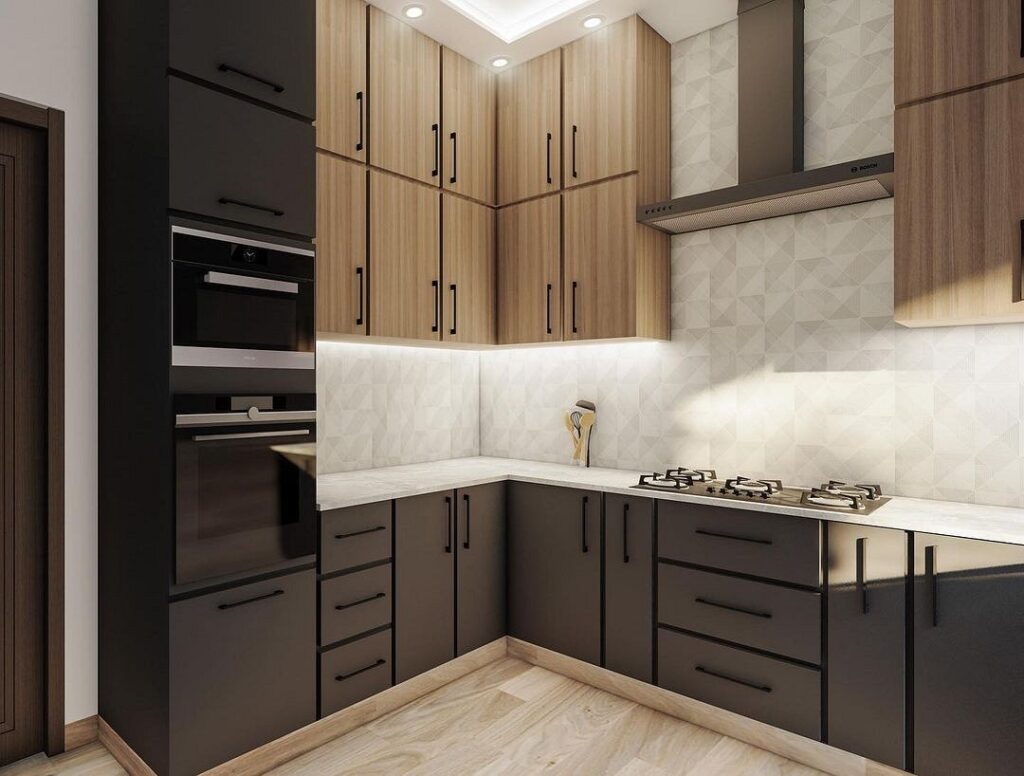
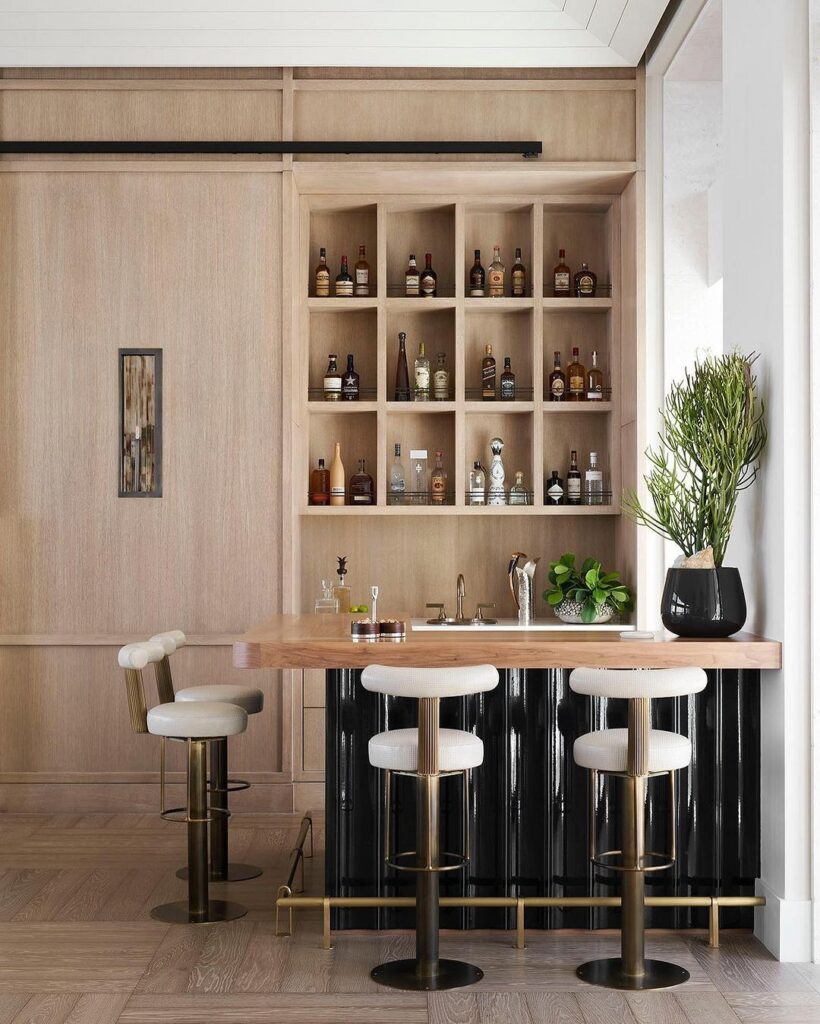
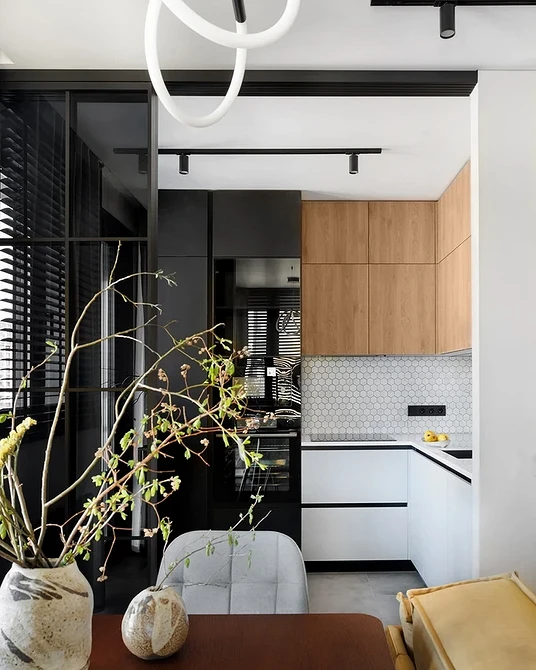
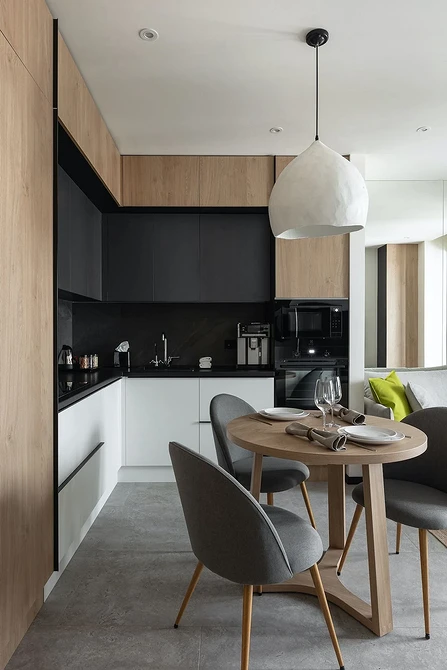
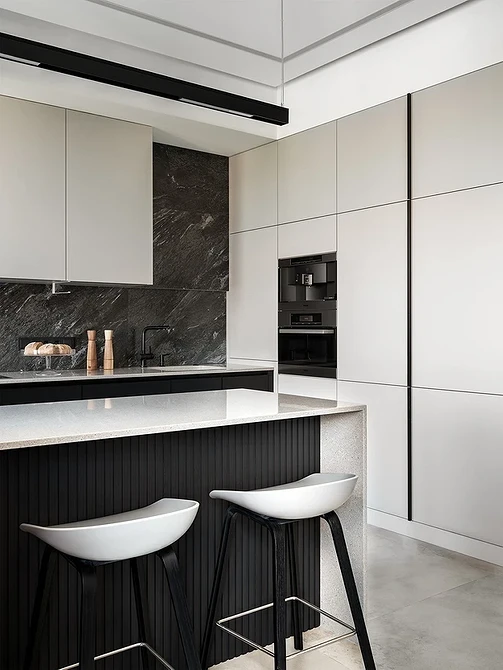
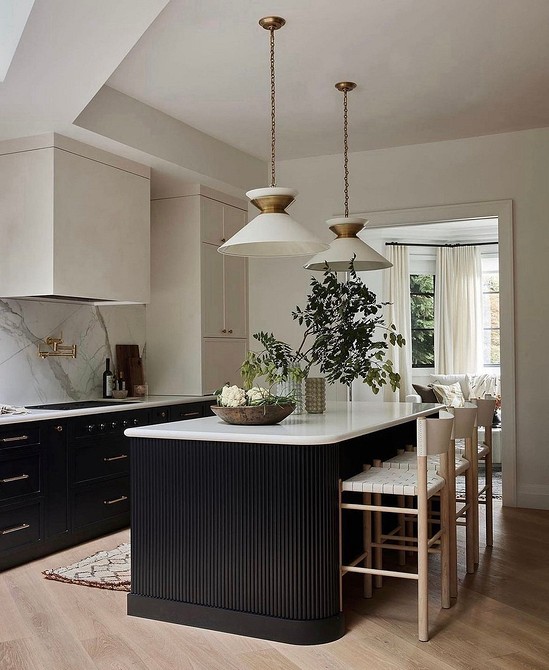
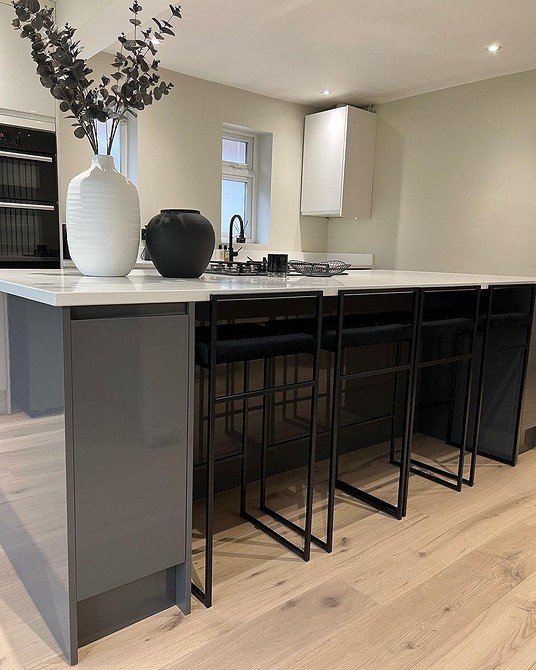
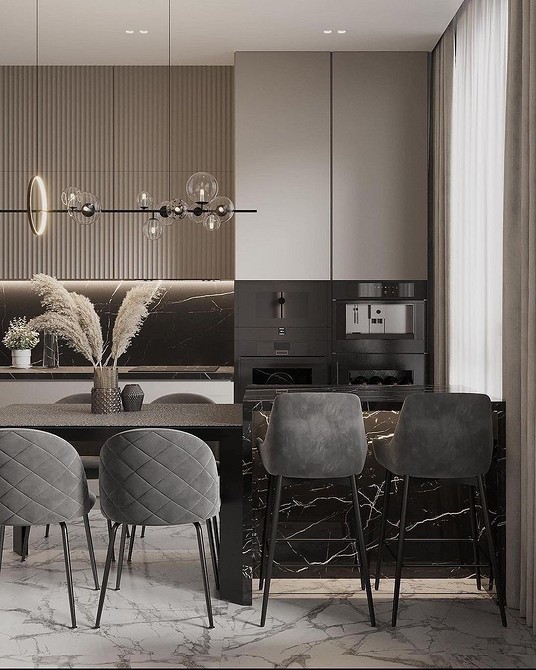
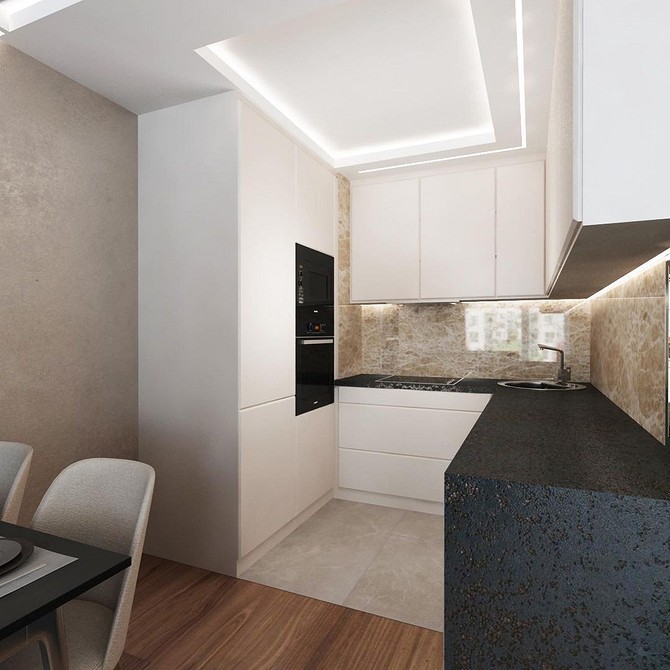
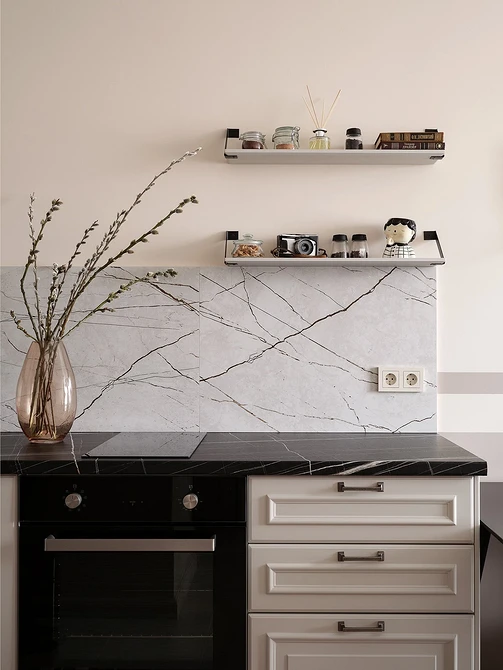
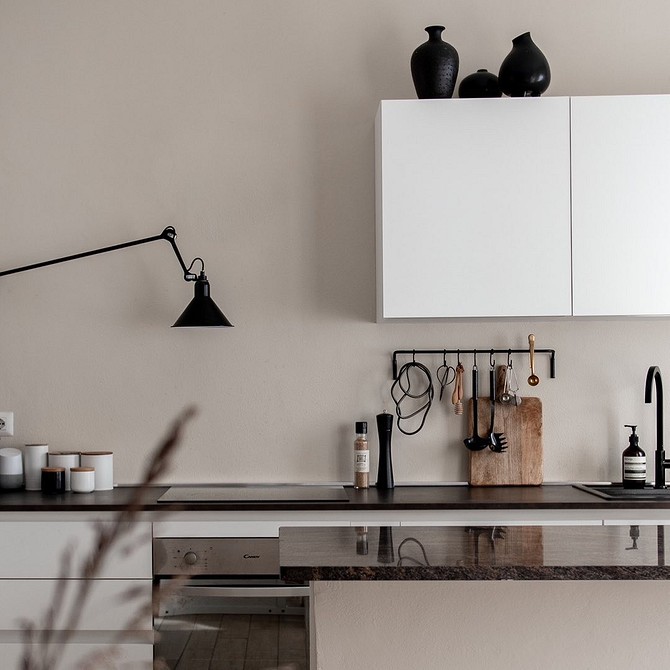
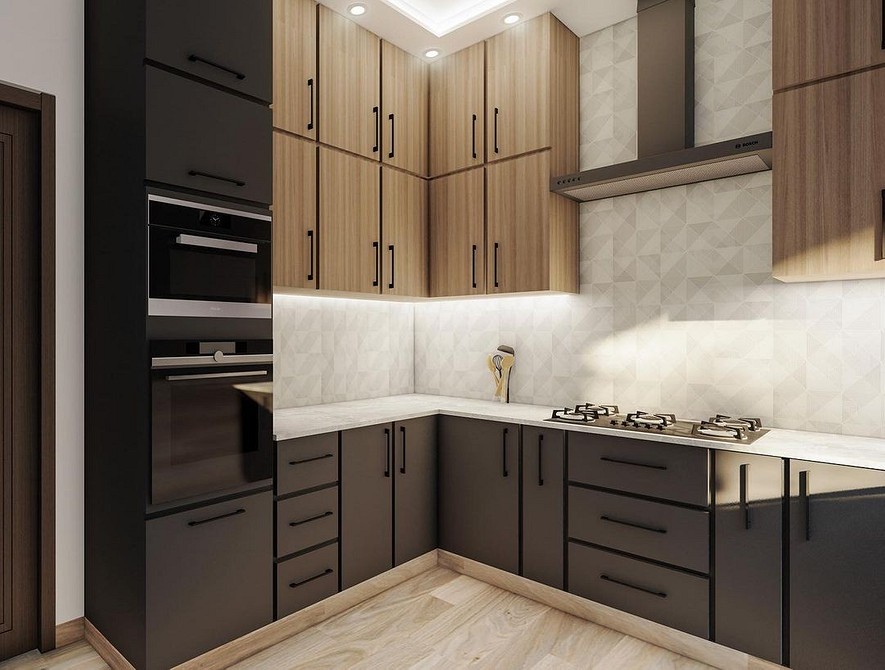
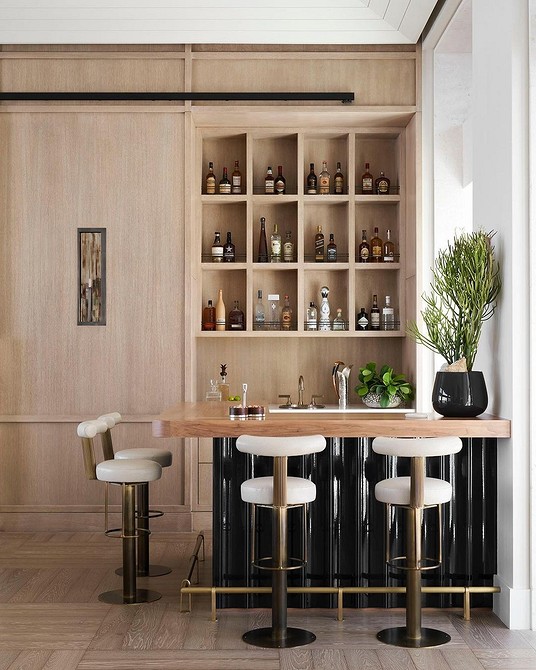
Bright Colors
A dining and eating area decorated in a juicy, saturated palette is a dream for many.
But such colors often look too simple and artless. Adding coal-soot tones can be the solution. Especially good is a black-and-yellow kitchen — bright, daring, and eye-catching: it’s pleasant to eat, socialize with loved ones, or just relax in it. Combinations with green, terracotta, pink, or azure-blue are equally good, as licorice shades can refine any part of the spectrum. A duo with gold and bronze is also great — these shades can be used for lighting fixtures or hardware.
If the contrast becomes excessive, use color spots as small but noticeable accents or replace them with pastels.
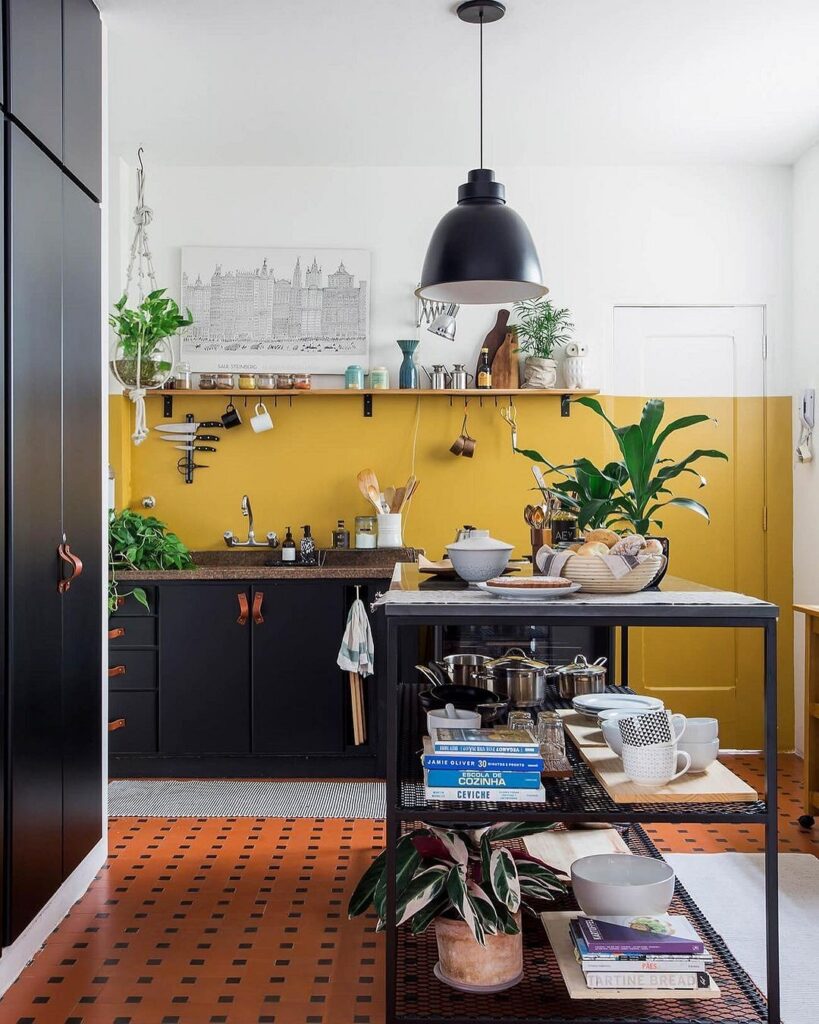
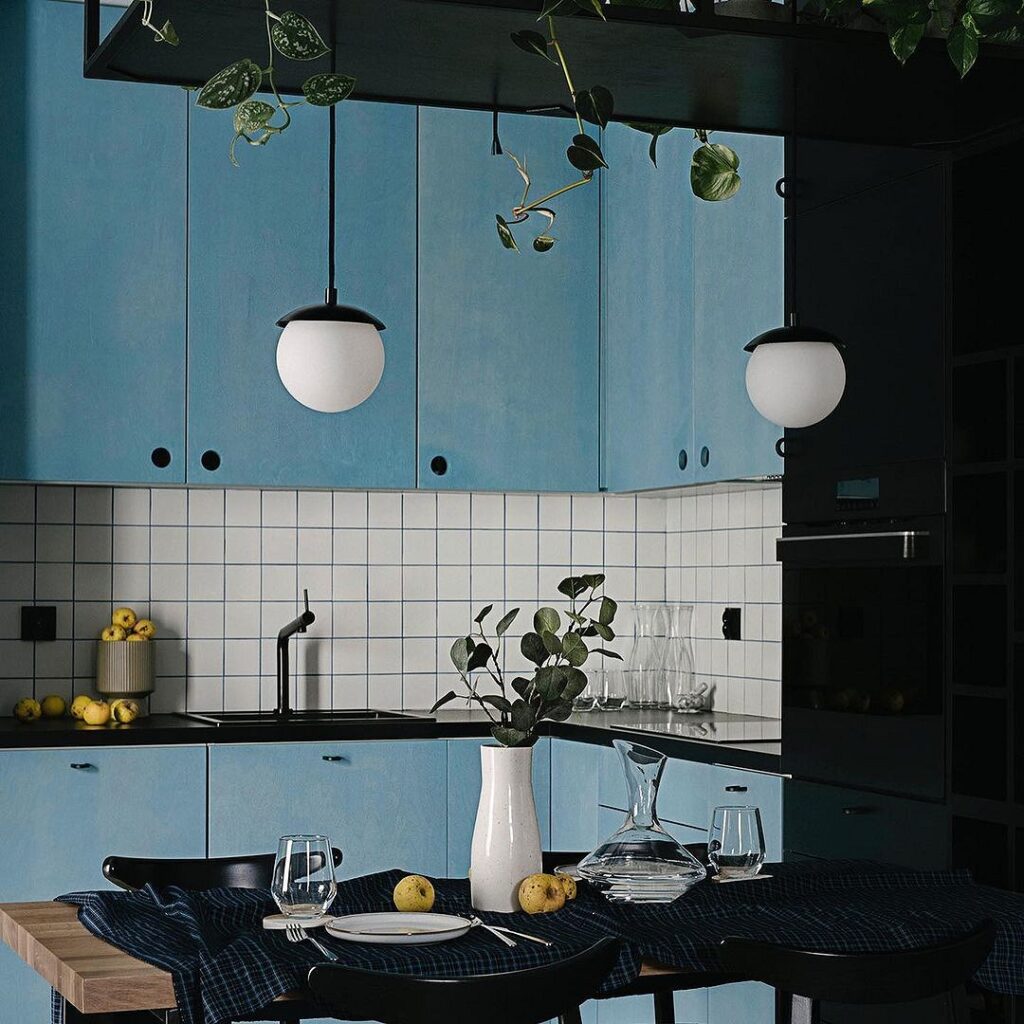
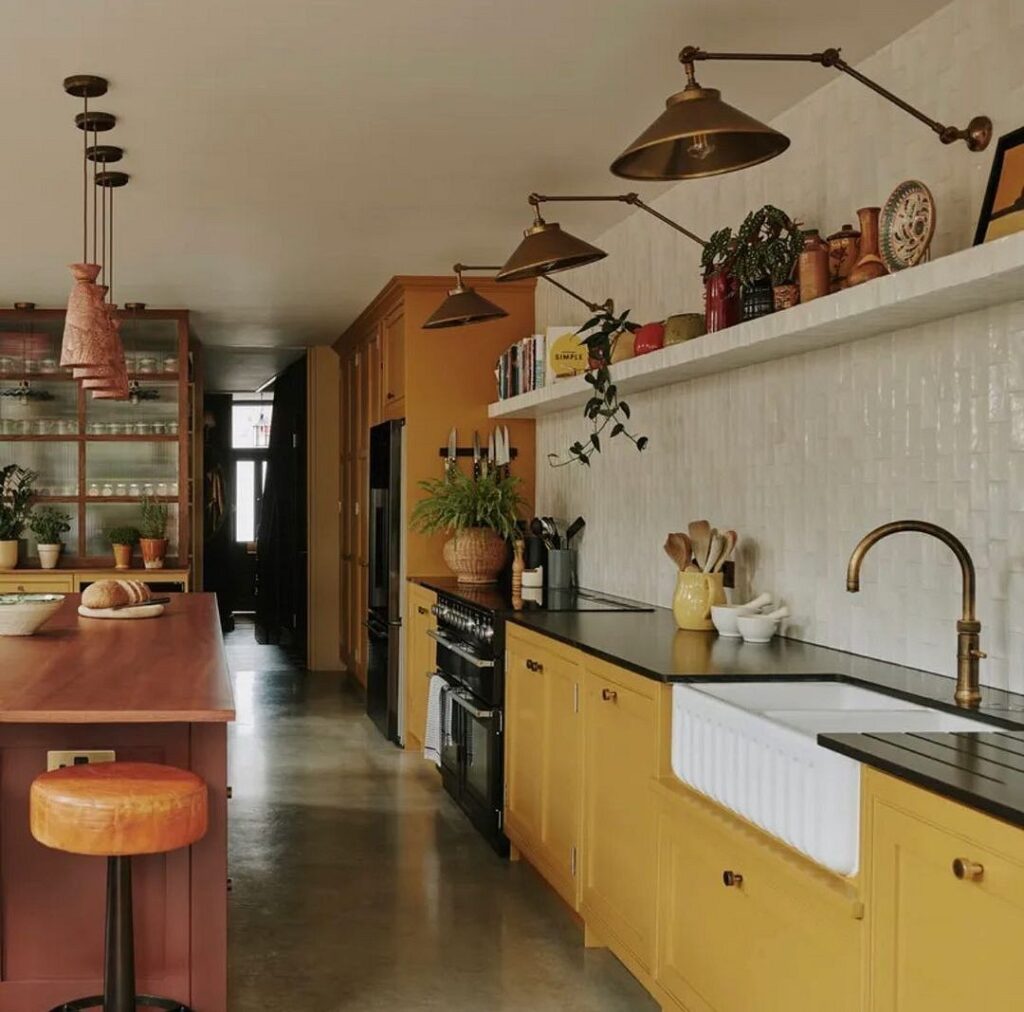
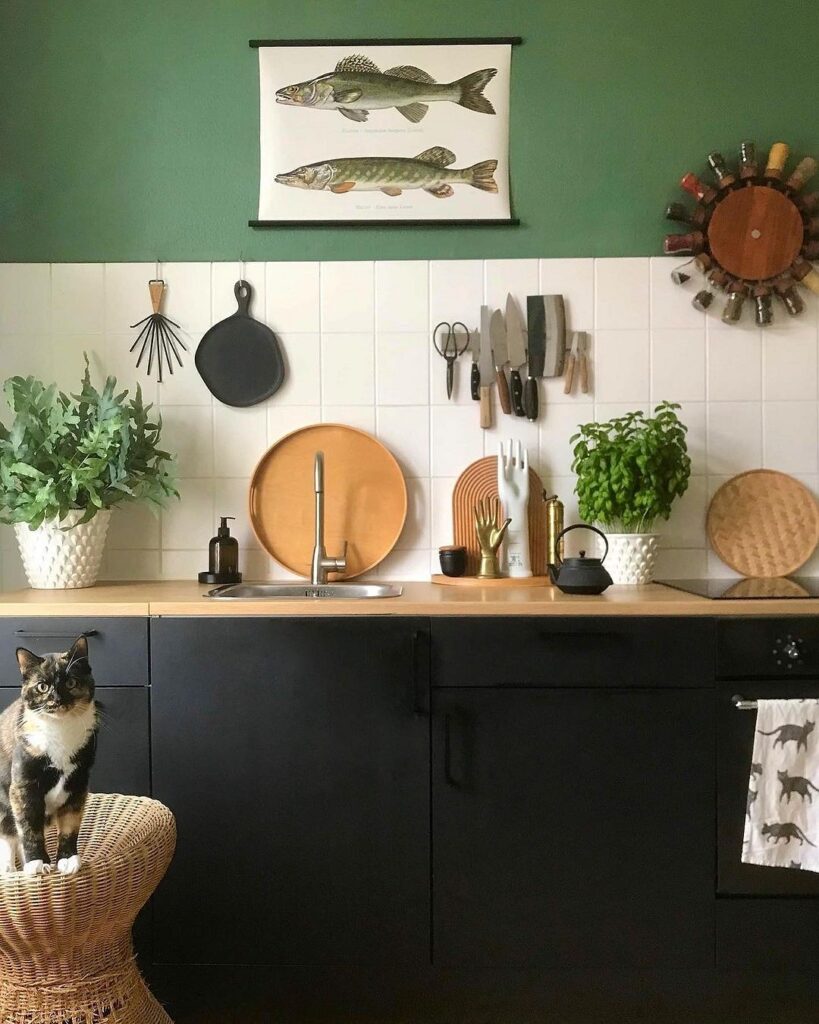
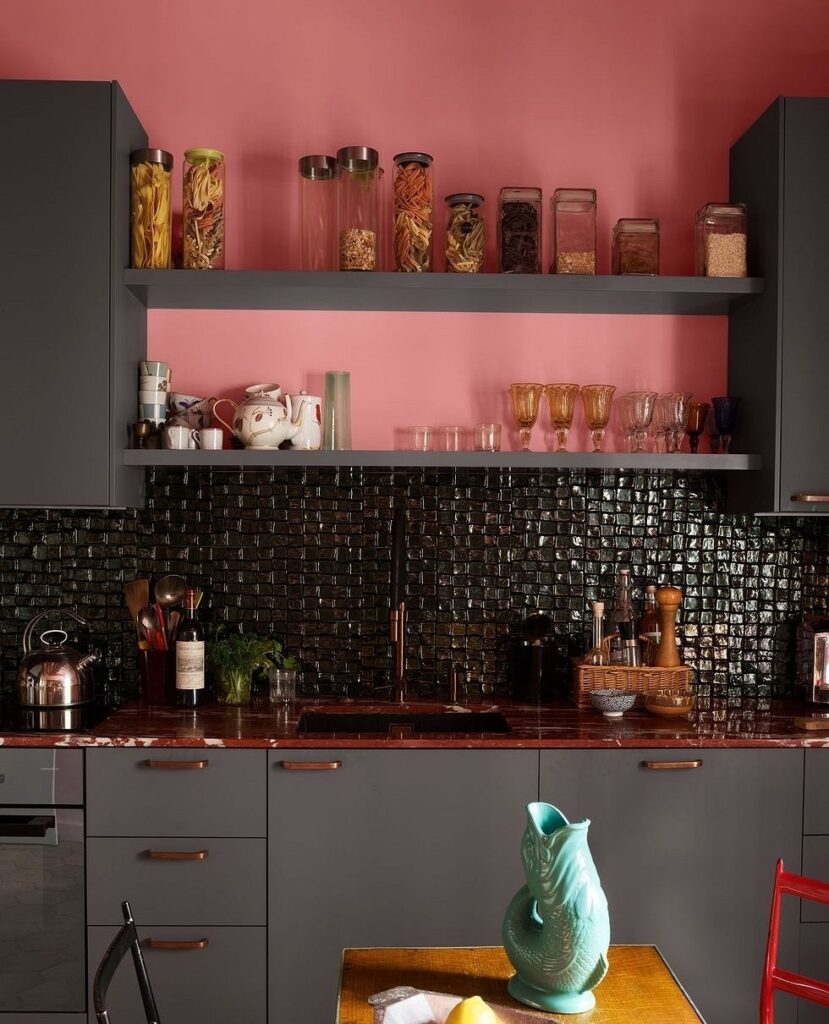
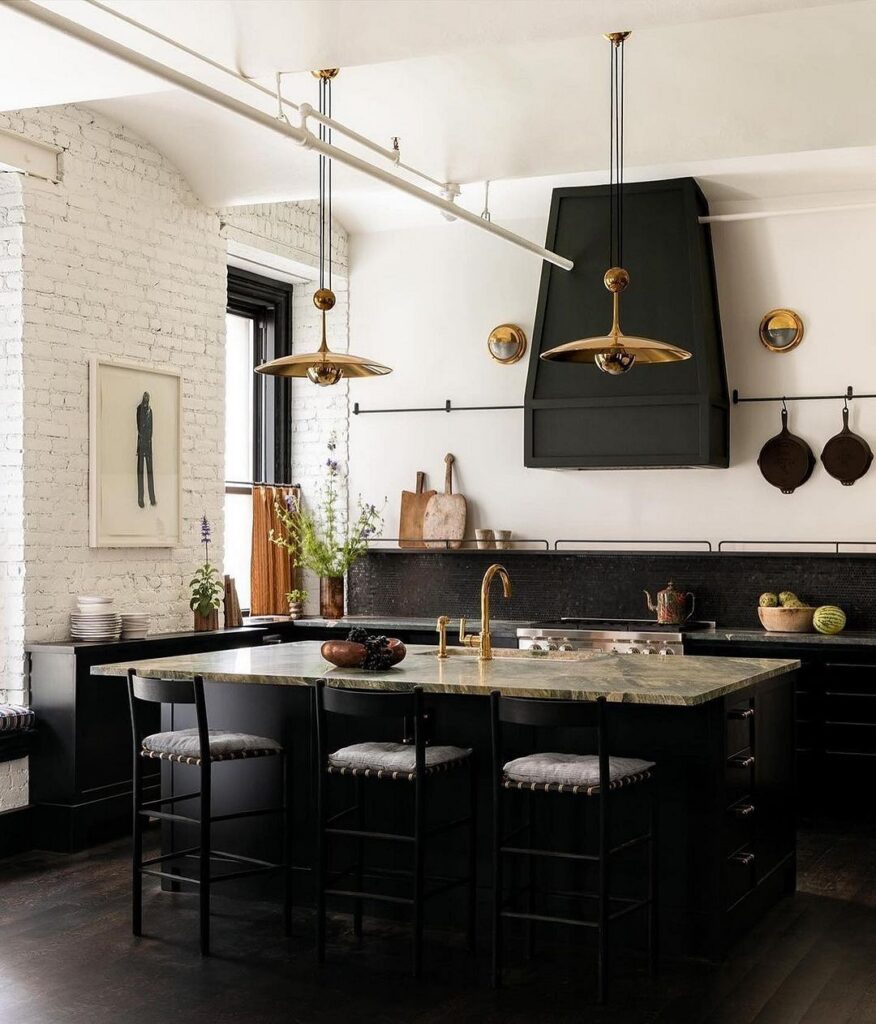
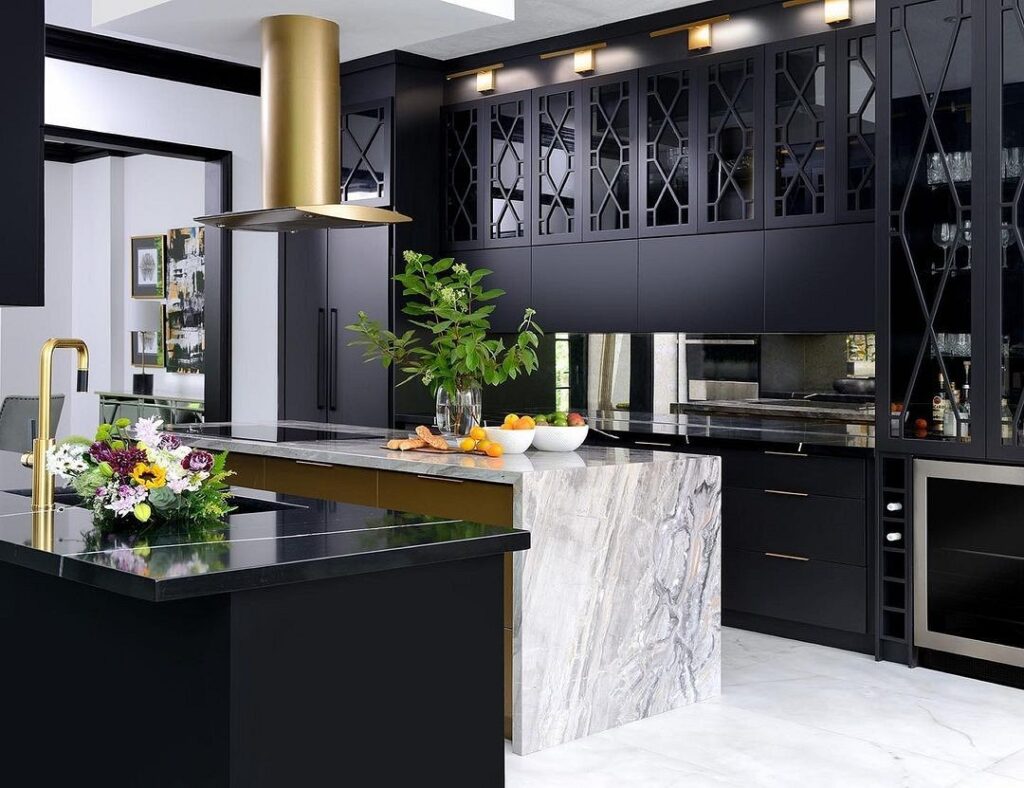

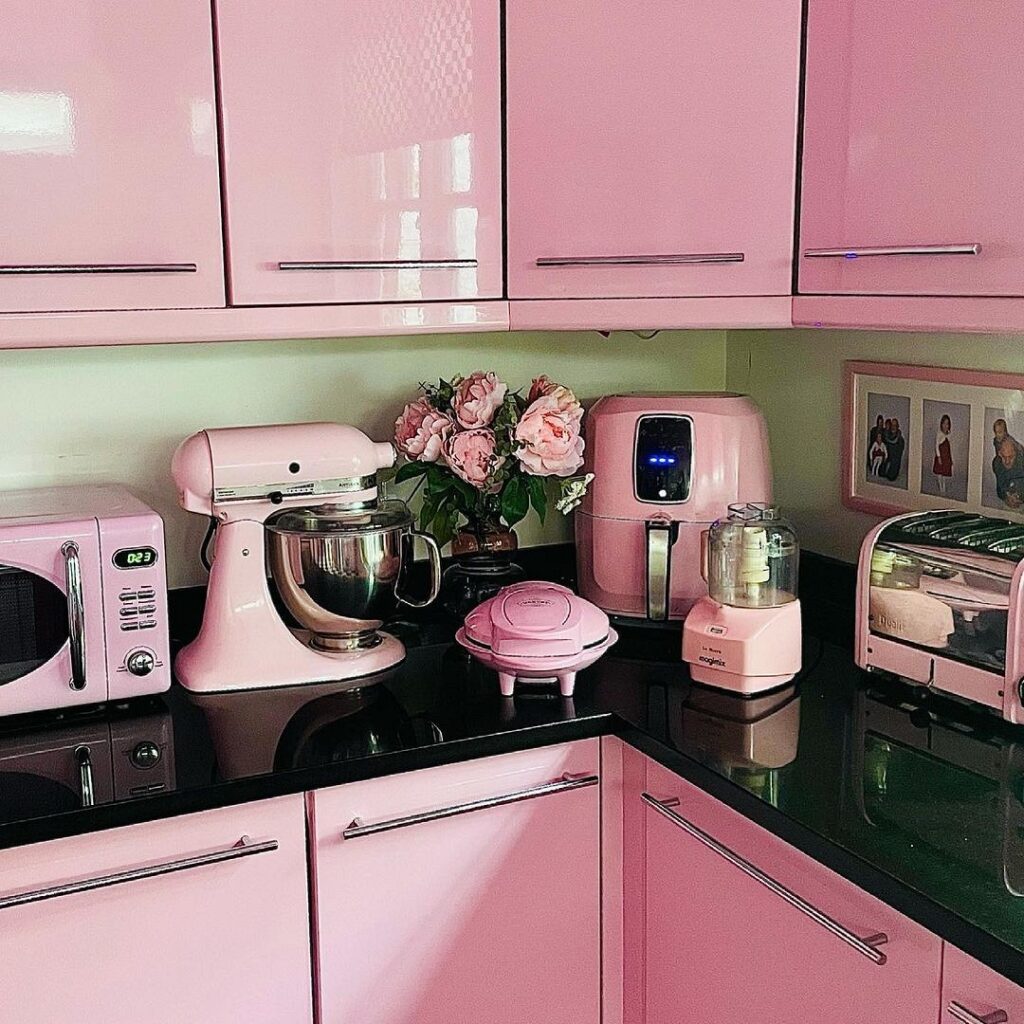
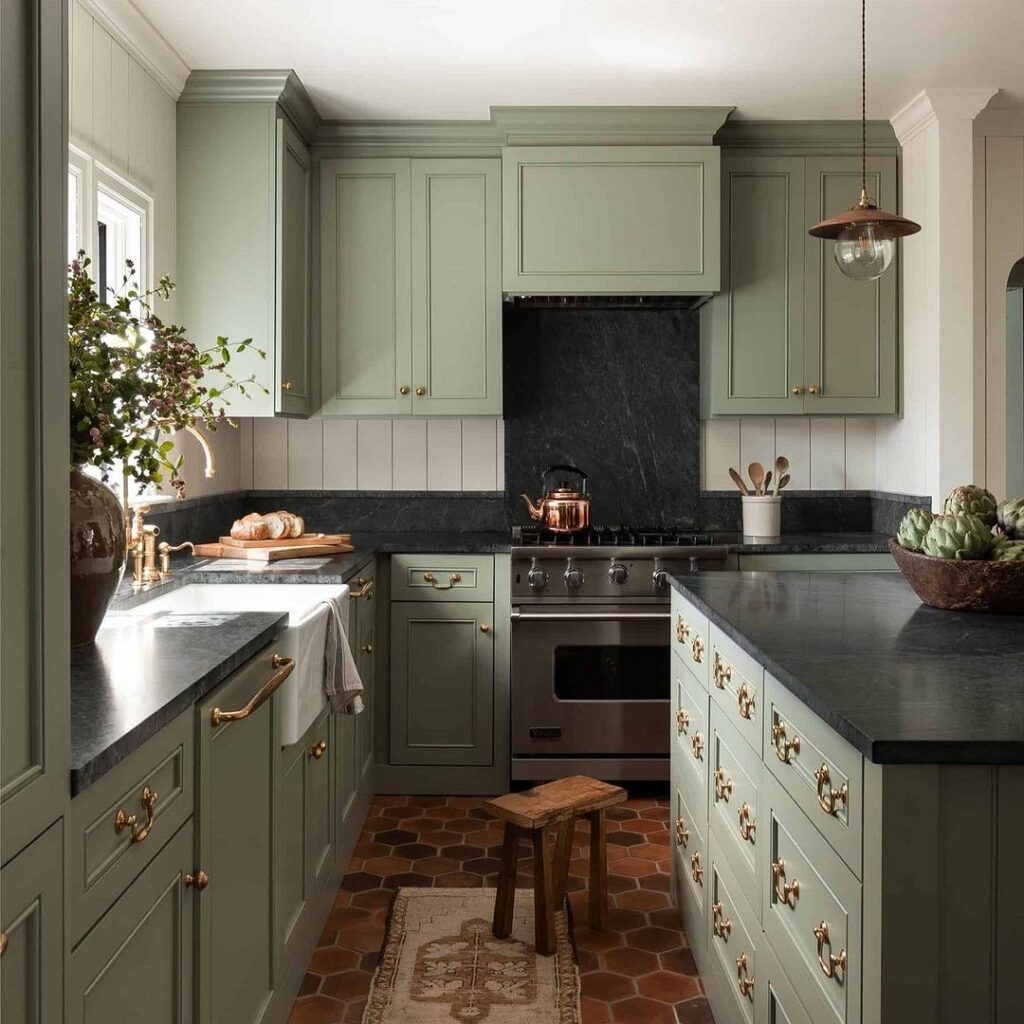
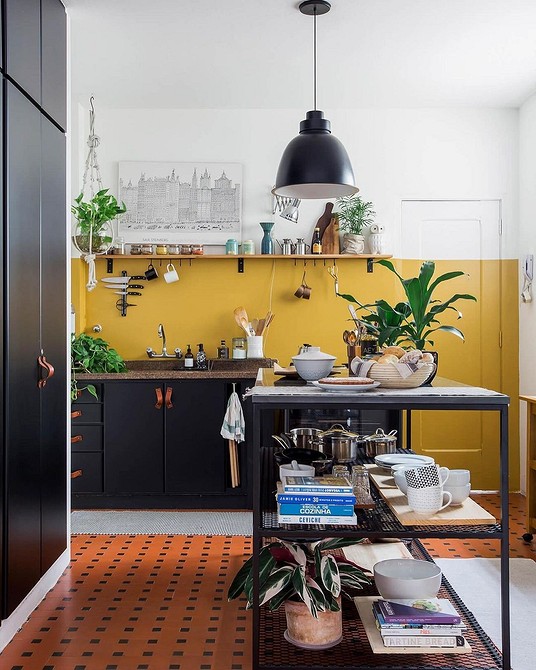
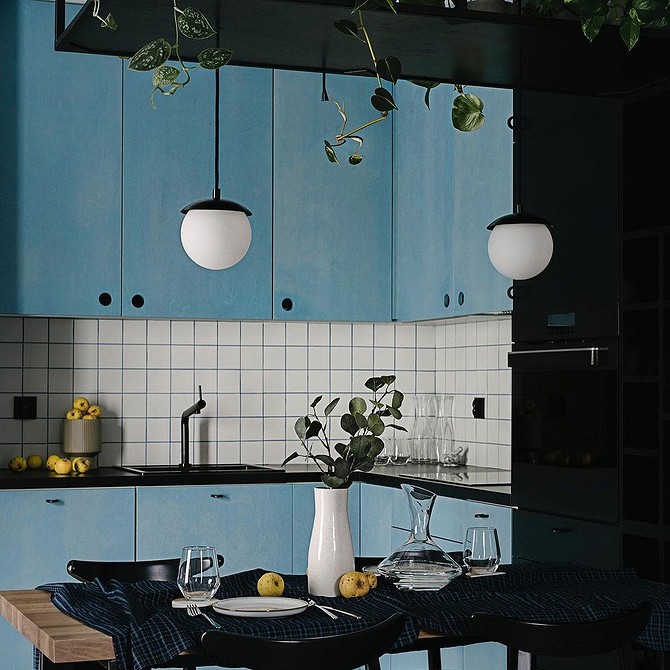
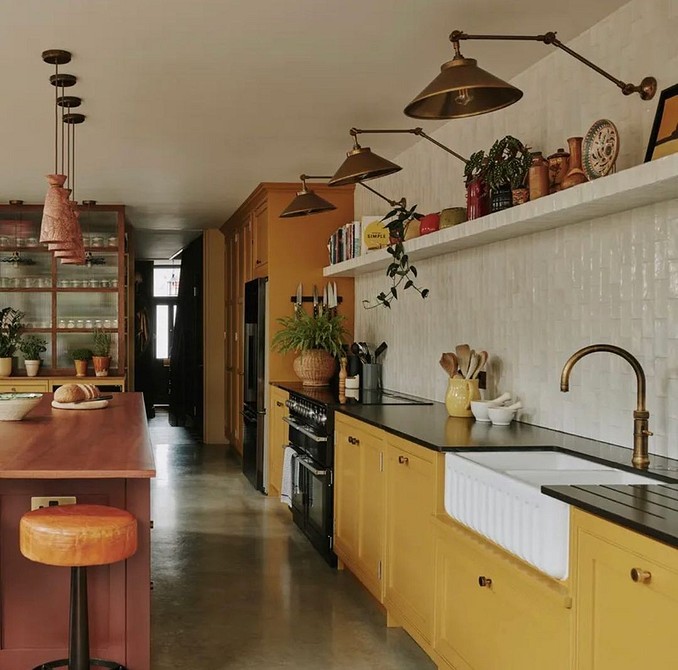
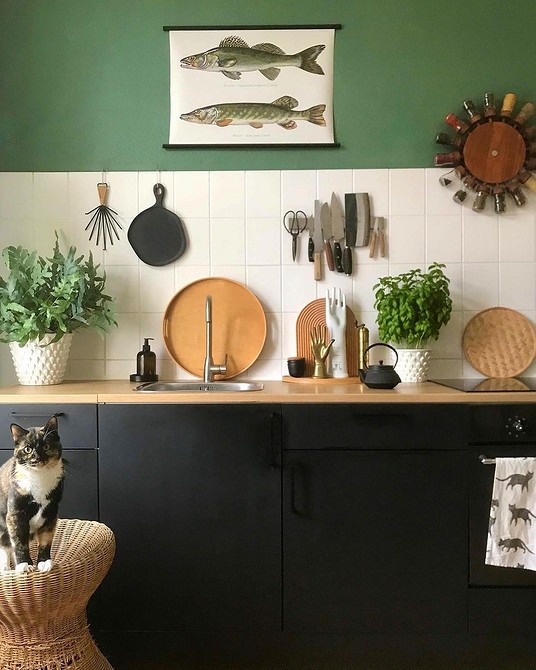
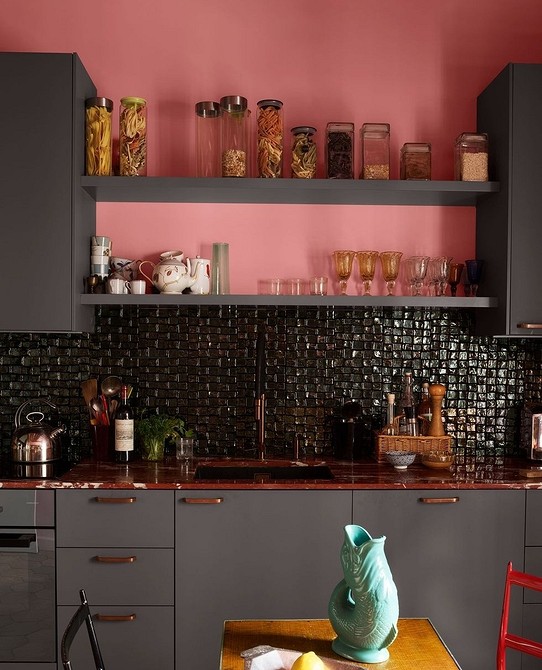

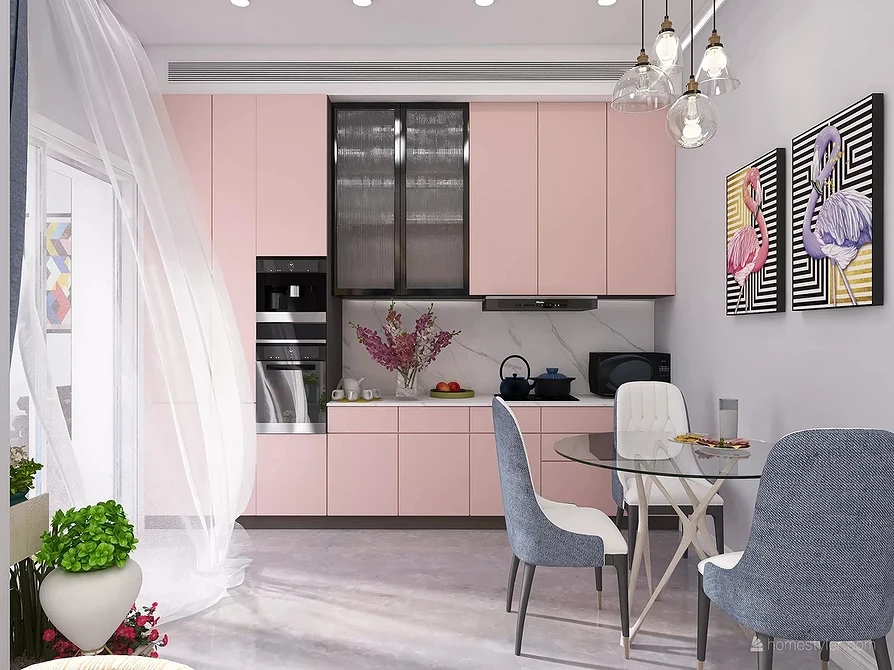
Wood
A black-and-wood kitchen is a case where you don’t have to think long about combining shades.

All types of wood harmonize with any dark tones, from deep coal to more neutral graphite. The natural texture of wood looks advantageous against an anthracite background and softens it. Moreover, when furniture is made from solid wood, it further emphasizes the elegance and richness of the setting.
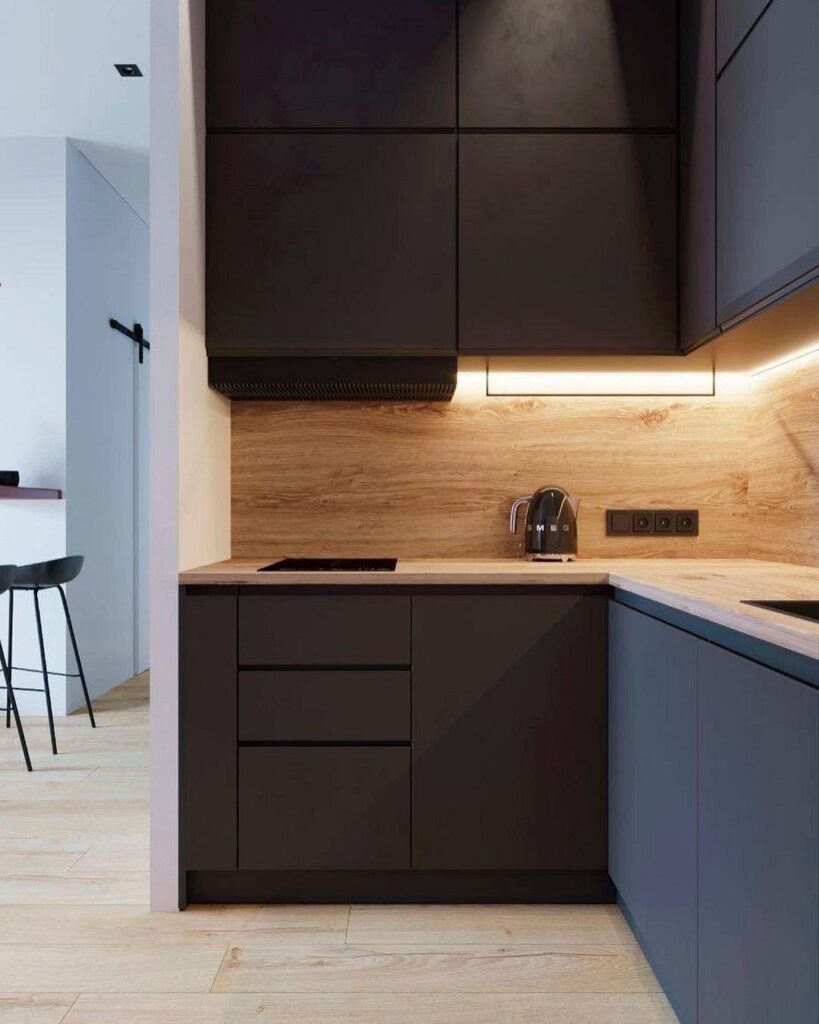

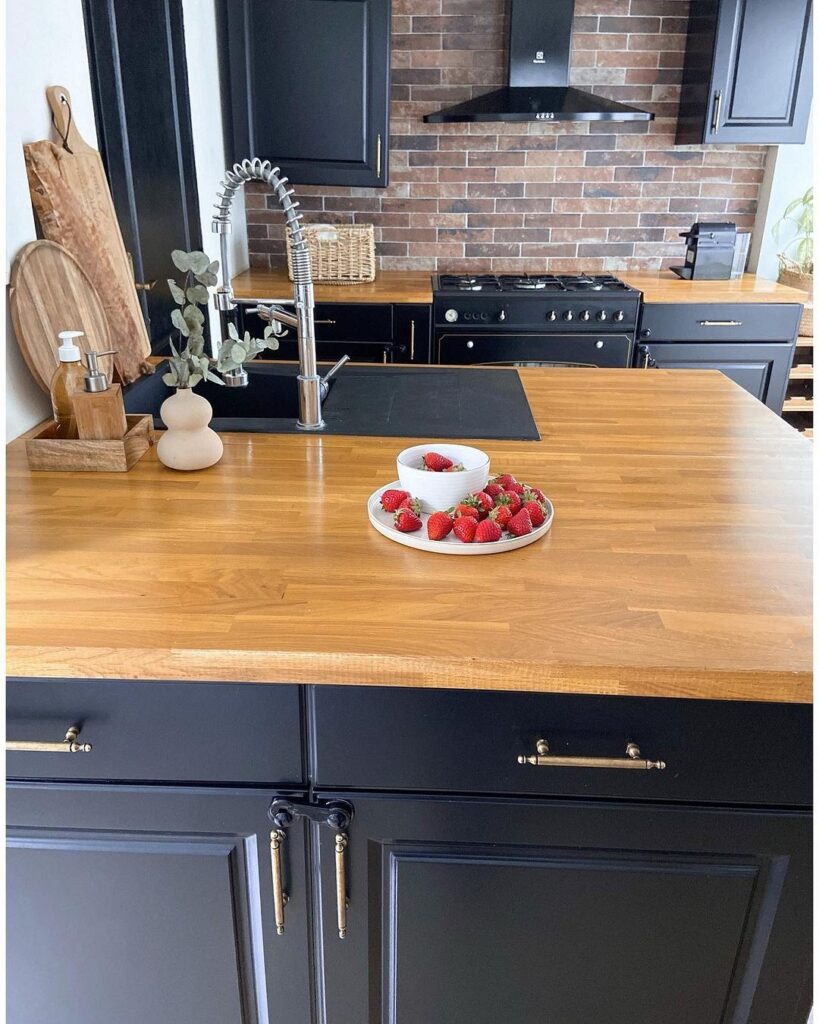
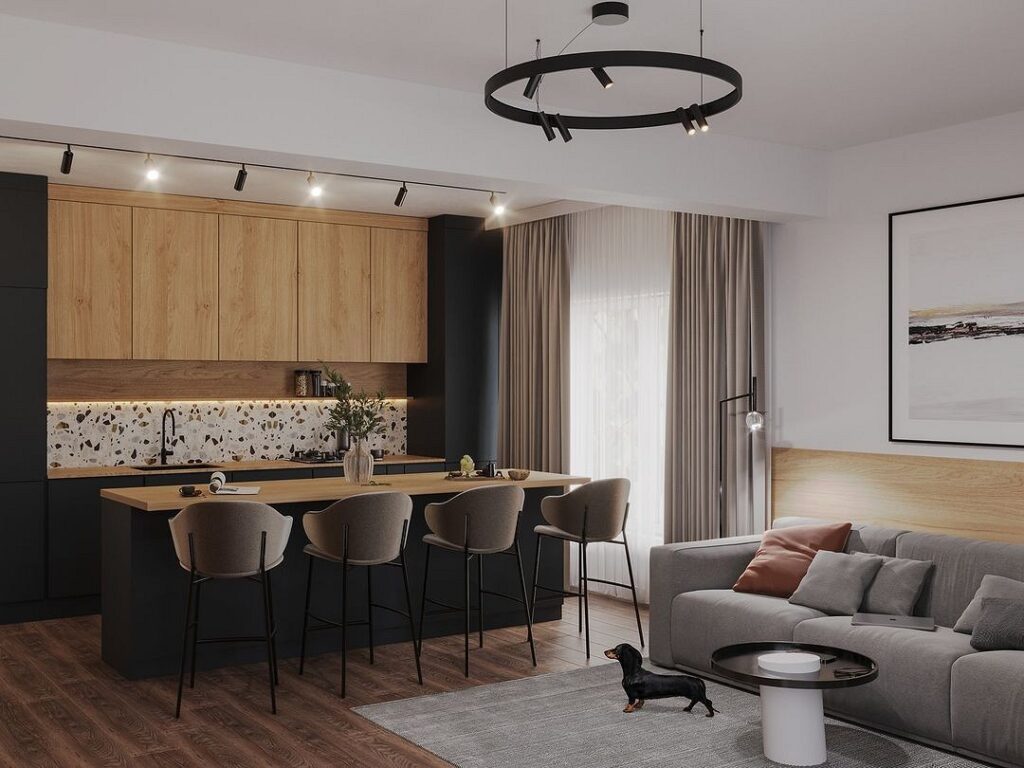

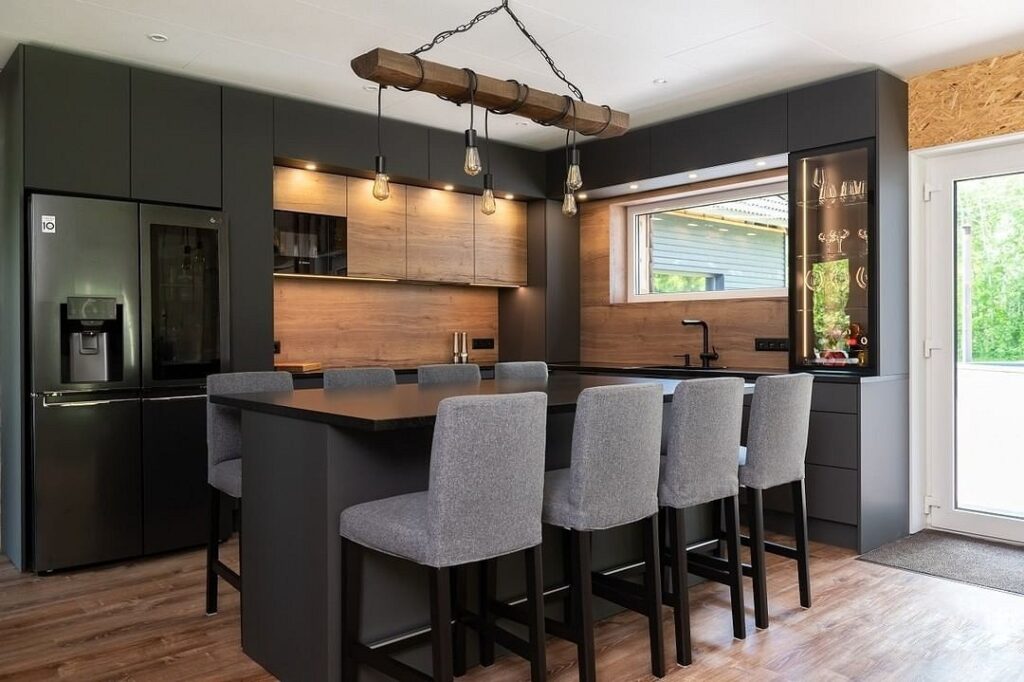
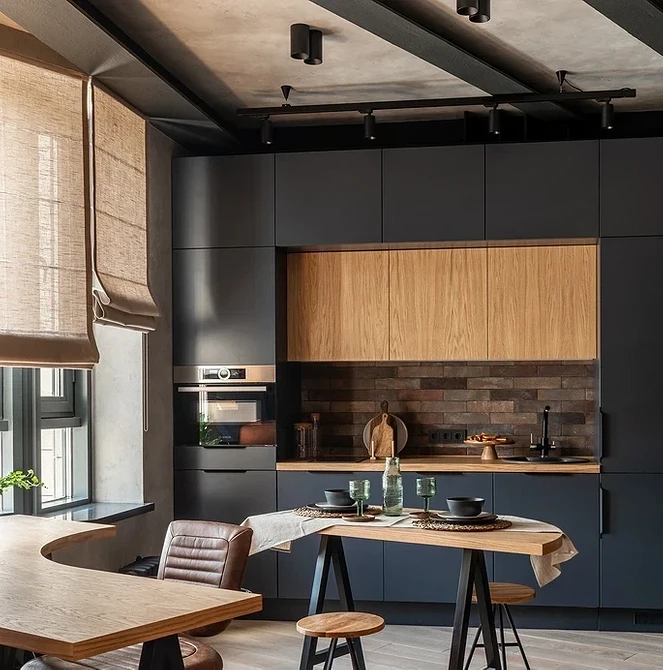
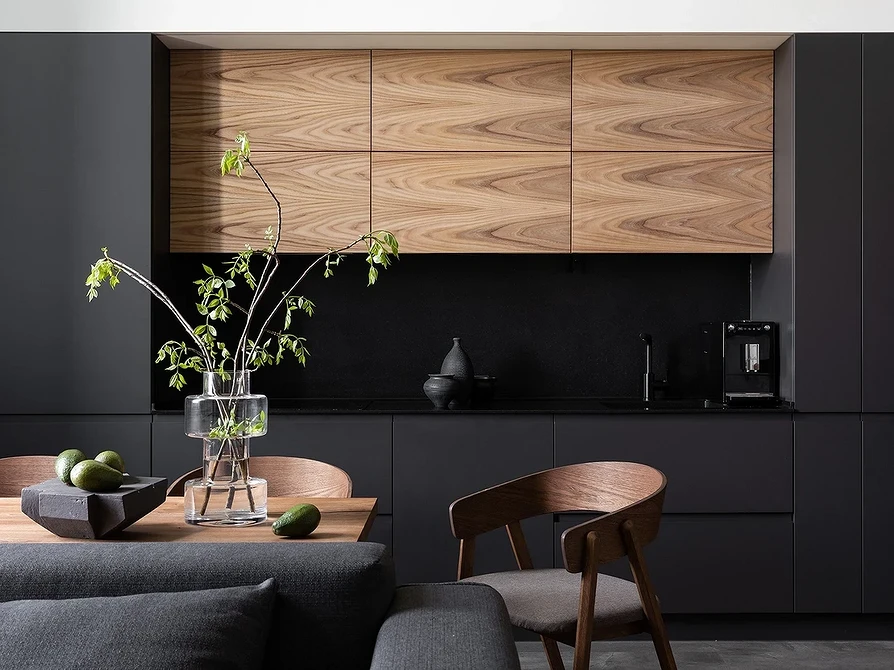

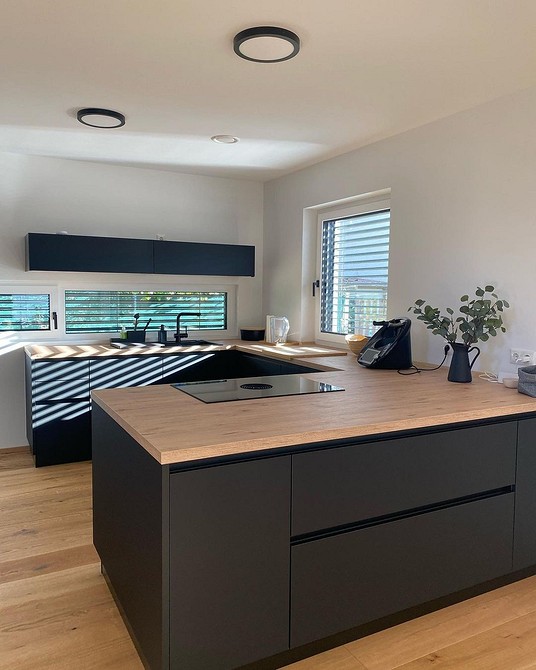
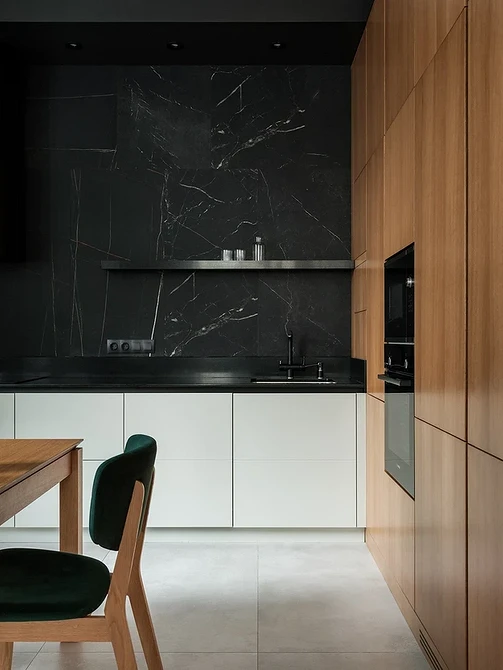
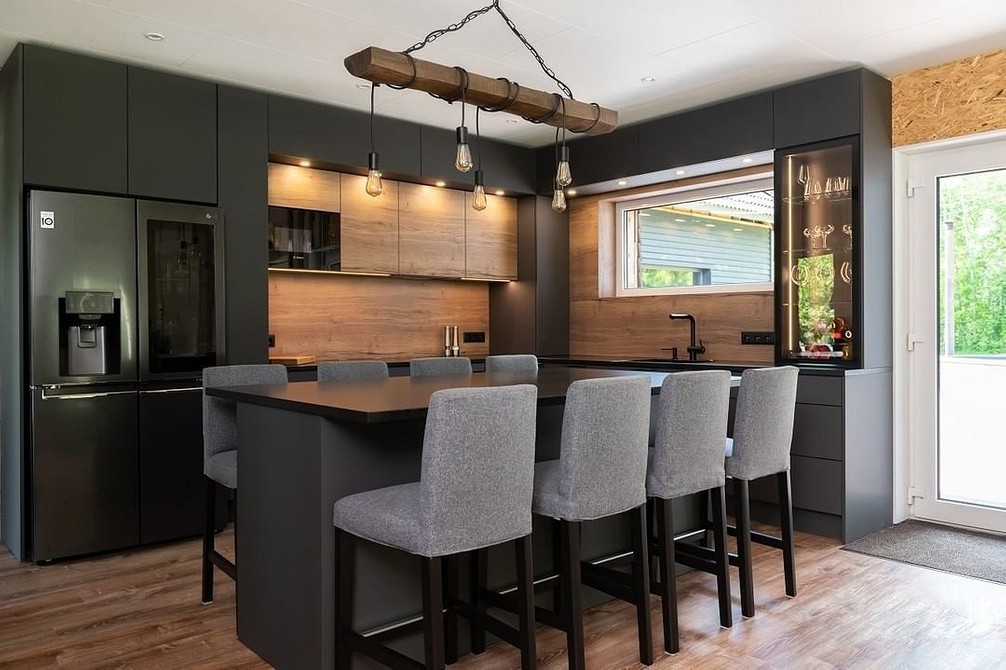
Factors to Consider
When choosing an interior in obsidian shades, remember that they can be tricky and unpredictable. How they manifest depends on three main factors: room size, light sources, and materials used.
Room Size
The larger the room, the broader the possibilities for using a dark palette.
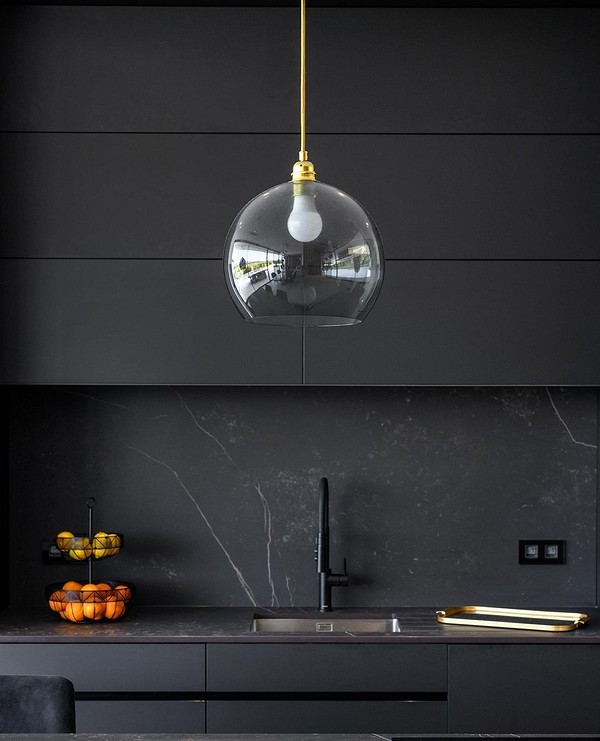
Compare photos of black-and-white kitchens with fully dark ones (even if they are in softer graphite tones) to see the significant difference between these seemingly similar designs. Licorice shades often make a small room appear smaller, turning it into a closet. At the same time, spacious rooms in anthracite-soot colors look better, becoming more compact and homey cozy.
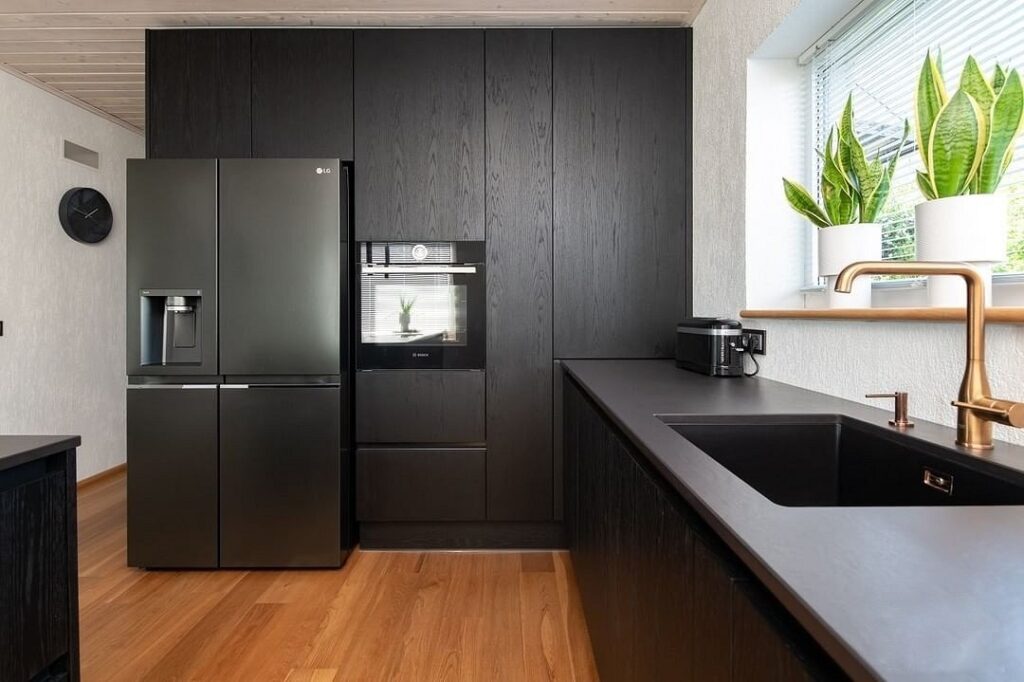
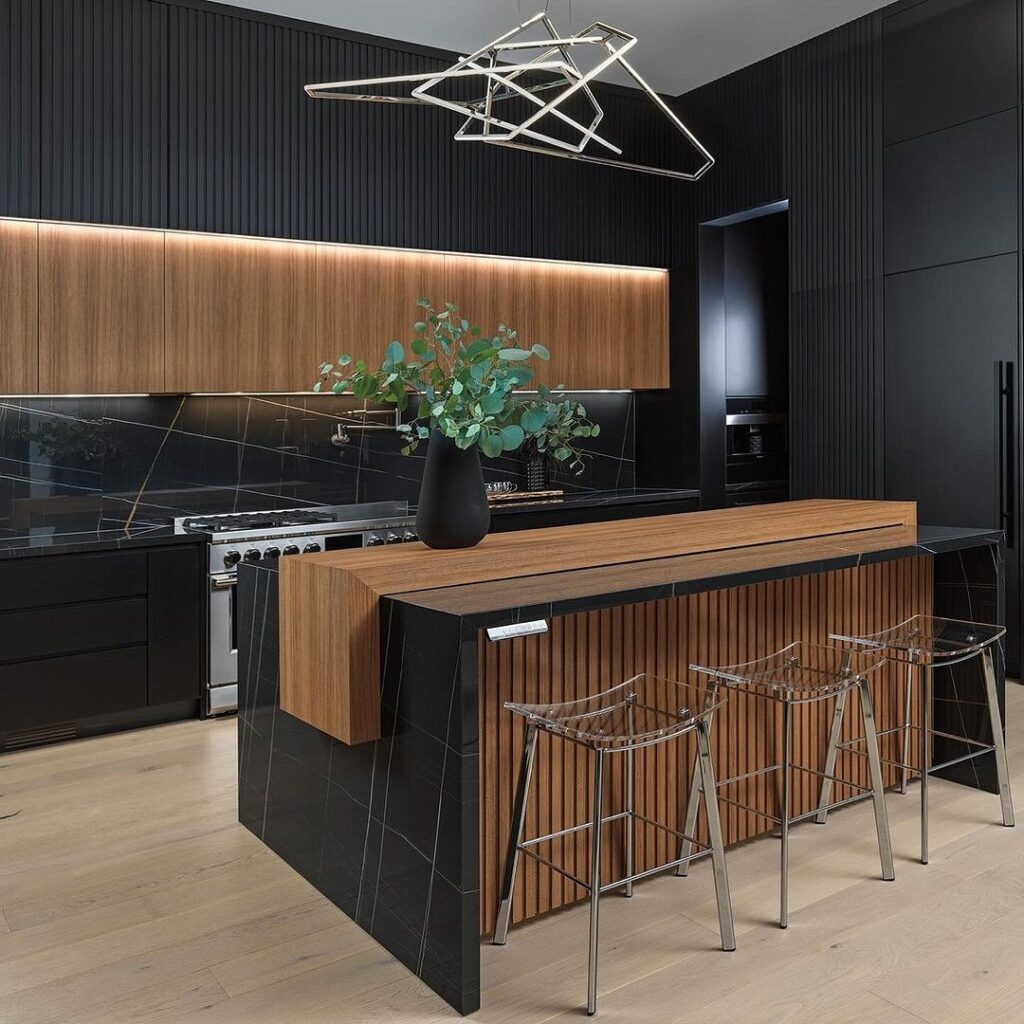
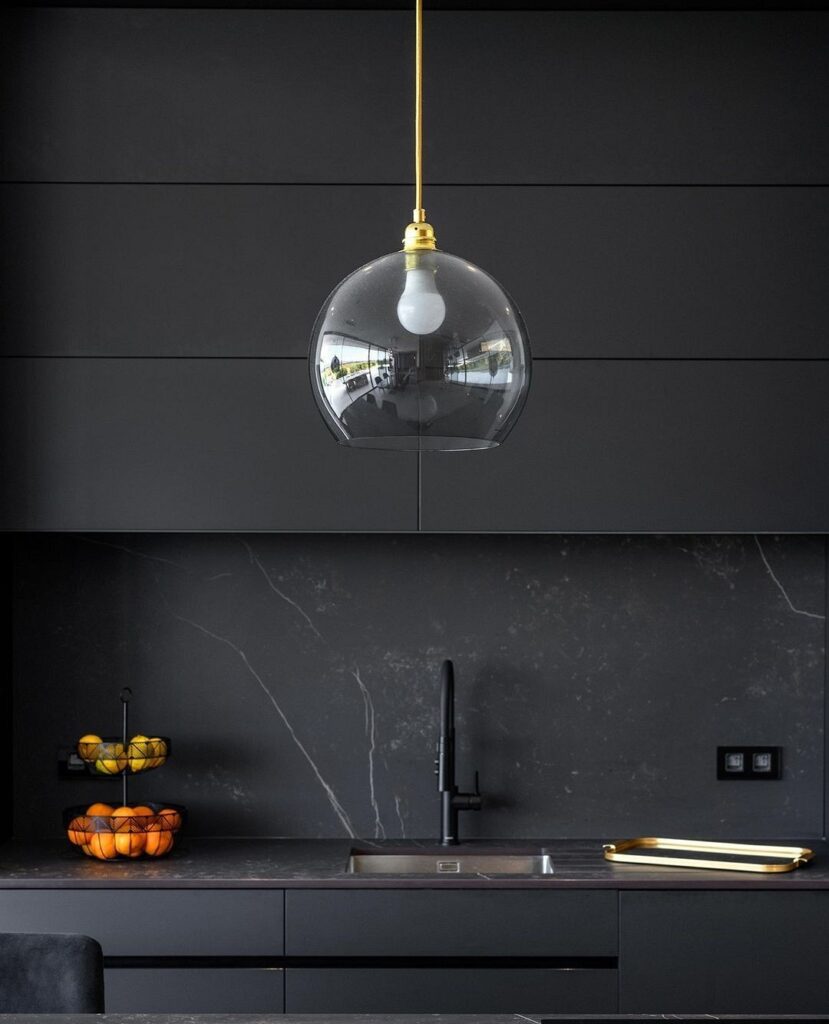
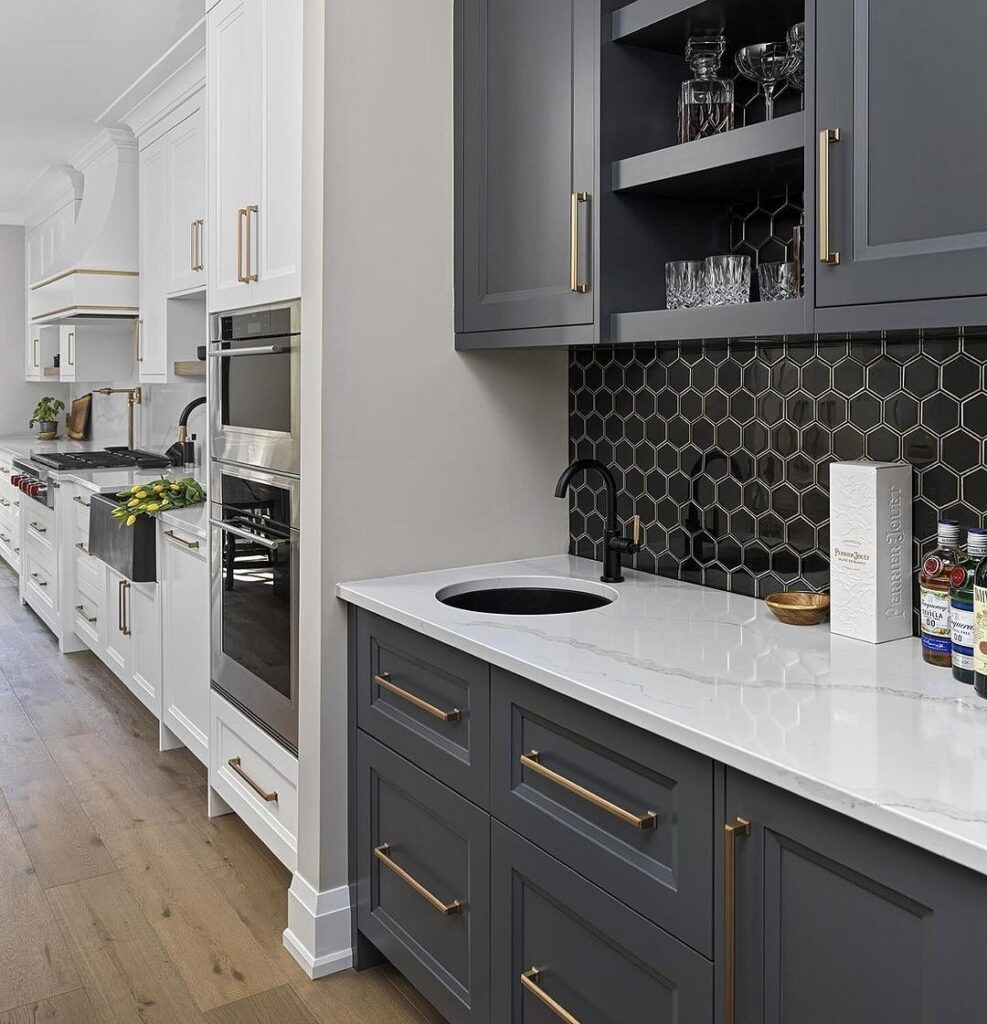


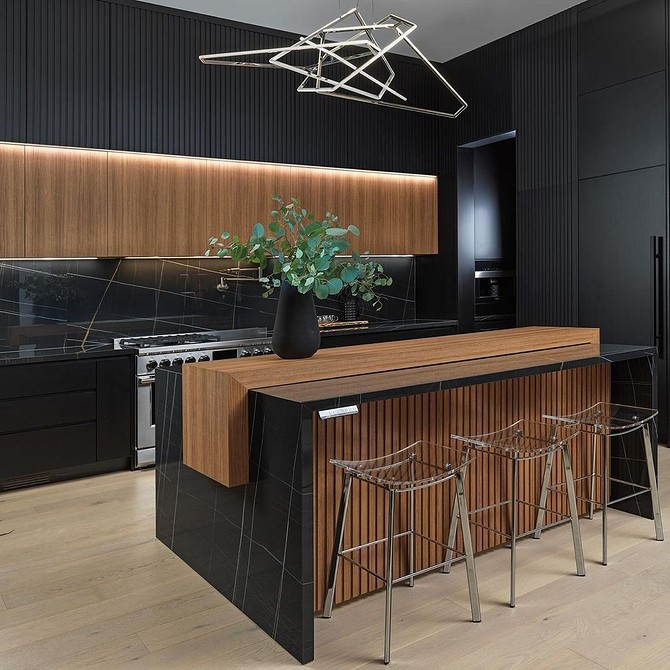
Lighting Features
Its intensity should be directly proportional to the amount of dark colors in the room.
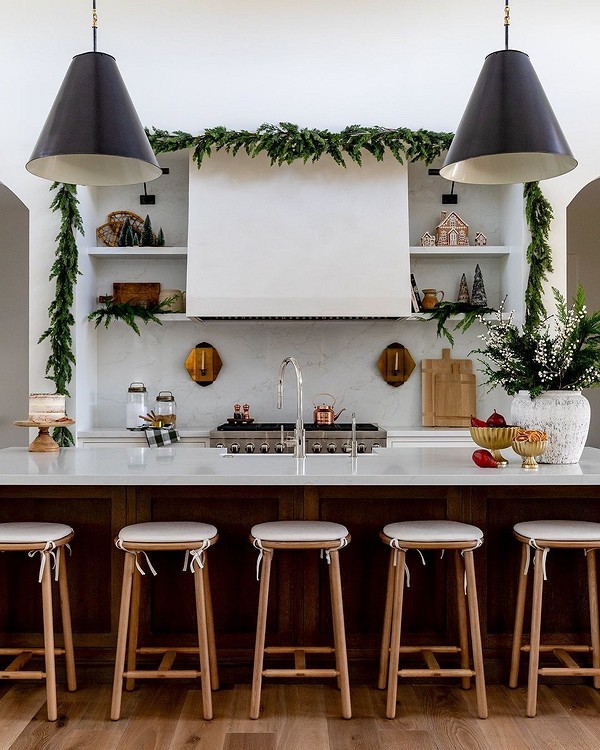
If you have only black chairs for the kitchen and, for instance, a similar kitchen backsplash, a slightly brighter light bulb or under-cabinet lighting might be sufficient. However, when dark shades are dominant, especially if they are matte, you will need not just more, but a significantly increased number of light sources. If this wasn’t considered during the renovation stage, you can always add table and wall lamps to enhance lighting.
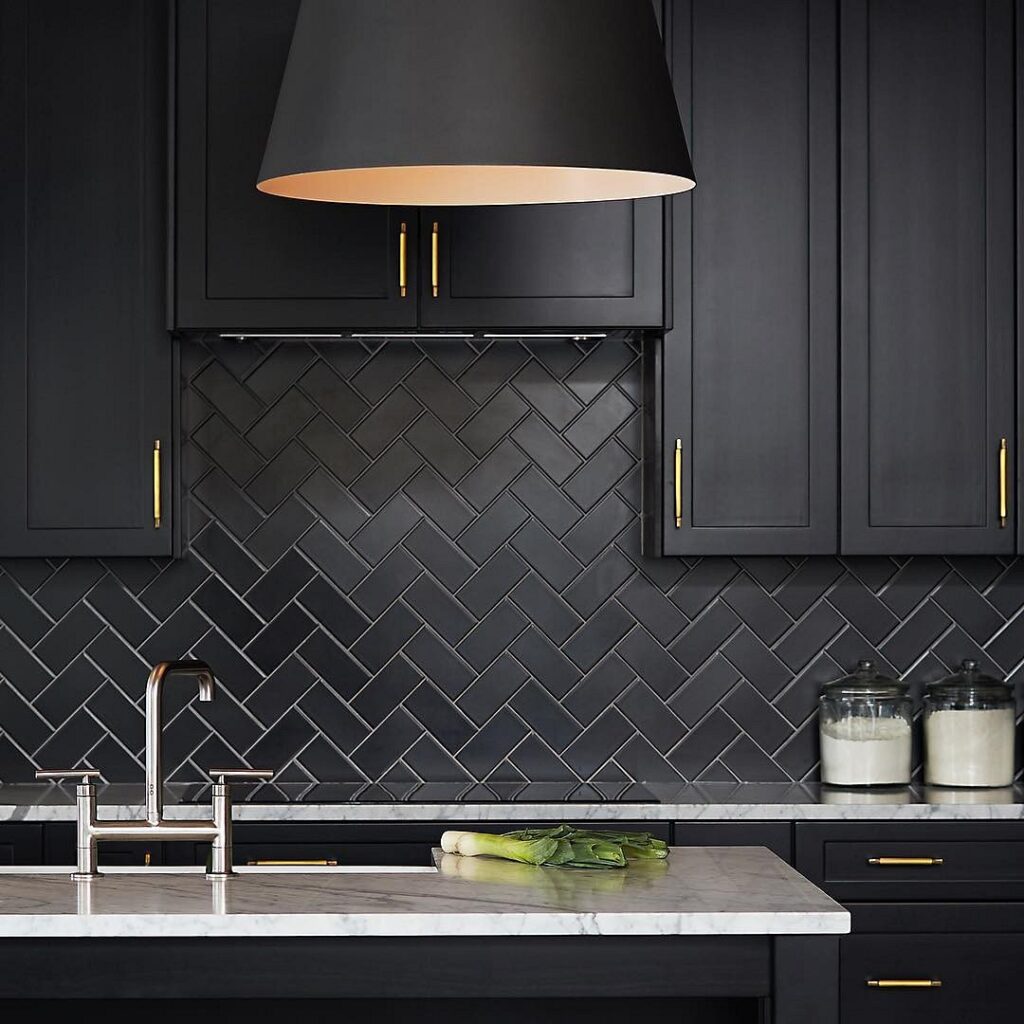
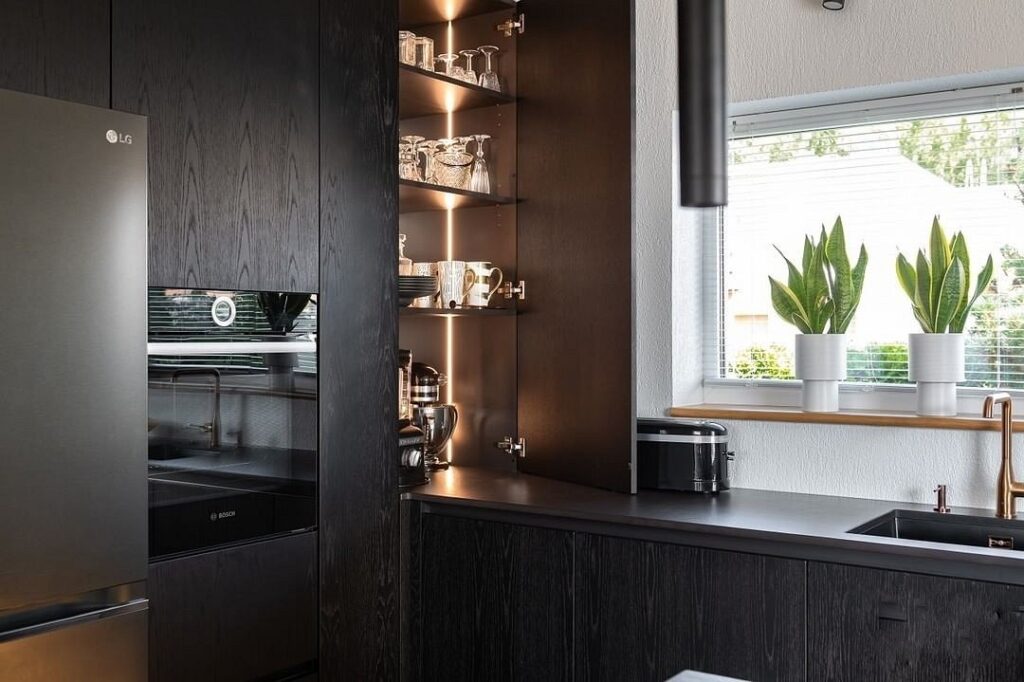
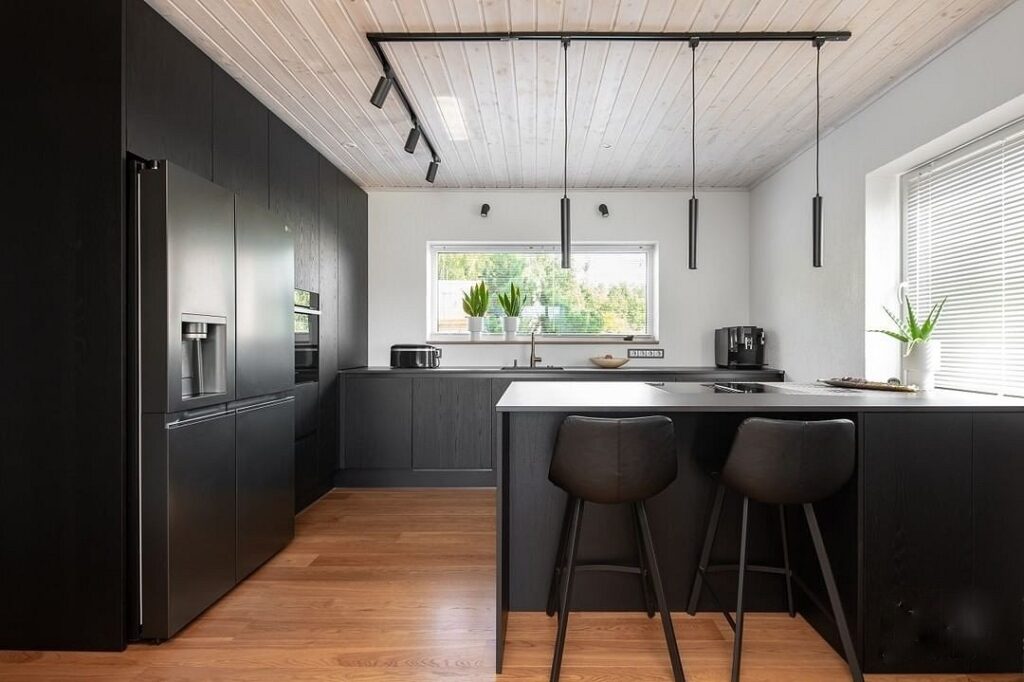
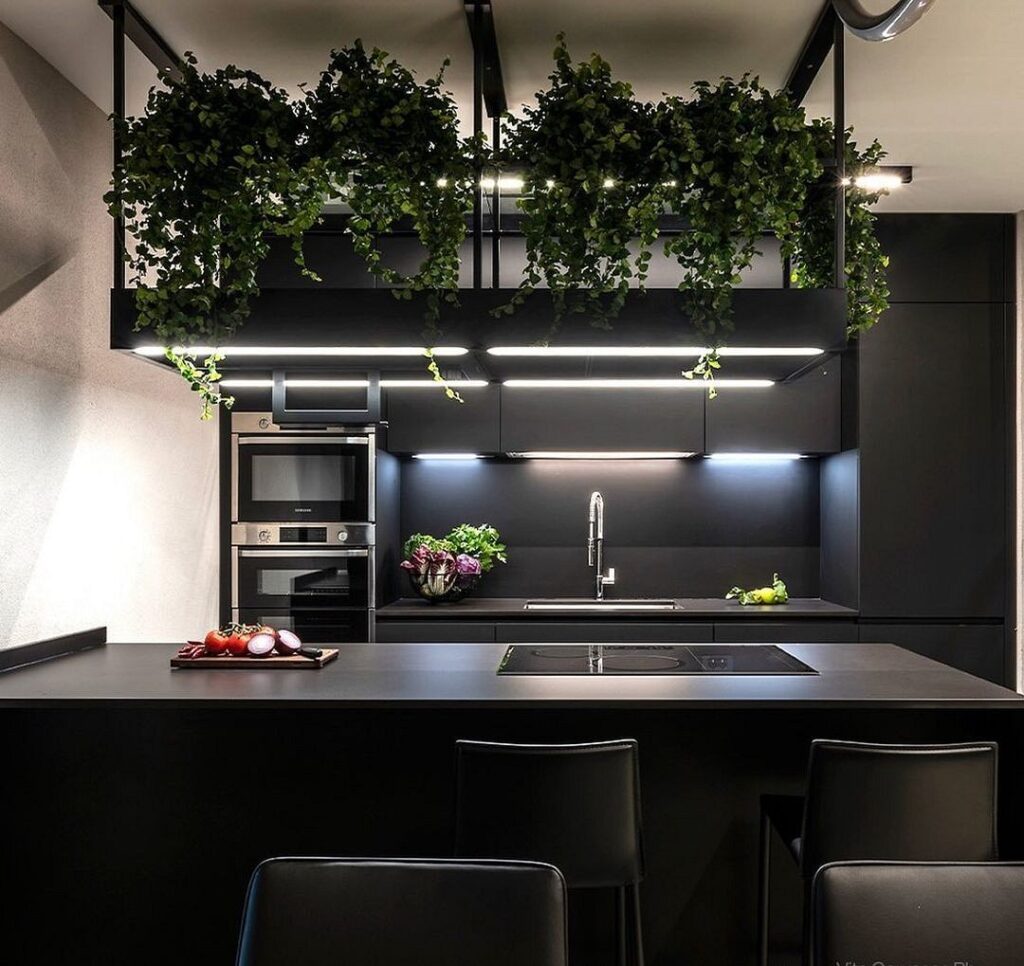
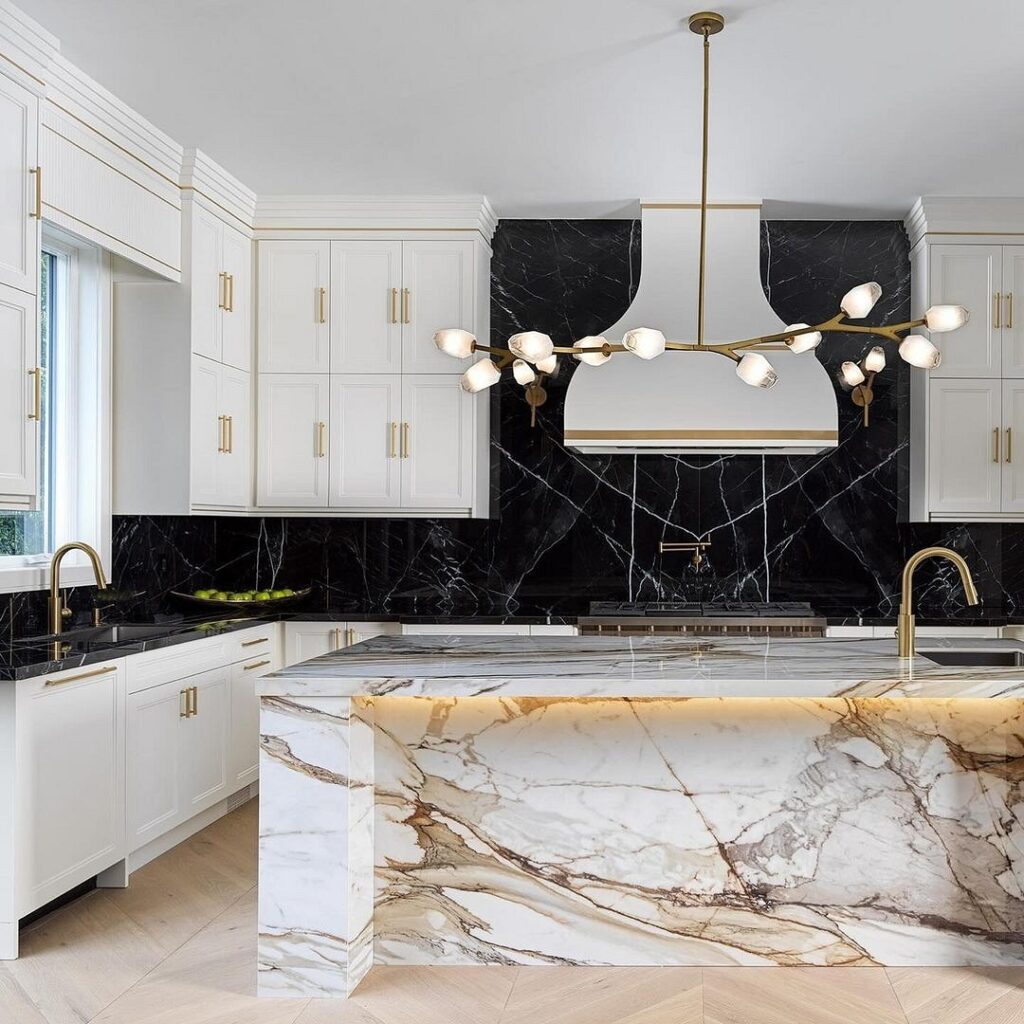

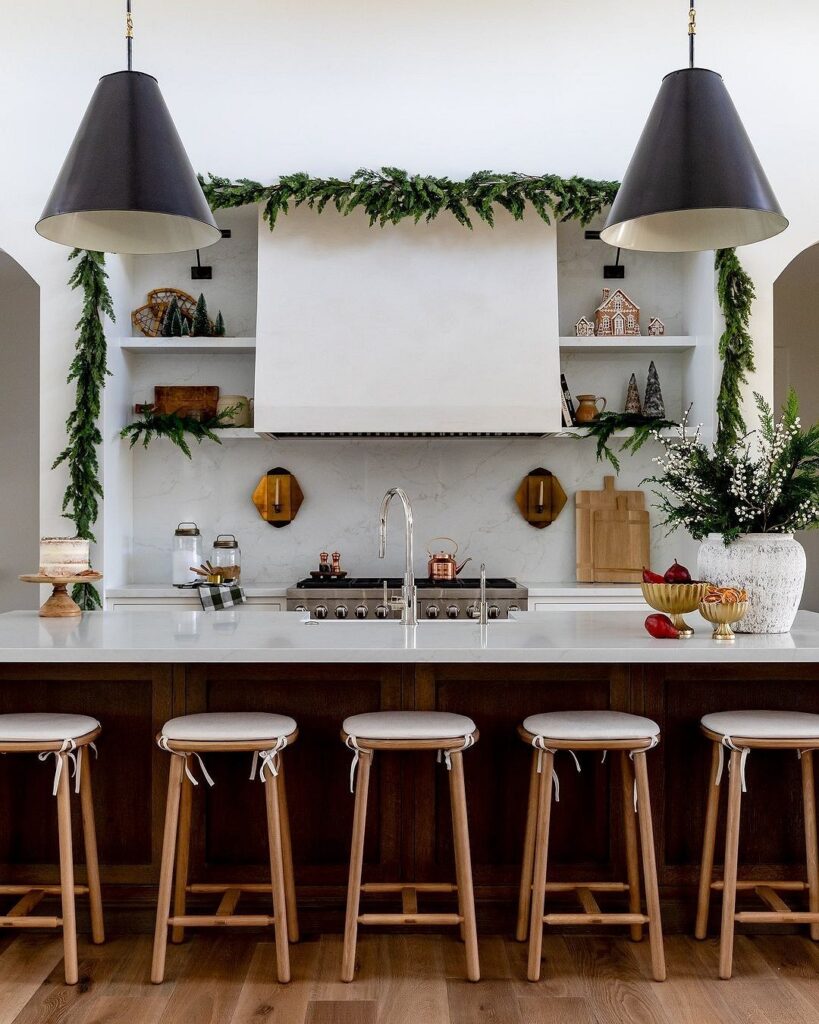

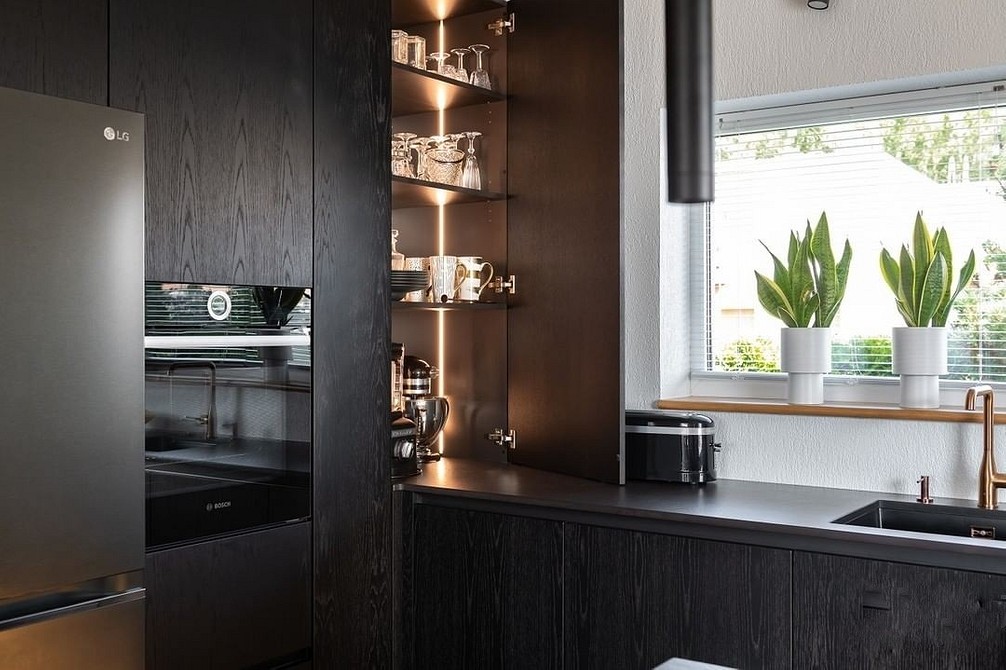
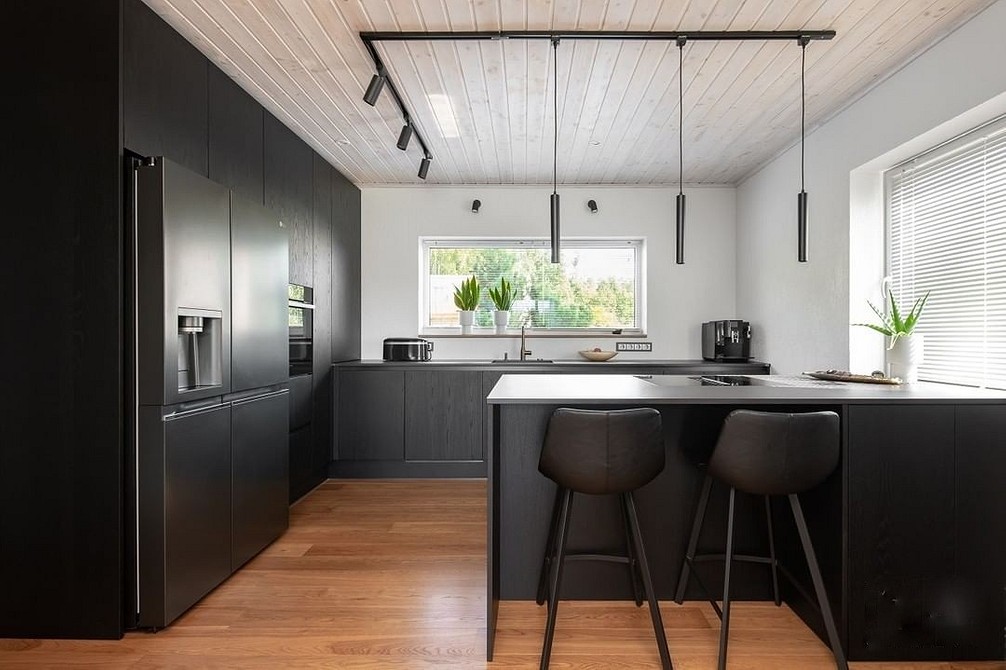
Material Selection
The darkest shades are commonly found in popular and affordable materials like MDF, particleboard, hardboard, and their equivalents. Sufficiently rich coal shades can also be achieved by painting solid wood.
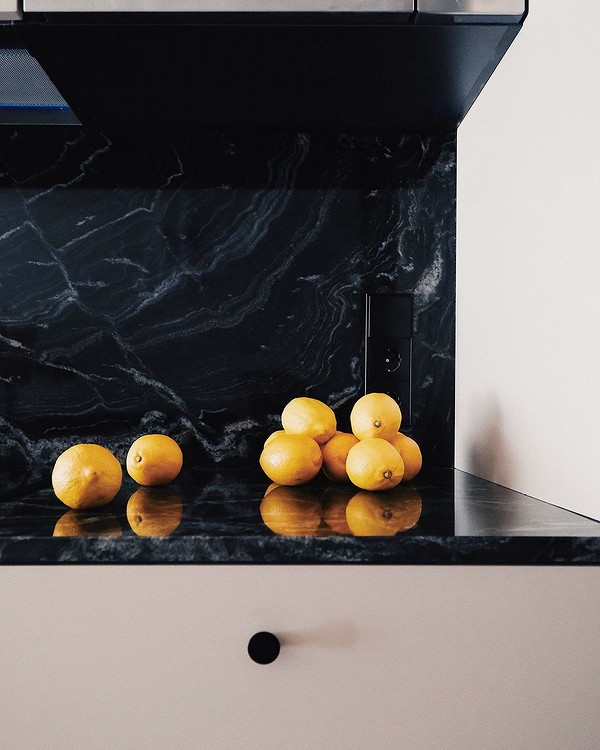
The most expensive materials, due to their inclusions and veining, will be stone and marble. Choosing black marble for a kitchen creates a unique look, as countertops and backsplashes from it are covered with a distinctive pattern of white lines.
It’s important to understand that not all materials combine well with each other. If the kitchen has black stone (artificial or natural), wood, and glass, it’s a good combination. However, trying to match cheap particleboard or a steel sink with a marble-like work surface can look strange and inappropriate. The entire setting should be from approximately the same price range for it to look harmonious.
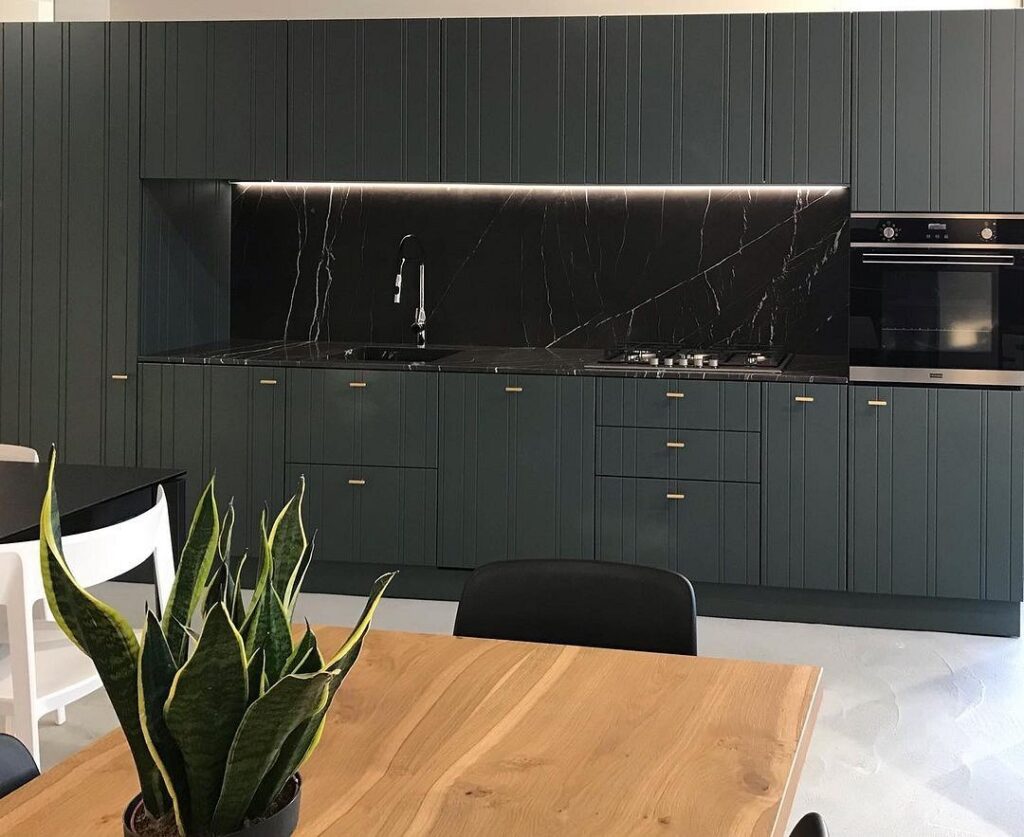
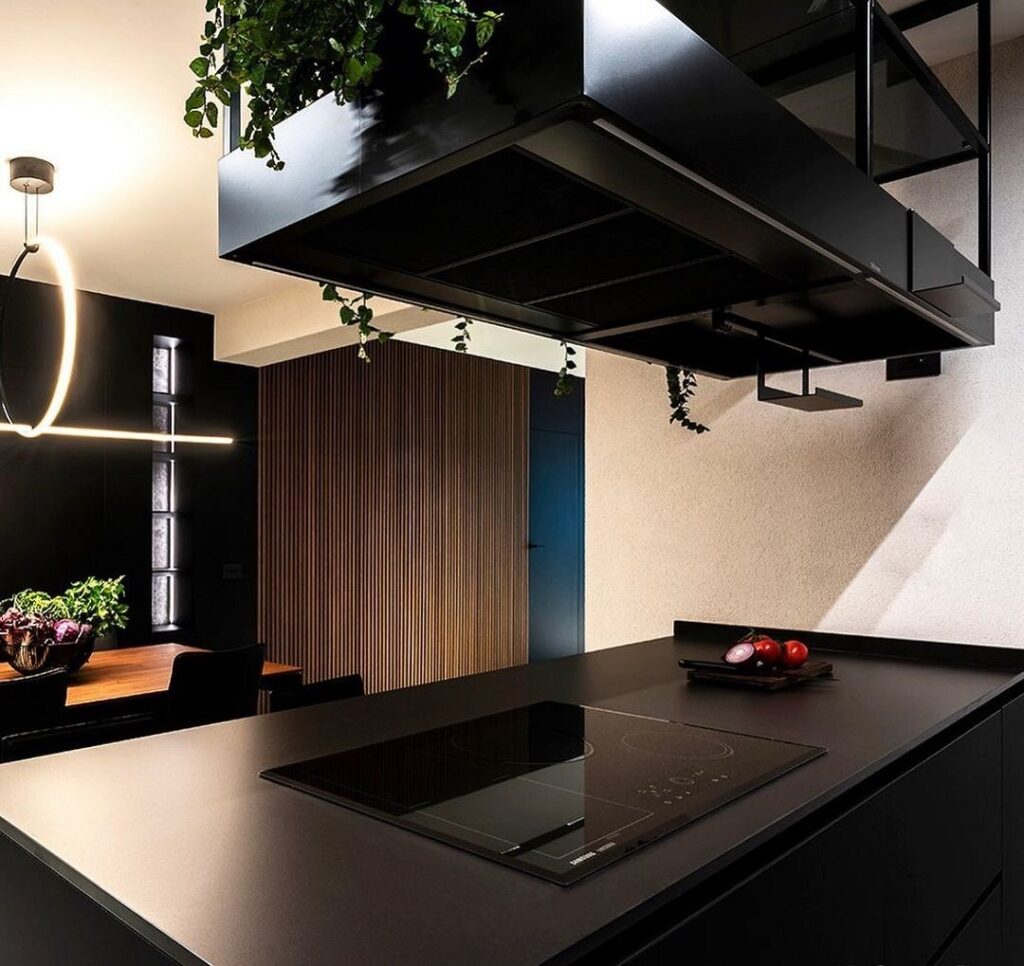

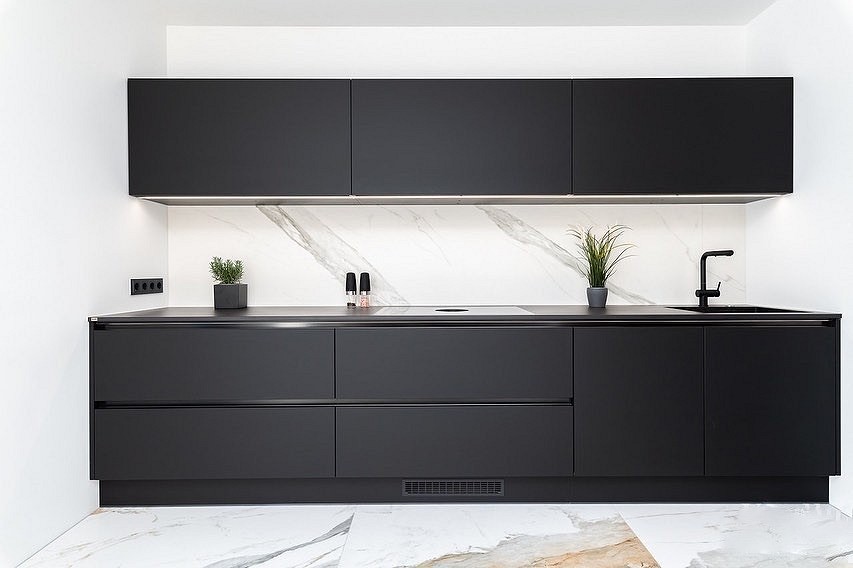

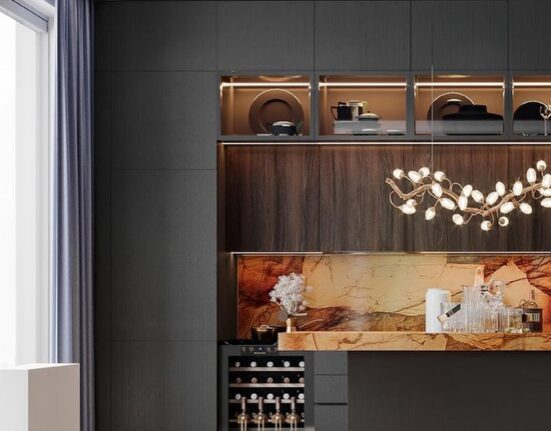
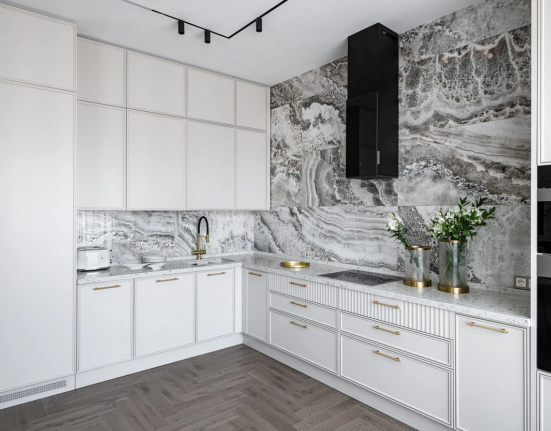
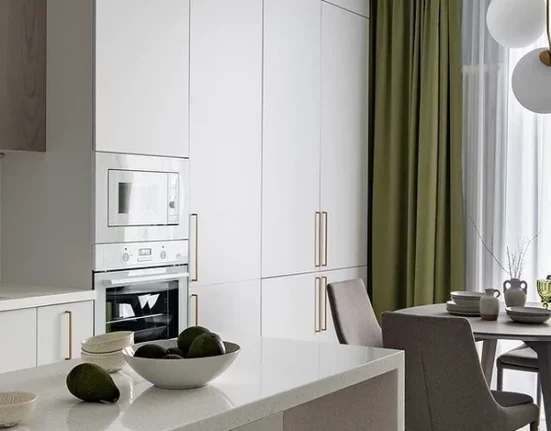
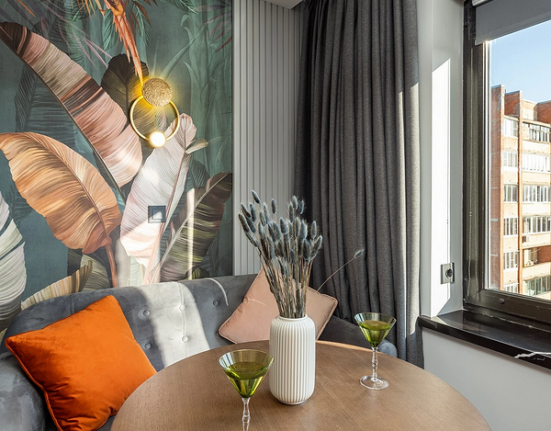
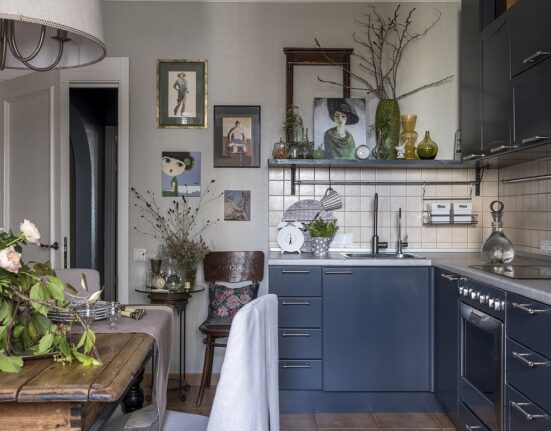
Leave feedback about this